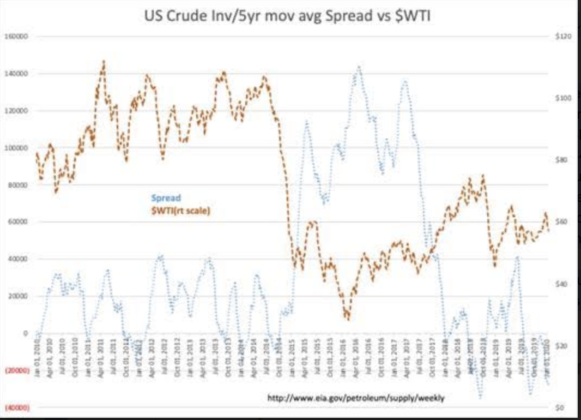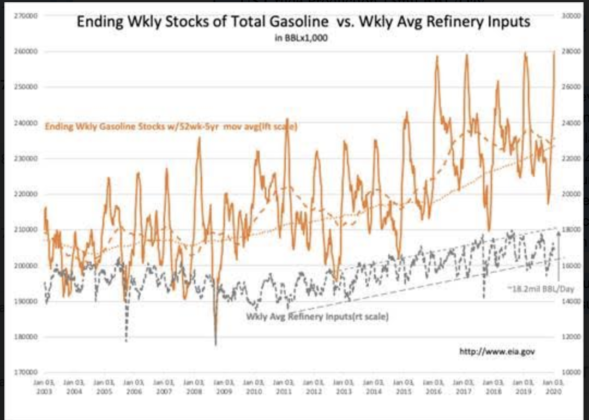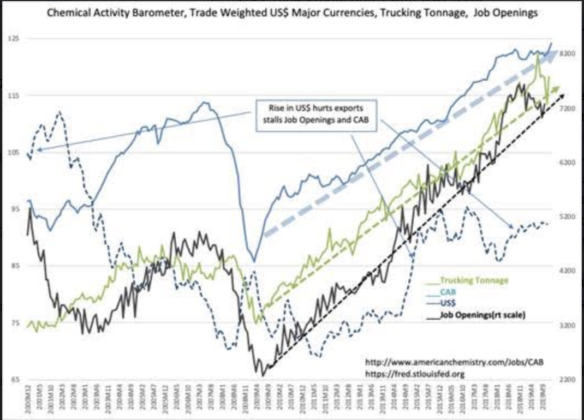- 03/16/2021 – If this is true, then it is not good to invest in oil industry; or, is it article just a propagadar for renewable energy? I need to investigate it
Fossil Fuels Are Wildly More Expensive Than Previously Thought, Study Says
Overinflated fossil fuel investments might be a ‘worthless’ bubble waiting to trigger the next crash, while renewables seem more appealing than ever.
A new study finds that conventional electric power plants powered by fossil fuels and hydro are massively overvalued by the world’s leading analyst organizations. The report says they are overvalued to such a degree that the trillions of dollars of investment in these industries could amount to a “bubble” similar to the subprime mortgage housing bubble whose collapse triggered the 2008 financial crash.
- 03/16/2021 – watch out the future price calculation method change in Brent crude
Crude-Oil Price Overhaul Hits Delay Amid Shipping-Cost Uproar – WSJ
Platts defers plan to include West Texas oil prices in its basket of international crudes following pushback from industry
Prices of Texas oil were going to be included in assessments of Brent crude, the benchmark price underpinning the world’s most important commodity market, starting in July 2022. That has been delayed by data provider S&P Global Platts after the energy industry pushed back on key details, in particular who would pay for freight costs.
The proposed change was meant to reflect the growing importance of U.S. exports in global energy markets.
- 03/15/2021 – U.S. shale firms vow to strict capital discipline and only small increase of production (from 6.5 million barrels per day (bpd) in 2020 to 7.2 million bpd in 2021), although oil prices have rallied this year. EIA expects U.S. production in 2022 at 12.0 million bpd, up by 500,000 bpd compared to the February STEO forecast because of higher expected crude oil prices.
The Big OPEC+ Gamble Appears To Be Paying Off
U.S. oil firms focused exclusively on the shale patch are expected to only marginally increase their combined production this year compared to 2020, according to Bloomberg Intelligence data of listed companies—a sign that OPEC+ could be right, at least for now, that $70 oil would not unleash a massive production increase from the United States.
According to Bloomberg Intelligence data, the largest listed U.S. shale firms who have no production outside America are set to raise their production from 6.5 million barrels per day (bpd) in 2020 to 7.2 million bpd in 2021—a modest increase compared to the previous two boom-and-bust cycles.
Most public U.S. shale firms continue to vow strict capital discipline, although oil prices have rallied this year and WTI Crude is currently trading at over $65 per barrel. Major listed companies promise that any excess cash flow will go to additional payouts to shareholders, who have seen years of meager returns while the shale patch was chasing drilling and production records.
However, smaller privately held oil firms are benefiting from higher oil prices as their primary way of generating cash is increased production. This could spoil the oil management policy of the OPEC+ group again. The plans of smaller shale drillers remain “an open-ended question,”
Current oil prices are high enough to warrant increased U.S. shale activity in the second half of the year if prices hold around these levels, JP Morgan said last week.
“At current prices, most U.S. onshore operators are economic, leaving a vast group of operators, from large public companies to private players, in good position to ramp up activity in 2H21 and build solid momentum for higher volumes in 2022,” analysts at JP Morgan said in a weekly note as carried by Reuters.
The EIA still sees U.S. crude oil production this year slightly down from last year, at 11.1 million bpd in 2021 compared to 11.3 million bpd in 2020. However, in its latest Short-Term Energy Outlook published last week, EIA expects U.S. production in 2022 at 12.0 million bpd, up by 500,000 bpd compared to the February STEO forecast because of higher expected crude oil prices.
- 03/14/2021 – the oil and commodity supercycle might only occur when a major economy such as the U.S. or China undergoes rapid industrialization or urbanization, creating demand for raw materials that existing supplies struggle to meet. If there is no new US infrustructure plan, it is very difficult to have this supercycle. Even though there might be supercycle, it might not prolonged since When resources’ prices swing higher for an extended period, one of three things happens. The first is an economic shock, such as the recession in the 1970s, caused in part by the Arab oil embargo. The second is a rush of supply as miners, energy producers and farmers seek to cash in. Over time, people switch to cheaper alternatives. – does this mean that if oil and commodity price shoot up too fast, I might need to think about getting out fast? Also, please note that Adjusting for inflation, U.S. crude prices in 2020 were well below their peaks from 2008 and 1980, though they were more than double the 1945 level. – so there might still be quite some room for oil/commodity to run up? The current outlook for commodity prices is especially complicated because of a number of competing forces. The production cuts and a recovery in demand in China and India have helped oil prices rebound since crashing last spring. Brent crude futures have gained a third this year to about $69 a barrel. Some investors are betting they could surpass their all-time high of $148 a barrel in 2008. U.S. production won’t keep up with the recovery in consumption due to restrictions on drilling on federal lands and belt-tightening by producers, said Christyan Malek, head of oil and gas research at JPMorgan Chase & Co. Cutting emissions at wells will boost production costs, and big oil companies are investing in renewable-energy sources instead of crude, he added. The world’s biggest independent oil trader doesn’t see an imminent supply crunch. “We have plenty of reserves in the ground, we have plenty of refining capacity and we have plenty of ships to move oil,” – A number of competing forces to affect the oil price, hard to predict. Some investors are betting they could surpass their all-time high of $148 a barrel in 2008.
Commodities Supercycle Looks Like a Stretch – WSJ
Some investors are betting prices will surge over a long period, but history suggests the conditions aren’t right
Commodity markets are roaring, stirring a debate about whether prices are headed for an extended upswing. The history of booms and busts in raw materials suggests the conditions aren’t right.
A prolonged upturn would present investors with an opportunity to make money from long-term bets on exchange-traded products that track commodity prices. Such vehicles bloomed in popularity when commodity markets soared in the 2000s and early 2010s, only to fall out of favor when prices tanked in 2014.
But the chances of commodity prices rising in tandem over a long period are slim. Such cycles are rare. They have occurred when a major economy such as the U.S. or China undergoes rapid industrialization or urbanization, creating demand for raw materials that existing supplies struggle to meet.
When resources’ prices swing higher for an extended period, one of three things happens. The first is an economic shock, such as the recession in the 1970s, caused in part by the Arab oil embargo. The second is a rush of supply as miners, energy producers and farmers seek to cash in. Over time, people switch to cheaper alternatives.
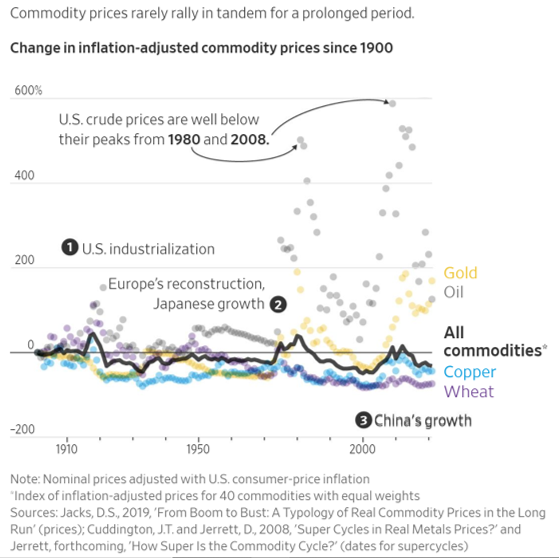
Adjusting for inflation, U.S. crude prices in 2020 were well below their peaks from 2008 and 1980, though they were more than double the 1945 level, according to data compiled by Mr. Jacks. Inflation-adjusted grain prices have dropped since World War II due to advances in crop science, Mr. Jacks said.
“Is there anything out there like that now? I don’t see it,” Mr. Jerrett said.
The China-led supercycle kicked off with crude-oil and copper prices at their lowest level in more than a decade. That isn’t the case now: Copper prices, for instance, are close to record highs.
The current outlook for commodity prices is especially complicated because of a number of competing forces.
A big unknown is how the drive to cut carbon emissions shifts supply and demand for different commodities. Switching to cleaner sources of energy will likely turbocharge purchases of materials such as copper and nickel, bulls contend. Before those efforts choke off demand for gasoline and diesel, a dearth of investment in the oil industry could buoy crude prices, too.
For now, however, the oil market remains on life support from members of the Organization of the Petroleum Exporting Countries and Russia, which are holding millions of barrels of crude in the ground each day to bolster prices.
The production cuts and a recovery in demand in China and India have helped oil prices rebound since crashing last spring. Brent crude futures have gained a third this year to about $69 a barrel. Some investors are betting they could surpass their all-time high of $148 a barrel in 2008.
U.S. production won’t keep up with the recovery in consumption due to restrictions on drilling on federal lands and belt-tightening by producers, said Christyan Malek, head of oil and gas research at JPMorgan Chase & Co. Cutting emissions at wells will boost production costs, and big oil companies are investing in renewable-energy sources instead of crude, he added.
The world’s biggest independent oil trader doesn’t see an imminent supply crunch. “We have plenty of reserves in the ground, we have plenty of refining capacity and we have plenty of ships to move oil,” said Giovanni Serio, head of research at Vitol.
- 03/10/2021 – Tepper adds some energy companies: OXY (2%),XLE (1.77%), XOP, KMI, ET on Q4 2020
Tracking David Tepper’s Appaloosa Management Portfolio – Q4 2020 Update
This quarter, Tepper’s 13F portfolio value increased ~18% from $5.66B to $6.69B. The number of holdings increased from 31 to 44. The top five positions are T-Mobile US, Amazon, Micron Technology, Facebook, and PG&E Corp. They add up ~45% of the portfolio.
New Stakes:
Occidental Petroleum (OXY): OXY is a ~2% of the portfolio stake established this quarter at prices between ~$8.90 and ~$21.30 and the stock currently trades well above that range at $31.23.
Qualcomm (QCOM) and SPDR Energy ETF (XLE): QCOM is a 1.37% of the portfolio position established this quarter at prices between ~$116 and ~$159 and the stock currently trades at ~$130. The 1.77% XLE stake was purchased at prices between $27.70 and $41.60 and it is now at $52.95.
Note: Qualcomm is back in the portfolio after a quarter’s gap. It is a frequently traded stock in Tepper’s portfolio.
Macy’s Inc. (M), CarMax Inc. (KMX), Kohl’s Corp (KSS), Enterprise Products Partners (EPD), SPDR S&P Oil & Gas ETF (XOP), and iShares MSCI South Korea ETF (EWY): These are very small (less than ~1% of the portfolio each) new stakes purchased this quarter.
Alliance Data Systems (ADS), EQT Corp (EQT), Freeport-McMoRan (FCX), MPLX LP (MPLX), Magellan Midstream (MMP), Dragoneer Growth Opportunities (DGNR), and Kinder Morgan (KMI): These are minutely small (less than ~0.5% of the portfolio each) new positions established this quarter.
Energy Transfer LP (ET): Energy Transfer Partners merged with Energy Transfer Equity and the resulting entity was renamed Energy Transfer LP (ET). The transaction closed last January, and terms were 1.28 shares of ETE for each ETP. Tepper held shares in both and those got converted to ET shares. There was a stake doubling in Q4 2019 at prices between $11 and $13. Next quarter saw another ~45% stake increase at prices between $4.55 and $13.75. Last two quarters also saw a ~60% stake increase at prices between $5.11 and $7.15. The stock is now at $8.15 and the stake is at 2.22% of the portfolio.
- 03/10/2021 – should I look at some individual oil companies for possible better return?
Crude oil prices close higher on economic outlook, plunging fuel inventories
- All 11 S&P sectors trade higher today, with energy (XLE +2.7%) taking the lead and extending its YTD gain to 38%, as the outlook continues to brighten for the pandemic-hit global economy.
- Gains in oil and gas names accelerated following a modest turnaround in crude oil prices after the latest weekly inventory report showed a big build; April WTI crude (CL1:COM) closed +0.7% to $64.44/bbl, while May Brent (CO1:COM) settled +0.6% to $67.90/bbl.
- Among today’s noteworthy stock winners in the sector: RIG +19.1%, HFC +6.2%, VLO +6%, MPC +4.4%, PSX +4.2%, KMI +3.9%, XOM +3.2%, COP +3%.
- Gains in gas E&Ps are particularly striking, including SWN +13.9%, AR +12.2%, RRC +9.1%, COG +3.8%.
- ETFs: USO, XLE, UCO, XOP, VDE, GUSH, OIH, ERX, BGR, BNO
- The U.S. Energy Information Administration reported that U.S. gasoline stocks fell by a much more than expected 11.9M barrels last week, and distillates fell 5.5M barrels, but crude oil stockpiles jumped 13.8M barrels, far exceeding forecasts for a 816K-barrel increase.
- The OECD raised its outlook for global economic growth to 5.6% for this year and 4% for next year, after previously forecasting 2021 growth of 4.2%.
- “When it comes to lifting market sentiment, there is very little that can rival an upgrade to the post-COVID economic recovery,” says PVM’s Stephen Brennock.
- 03/09/2021 – large inventory build is not good, even though with large draw
Oil Prices Slide On Yet Another Surprise Inventory Build
The American Petroleum Institute (API) reported on Tuesday a build in crude oil inventories of 12.792 million barrels for the week ending March 5.
Analysts had predicted an inventory build of 816,000 barrels for the week.
In the previous week, the API reported a major build in oil inventories of 7.356-million barrels after analysts had predicted a 928,000-barrel draw. But that was nothing compared to the EIA’s report a day later of a 21.6 million barrel build.
It is unclear whether today’s reported stock build is part of EIA’s large build reported last week, or whether we will see another large build from the EIA tomorrow.
The API reported another large draw in gasoline inventories of 8.499 million barrels for the week ending March 5—on top of the previous week’s 9.933-million-barrel draw. Analysts had expected a 3.467-million-barrel draw for the week.
Distillate stocks saw a large decrease as well, of 4.796 million barrels for the week, after last week’s 9.053-million-barrel decrease.
Cushing inventories rose by 295,000 barrels. Last week, inventories at the Cushing oil hub increased by 732,000 barrels.
- 03/09/2021 – he might have some good points on oil
I think oil is the play for a couple months…
As states begin to open up we use more oil. Last week it was Texas and Idaho, on the weekend it was Arizona and West Virginia more states open on the weekly. More traveling more spending.
Schools are opening up. The work from home families are gonna be driving to drop the kids off.
Airlines are announcing more flights are being scheduled for an increase in demand.
Construction projects start in spring and go through summer.
Cruises announced they’ll be starting trips with fully vaccinated travelers.
Speaking of vaccinated. Vaccines are rolling out ahead of schedule, so move the opening up times sooner.
We also started droning the middle east again. The military runs on oil.
But the biggest indicator of an oil boom. Is oil literally going boom. Saudi Arabia was attacked, and we all know SA is a US ally.
on top of alllllllll this. The biggest case for an oil boom, is, inflation of the petro-dollar. The US with all its military power has bestowed upon itself the currency in which oil is traded. We take out anyone who tries to trade using other currency *cough cough Gaddafi *
As the next stimulus package is about to be passed, The US Dollar is sure to inflate. The US dollar is no longer on the gold standard, but because the dollar is so tied to oil, it’s essentially on the oil standard. As the US dollar inflates, so must the petro-dollar.
- 03/09/2021 – will we have more demand than supply going forward? hard to predict
How Oil Could Go To $100 Per Barrel
In its February Short Term Energy Outlook (STEO), the EIA forecasts this month’s world oil consumption at 96.7 million barrels per day (mbpd). The oil supply, however, is much lower, only 93.6 mbpd, with the difference of 3.1 mbpd of necessity being drawn from crude oil and refined product inventories. By historical standards, a sustained draw of 3 mbpd is large, and we would expect prices to be rising under such circumstances.
The EIA sees demand continuing to recover at a good pace to mid-year, with July world oil consumption forecast at 98.2 mbpd (but still about 4 mbpd below ‘normal’). This incremental demand is being materially supplied by two sources, Brazil and OPEC. We might accept Brazil’s crude oil production growth as given, allowing that the timing might be off by a month or two. The pivotal question is instead OPEC’s intentions.
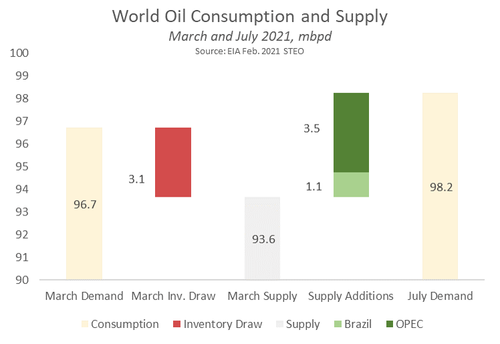
The EIA uses a volume (or demand) driven model, implying that OPEC will passively increase production to meet demand, and thereby keep oil prices low. But why would OPEC do this? If OPEC simply maintained current production levels, the world would be 3.5 mbpd short of supply by mid-year. A shortfall of 3.5 mbpd — 3.6% of global consumption — is a lot. It would rapidly drain remaining excess inventories, leaving only oil prices to mediate between supply and demand just as the world economy is showing both strength and momentum as the pandemic ends. In other words, in the coming months consumers will be prepared to compete for the available barrels of oil, and that should push oil prices up sharply.
Middle East politics are convoluted. The complex interplay of Iran, Saudi Arabia and the United States can produce unexpected results. Were Iran more collected, it could probably bring the US back toward some sort of deal in short order, thereby freeing Tehran to increase oil exports and push down oil prices. On the other hand, the Houthi attack on Saudi oil facilities at the loading port of Ras Tanura may push the Saudis back into the US embrace and motivate the Kingdom to keep oil prices lower to curry favor with the Biden administration.
It is hard to know where the balance comes out. Nevertheless, now is OPEC’s best opportunity to make real money in the short to medium term. They would be fools to let the opportunity slip by.
- 03/09/2021 – almost 5 million bpd of OPEC production has been off the markets since May last year. Bringing any of these barrels back could have triggered prices to fall below $60, reducing cash flows for its members, and resulting in losing the opportunity to compensate for losses made during the pandemic. Now we have two drivers, the OPEC+ cuts and equally important the Saudi voluntary cuts. Generally, we would expect suppliers to be willing to increase production as prices continue to grow, yet when OPEC suppliers will be convinced to do so remains highly uncertain. Statements from the Saudi Energy Minister did confirm that at the last press conference, suggesting that these cuts may continue throughout Q-2 2021, and that these barrels will be brought back in a phased manner. This suggests that prices will be supported by not only the OPEC+ cuts, but also by Saudi voluntary cuts during Q-2 2021. – hard to predict the future move
Saudi Surprise Cut May Have Lasting Effect On Oil Prices
almost 5 million bpd of OPEC production has been off the markets since May last year. Bringing any of these barrels back could have triggered prices to fall below $60, reducing cash flows for its members, and resulting in losing the opportunity to compensate for losses made during the pandemic.
One of the key pillars of support is the rollover of the Saudi million bpd surprise cut in April, and the exemption of Russia to raise production by 130,000 bpd which may have supported the group to reach a consensus.
Furthermore, OPEC+ is not expecting US shale to boost production as prices continue to rise, giving producers an opportunity to compensate for lost revenues while preserving their market share. For shale oil to come back we need (1) to have oil demand returning to pre-pandemic levels, and (2) a sustained level of current prices over an extended period of time. This will be essential to restoring confidence in investing into the shale industry while minimizing risks. Last week’s EIA report showed the US production at 10 million bpd, 3.1 million bpd below its level a year ago. Under the current production scenarios, prices are expected to trade above $70 in March supported by prospects of market over-tightening, the increasing rate of global vaccination, and the increasing likelihood of certain countries returning to pre-crisis normality. Fuel demand in the US is currently improving, especially gasoline and kerosene whose demand rose by 942,000 bpd and 305,000 bpd w/w, respectively, to stand at 8.15 million bpd and 1.29 million bpd, respectively.
Last week, the OPEC+ meeting saw some unexpected results, and it is very hard to predict the next move in April and beyond. Now we have two drivers, the OPEC+ cuts and equally important the Saudi voluntary cuts. Generally, we would expect suppliers to be willing to increase production as prices continue to grow, yet when OPEC suppliers will be convinced to do so remains highly uncertain.
Even if OPEC+ agrees on a production hike in April, Saudi Arabia will likely still not be in a hurry to ease Its voluntary cuts immediately. Statements from the Saudi Energy Minister did confirm that at the last press conference, suggesting that these cuts may continue throughout Q-2 2021, and that these barrels will be brought back in a phased manner. This suggests that prices will be supported by not only the OPEC+ cuts, but also by Saudi voluntary cuts during Q-2 2021.
- 03/09/2021 – Biden government is really pushing on energy trasition, how will it impact oil industry?
Biden’s Energy Secretary To Oil Industry: Adapt Or Die
“I’m not going to sugarcoat how hard transitions are,” new United States Energy Secretary Jennifer Granholm stated on Wednesday. Her comment, made during IHS Markit’s annual CERAWeek conference, was in reference to the clean energy transition that serves as one of the cornerstones of President Biden’s platform, but she could just as easily be talking, in grander terms, about the administrative changeover that she is part of. The new presidential administration has hit the ground running on climate change, with a demonstrative focus on bringing the United States up to speed with the rest of the developed world in terms of leaning into the global green energy transition. While this proactive approach has been lauded as essential and far overdue in some circles, it also has its fair share of critics. Biden’s relatively tough stance on the United States’ massive shale oil and gas industry has stirred up a groundswell of anxiety in many parts of the country that depend on fossil fuel to keep their economies running.
Now, just when oil prices are stabilizing and the shale industry is adjusting to the new normal, the last thing those dependent on the fossil fuel sector want is more adversity. But for Granholm, this view–that the Biden administration is leaving oil and gas workers behind–is a shortsighted one. Instead, she says that oil and gas companies should be jumping at the chance to grow and innovate to stay relevant in the new, increasingly decarbonized global economy. It’s not the Biden administration that’s leaving oil and gas workers behind, the thinking goes–it’s stubborn oil and gas execs. “The bottom line is this particular growth of clean energy and reduction of carbon provides a huge opportunity and I’m extending a hand of partnership,” Granholm said at the CERAWeek conference on Wednesday.
- 03/09/2021 – is OPEC+ playing oil cartel again?
OPEC’s sneaky oil move may leave energy markets thirsty
OPEC has always been ultra-competitive but the cartel’s latest move is downright sneaky and may leave global energy markets thirsty.
The market structure in oil is in what is known as “backwardation,” where nearby futures contracts trade at higher prices than crude in the future, suggest that the oil supply is tight and needs more supply. Right now the backwardation discrepancy is so wide it almost like the market is screaming out for help.
What Is Backwardation?
Backwardation is when the current price—spot—price of an underlying asset is higher than prices trading in the futures market. Backwardation is sometimes confused with an inverted futures curve. In essence, a futures market expects higher prices at longer maturities and lower prices as you move closer to the present day when you converge at the present spot price. The opposite of backwardation is contango, where the futures contract price is higher than the expected price at some future expiration. Backwardation can occur as a result of a higher demand for an asset currently than the contracts maturing in the future through the futures market.
- 03/07/2021 – transient news, no real impact on oil
Brent crude breaks $70 after Saudi Arabia’s oil facilities attacked by Yemen’s Houthis
- 03/07/2021 – great SA articles on oil industry in year 2021
Forget Tech, Forget Renewables, Oil & Gas Run The Show In 2021
OPEC Maintains Cuts, Oil Price Surges, Buy These 8 Stocks Now
Nobody Owns Oil And Gas Stocks Anymore, But Maybe You Should
Clean Energy Vs. Oil & Gas: The Biggest Lie Of 2020
GUSH: Global Energy’s Rebound Likely To Produce Returns In 2021
Drilling Down Oil-Focused Trading Strategies With GUSH
- 03/07/2021 – China is aggresively pursuing LNG
China’s Pursuit of Natural Gas Jolts Markets and Drains Neighbors – WSJ
Beijing’s quest to run world’s second-largest economy on cleaner energy is reshaping global trade in the fossil fuel
China’s quest to anchor its industrial growth to cleaner energy is whiplashing global prices of liquefied natural gas, reshaping trade in the world’s fastest-growing fossil fuel and raising fears of power blackouts in neighboring economies competing for the resource.
A sudden confluence of global supply outages and an unusually cold winter tripled LNG prices in mid-January to a record $32.50 a million British thermal units from early December—and brought into focus China’s increasingly outsize role.
Underpinned by its economic boom and rising presence in LNG spot markets, Beijing’s efforts to shift from coal to gas as a fuel over the longer term has drawn ever-larger LNG imports in recent years, tightening supplies available to gas-dependent neighbors Japan and South Korea. The three economies account for 60% of the world’s LNG consumption.
- 03/05/2021 – Major oil sands producers in Western Canada will idle almost half a million barrels a day of production next month due to major overhaul and maintenance. In addition, Canada’s oil industry is being shunned by some investors such as Norway’s $1.3 trillion wealth fund amid concern that the higher carbon emissions. Both will help increase oil price.
Oil Sands Give OPEC a Boost With Half-Million-Barrel Output Cut
Major oil sands producers in Western Canada will idle almost half a million barrels a day of production next month, helping tighten global supplies as oil prices surge.
Suncor Energy Inc. plans a major overhaul of its U2 crude upgrader, cutting output by 130,000 barrels a day over the entire second quarter. Syncrude Canada Ltd. will curb 70,000 barrels a day during the quarter because of maintenance in a unit.
The supply cuts out of Northern Alberta, following a surprise OPEC+ decision to not increase output next month, could add more support to the recent rally in crude prices.
Adding to its struggles, Canada’s oil industry is being shunned by some investors such as Norway’s $1.3 trillion wealth fund amid concern that the higher carbon emissions associated with oil sands extraction will worsen climate change. These forces help make future growth in the oil sands unlikely, said McKay, whose company is among the largest producers in the country.
- 03/04/2021 – surprise move by OPEC+ to keep lid on oil output, positive for oil
OPEC-Plus Keeps Lid on Oil Output, and Prices Rise – WSJ
Saudi Arabia and Russia have careened between optimism and dire warnings amid pandemic’s ebb and flow
Under the agreement reached Thursday, most members of what is known as the OPEC-plus alliance agreed to keep their output unchanged, with small exceptions for Russia and Kazakhstan, amounting to about 150,000 barrels a day combined. That brings the group’s overall agreed cuts to 6.9 million barrels a day, down from more than nine million barrels a day at the start of the crisis.
The move is a victory for Saudi Energy Minister Abdulaziz bin Salman, who has consistently urged caution on the pace of a global recovery from the pandemic, while also periodically accommodating Russia’s eagerness to open taps wider on any sign of recovery.
- 03/04/2021 – watch out the outcome of this meeting
Saudis, Russia Discuss Joint Oil Output Raise Ahead of OPEC Meeting – WSJ
Two sides are discussing combining forces to supply the world with more crude as prices rise
Ahead of a planned meeting Thursday of the OPEC-plus alliance, Saudi Arabia and Russia have started to narrow the contours of a deal that will be closely watched by oil markets.
The proposal under discussion would commit Saudi Arabia to restoring about 500,000 barrels a day of unilateral cuts it has previously made, the people said. OPEC-plus members would then restore collectively another 500,000 barrels a day, including 125,000 from Russia.
Saudi Arabia and Russia have discussed another scenario for the broader group, these people said, which would call for OPEC-plus to keep production mostly throttled back.
The added production under discussion is less than some market watchers had hoped
- 03/03/2021 – oil might have more room to rise since (1) low long/short ratio; (2) shrunk supply and inventories (3) downward forward curve; (4) demand on the rise due to economic recovery; (5) numbers of drill rig is less than half of year 2020. However, there is a possible short term headwind: OPEC+ might unwind some of its production cuts on March 4- could this be my another entry point?
How the Oil Market Bounced Back From a Year of Crisis – WSJ
A fall in stockpiles, restraint among U.S. producers and the speedy recovery in Asian demand have driven the rally
Traders and analysts say supply and demand, rather than speculation, have underpinned the rally so far. The ratio of positions held by money managers in WTI futures and options contracts who expect oil prices to rise, versus those who expect them to fall, is below levels seen during the last big run-up in oil prices in 2018. That suggests investors aren’t in the driving seat.
Analysts say that may change if money managers pile into the oil market to bet on the reopening of economic activity.
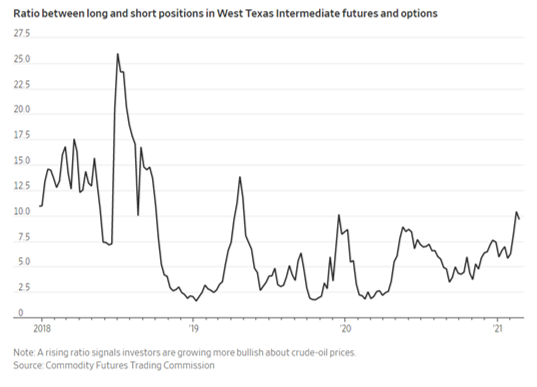
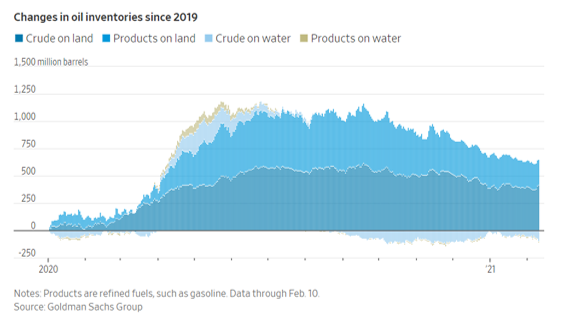
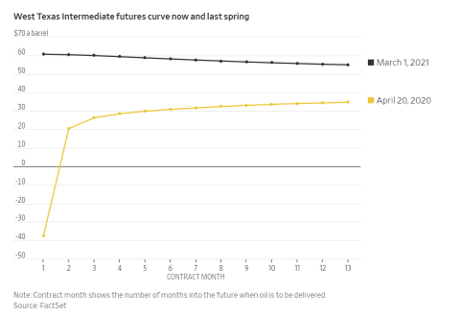
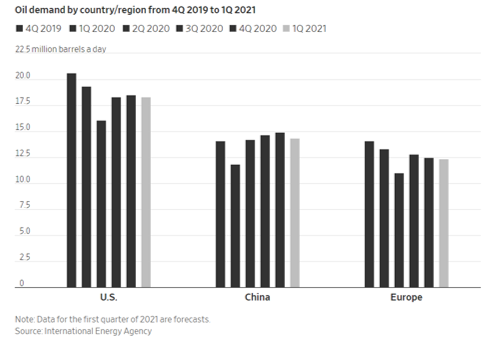
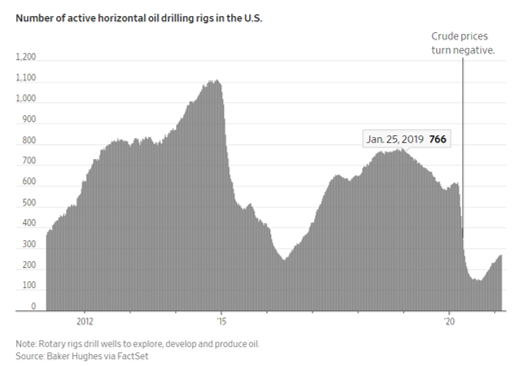
- 03/02/2021 – activists are pushing oil companies to lock more value
Exxon Adds New Board Members Amid Activist Pressure – WSJ
Oil giant says Jeffrey Ubben and Michael Angelakis would join its board, but Engine No. 1 plans to continue proxy fight
Exxon Mobil Corp. XOM -0.24% added two new directors to its board Monday, as the beleaguered energy company tries to fend off calls for change from a pair of activist investors.
The Texas oil company said activist investor Jeffrey Ubben would join its board, along with Michael Angelakis, the chief executive officer of Atairos Group and former chief financial officer of Comcast Corp.
Exxon CEO Darren Woods said the new directors were part of a continuing effort to refresh the company’s board and reflected ongoing talks it is having with investors
- 03/02/2021 – The downside risk that the energy transition can bring to oil prices is calculated to as much as $10 per barrel in the long term
- The biggest oil firms cut thousands of jobs each
- Big Oil also slashed capital expenditure (capex) plans and continues to vow spending discipline. Many of the companies have accelerated the high-grading of their portfolios, selling non-core businesses and assets,
- Sales of non-core assets are likely to accelerate as companies would look to focus operations on the regions they have identified as key to their cash flow and return on investment generation. Such sales could also accelerate debt reduction, which has ballooned over the past year, according to Wood Mackenzie.
- he ultra-conservative capital spending plans and the huge cost cuts have allowed international oil companies (IOCs) to materially lower their cash flow breakevens
- easy monetary policies from governments to boost economies, and oil as a hedge against inflation for investors would lead to oil prices averaging around $60 a barrel this year, with possible spikes to $70 and even $75 before or during the summer.
Energy Transition Could Cut Oil Prices By $10 Per Barrel
The back-to-back downturns that exploration and production companies (E&Ps) have faced during the past decade have accelerated the energy transition, adding to growing social and regulatory demands for greener energy solutions. This is putting the resilience of global upstream portfolios under pressure. Energy transition experts on Rystad Energy’s upstream team have now quantified the long-term risk of this change to oil prices and to the net present value (NPV) of global oil and gas portfolios.
In an analysis marathon that has generated a series of three commentaries and a report to its clients, Rystad Energy has assessed the way E&Ps are navigating the energy transition, based on energy diversification, portfolio resilience and decarbonization. While the full in-depth findings are not going to be made public outside our client portal, in this press release we are offering a glimpse of our portfolio resilience findings.
The downside risk that the energy transition can bring to oil prices is calculated to as much as $10 per barrel in the long term, meaning oil prices could end up $10 lower in the future than they otherwise would if the transition to cleaner energy speeds up.
- 02/28/2021 – oil price is inverse to dollar price
Oil prices fall as strengthening dollar impacts commodities
Oil fell the most since November with a stronger dollar and concerns surrounding inflation weighing on crude’s best start to the year on record.
Futures in New York declined 3.2% on Friday, with a rising dollar reducing the appeal of commodities priced in the currency. Yet, the U.S. crude benchmark still managed to post a nearly 18% gain this month as inventories worldwide tighten and pockets of demand return. Domestic crude production dropped in 2020 for the first time in four years, according to the U.S. government.
“Prices have a little bit more risk to the downside from the recent run that we’ve seen,” said Tariq Zahir, managing member of the global macro program at Tyche Capital Advisors LLC. “To continue going higher from here, demand has to come back pretty substantially.”
- 02/28/2021 – “The scale of the financial reset has primed the sector for a recovery in free cash flow. At an average price of US$55/bbl, we estimate free cash flow generation could top US$140 billion in 2021 – exceeding any previous year since 2006. If oil prices reach US$70/bbl, free cash flow would be double the previous peak,”
Why Big Oil Expects Record Cash Flow In 2021
The world’s largest oil companies are set for a cash flow bonanza this year, probably at record levels, as massive cost cuts in the wake of the 2020 oil price and oil demand collapse have significantly lowered the corporate cash flow breakevens for many firms.
After posting record losses in 2020, a year which company executives described as one with “the most challenging market conditions,” Big Oil is looking at 2021 with increased optimism, mostly because oil prices have rallied in recent weeks. Moreover, the ultra-conservative capital spending plans and the huge cost cuts have allowed international oil companies (IOCs) to materially lower their cash flow breakevens.
These factors are set to result in a record cash flow for the biggest oil firms this year if oil prices average $55 per barrel, Wood Mackenzie said in new research.
Currently, investment banks largely believe that a tightening oil market, easy monetary policies from governments to boost economies, and oil as a hedge against inflation for investors would lead to oil prices averaging around $60 a barrel this year, with possible spikes to $70 and even $75 before or during the summer.
“The scale of the financial reset has primed the sector for a recovery in free cash flow. At an average price of US$55/bbl, we estimate free cash flow generation could top US$140 billion in 2021 – exceeding any previous year since 2006. If oil prices reach US$70/bbl, free cash flow would be double the previous peak,” Ellacott says.
- 02/24/2021 – The Texas Freeze knocked out as much as 4 million bpd of U.S. oil production and 6 million bpd of refining capacity last week, IHS Markit said.
How Hard Did The Texas Freeze Hit U.S. Shale Production?
U.S. shale oil production in the first quarter will be lower than previously expected because of the sub-zero temperatures and snowstorms that put Texas in the spotlight last week and pushed oil prices higher.
Reuters cites several shale oil producers, including Occidental and Diamondback Energy, which expect a slow recovery in production as frozen pipelines and well equipment removed some 2 million bpd from the U.S. total.
What’s more, some of the lost production may never return because it would be too expensive to restart some smaller wells, analysts said. The wells that will be restarted will need about two weeks, according to the oil companies Reuters talked to.
The news of lower output for longer pushed oil prices up by $1 on Tuesday in Asian and European trading, helped by continuing vaccine optimism.
“The positive momentum continues in the oil complex, with investors unabashedly predisposed to a bullish view,” Reuters quoted the chief global markets strategist of Axi, Steven Innes, as saying.
Refineries along the Texas Gulf Coast are also restarting after the outages that took more than two million barrels in daily refining capacity offline.
Saudi-owned Motiva, the largest refinery in the U.S., notified the Texas Commission on Environmental Quality that it would begin a 17-day restart process on Monday.
Marathon Petroleum also began restarting the shut down units of its refinery in Galveston, and Exxon is also preparing to bring its shut down facilities back online.
The Texas Freeze knocked out as much as 4 million bpd of U.S. oil production and 6 million bpd of refining capacity last week, IHS Markit said. The production outages have created a tighter supply situation that has been absent for most of the pandemic, boosting prices.
Yet even before the Freeze, OPEC and U.S. oil industry insiders expected shale production to be slow to rebound from the pandemic lows as companies remain cautious with their spending plans.
- 02/23/2021 – BofA is bullish on oil companies: factors including continuing capital restraint from U.S. shale producers against the backdrop of positive commodity pricing, stable production, rising cash margins and low reinvestment are supportive of positive free cash flow profiles. But there’s still volatility ahead, not only from commodity prices but also headwinds on the political/regulatory front. Recommended stocks: FANG, OVV, CNQ, SU, ENB
BofA eyes beta as its sees more room for energy rally to run
- A strong energy rally from last quarter still has legs, BofA says, pointing to factors including continuing capital restraint from U.S. shale producers against the backdrop of positive commodity pricing.
- The Exploration and Production SPDR ETF (NYSEARCA:XOP) is over 70% vs. the market since early November, the analysts note. But hearing company strategy outlooks in fourth-quarter earnings calls so far is boosting the feeling that there’s more upside.
- There’s an emerging “rate of change” story driven by commodity tailwinds and efficiency gains, BofA says – and stable production, rising cash margins and low reinvestment are supportive of positive free cash flow profiles.
- But there’s still volatility ahead, not only from commodity prices but also headwinds on the political/regulatory front (though it says impacts there will vary widely across basins/operators, calling for an increased focus on stock selection).
- BofA is changing up the deck and its strategy for the sector. “Given a more positive backdrop (versus last year), we continue to suggest more ‘beta’ in our stock-specific barbell investment strategy involving (1) beaten up rebound names with low breakeven/oil torque and (2) defensive names with dividend visibility.”
- Its Commodity team now sees an average Brent crude price of $60/barrel in 2021, with a top at $70/bbl, after an originally bullish view of $60 Brent largely played out. The new view incorporates OPEC Plus extending its supply cut deal (pulling an extra 180M barrels out of the market) as well as the Texas freeze, which should pull an additional 50M barrels out.
- In the current environment, it prefers five names: Diamondback Energy (FANG; “oil torque, step change in capital efficiency following recent acquisitions with increasing Midland pivot, zero federal land exposure”); Ovintiv (OVV; “oil torque, clear progress in debt pay down, well defined capital allocation framework, <1% federal land exposure”); Canadian Natural Resources Ltd. (CNQ; “oil torque, sector-leading FCF breakeven, FCF/EV >10%); Suncor (SU; a “2021 turnaround story”); and Enbridge (ENB; “beneficiary of underappreciated heavy oil demand pull”).
- A price target of $87 on Diamondback implies 22.5% upside from current pricing.
- 02/22/2021 – Goldman predicts oil at $75 due to the following reasons
- OPEC+ will fall behind the market rebalancing, especially as the pace of global drawdowns of stockpiles has accelerated
- There are no signs of more activity from most non-OPEC+ producers outside of North America, creating a risk supply will fall 900,000 barrels a day short of the bank’s estimates in the coming year
- The U.S. earnings season confirms that big explorers and producers, the key drivers of U.S. shale output, remain focused on returning cash to shareholders
- Indications from the U.S. government suggest Iranian output likely won’t increase in the short term
Goldman Sees Brent Oil at $75 as Supply Response Trails Demand
Oil prices will rally sooner and higher than previously thought as the global energy demand recovery outpaces the supply response from the OPEC+ alliance, shale and Iran, according to Goldman Sachs Group Inc.
Consumption will get back to pre-virus levels by late July, while output from major producers is likely to remain “highly inelastic” to the rising prices, the bank said in a note. Goldman raised its Brent forecasts by $10 a barrel, to $70 next quarter and $75 in the following three months.
“This faster re-balancing during what was expected to be the dark days of winter will be followed by a widening deficit this spring as the ramp-up in OPEC+ production lags our above-consensus demand recovery forecast,” bank analysts including Damien Courvalin said in the note.
Oil’s rebound to levels last seen before Covid-19 wreaked havoc on the global economy has been driven by Saudi Arabia’s unilateral output cuts together with the improving demand outlook. The rally has also been supported by investors using crude to position for a reflationary environment, Goldman said. Brent oil traded above $63 a barrel on Monday and is up around 22% this year.
Supply will keep lagging behind demand for several reasons, the bank said:
- OPEC+ will fall behind the market rebalancing, especially as the pace of global drawdowns of stockpiles has accelerated
- There are no signs of more activity from most non-OPEC+ producers outside of North America, creating a risk supply will fall 900,000 barrels a day short of the bank’s estimates in the coming year
- The U.S. earnings season confirms that big explorers and producers, the key drivers of U.S. shale output, remain focused on returning cash to shareholders
- Indications from the U.S. government suggest Iranian output likely won’t increase in the short term
- 02/22/2021 – Saudi wants more constraint to pruduction, but Russia opposes. Watch out this meeting: When Opec+ gathers on March 4, it will discuss whether to provide more crude to the market in April
Saudi, Russia differ on oil strategy before meeting
Riyadh wants to hold output steady while Moscow is pushing for supply increase ahead of Opec+ session
SAUDI Arabia and Russia are once again heading into an Opec+ meeting on opposite sides of a crucial debate about the oil market.
Riyadh is publicly urging fellow members to be “extremely cautious”, despite prices rebounding to a one-year high. In private, the kingdom has signalled it would prefer that the group broadly holds output steady, delegates said. Moscow, on the other hand, is indicating that it still wants to proceed with a supply increase.
The positions mirror those taken at recent meetings, but this time the Saudis have a new bargaining chip – one million barrels a day of voluntary cuts. The kingdom pledged to make these extra curbs only in February and March, but some see signs that could change as the negotiations get underway.
When Opec+ gathers on March 4, it will discuss whether to provide more crude to the market in April. There will be two crucial decisions.
First, the group as a whole must choose whether to restore as much as 500,000 barrels a day, the next step in a gradual revival of production that was agreed on in December, but paused at the January meeting.
Second, Saudi Arabia must determine the fate of the extra one million barrels a day of extra voluntary cuts it is making this month and next to help clear surplus inventories even more quickly.
The kingdom initially announced this reduction would be reversed in April, but their latest thinking is fluid and the next move has not been finalised, delegates said. Offering to maintain some part of this voluntary cut in April could give Riyadh a useful bargaining chip if it is seeking to limit the group’s overall output increase.
Global inventories are falling “very fast” and are set to diminish sharply later this year, according to the International Energy Agency (IEA). Demand for petroleum products that cater to societies working and consuming at home is booming.
After freezing storms in Texas shuttered as much as 40 per cent of US crude production in the past week, the clamour for barrels from refiners in some regions has grown stronger. There is also the risk for Opec+ that, once the weather-related disruption in the shale heartlands abates, high prices would provoke a new flood of supply.
But at the same time, inventories remain significantly above average levels; and the IEA forecasts they could pile up again next quarter. The supply disruption from the US freeze will not last long enough to cause a shortage, according to Opec+ delegates, who asked not to be identified because the information is not public.
Even after the rally, prices are still below the levels most Opec members need to cover government spending, giving Riyadh extra leverage.
“The elephant in the room is Saudi Arabia’s gift of one million barrels a day in extra cuts,” said Bjornar Tonhuagen, an analyst at consultants Rystad Energy AS. “If the gift is snatched back, prices cannot do else but decline.” BLOOMBERG
- 02/21/2021 – Crude oil has been rising since the business cycle signaled solid economic growth
Crude Oil And Energy Stocks: It’s Not The Cold Weather, It’s The Business Cycle
- Cold weather is causing price volatility in crude oil.
- The inventory cycle, as expected, is fueling a strong business cycle.
- Crude oil has been rising since the business cycle signaled solid economic growth
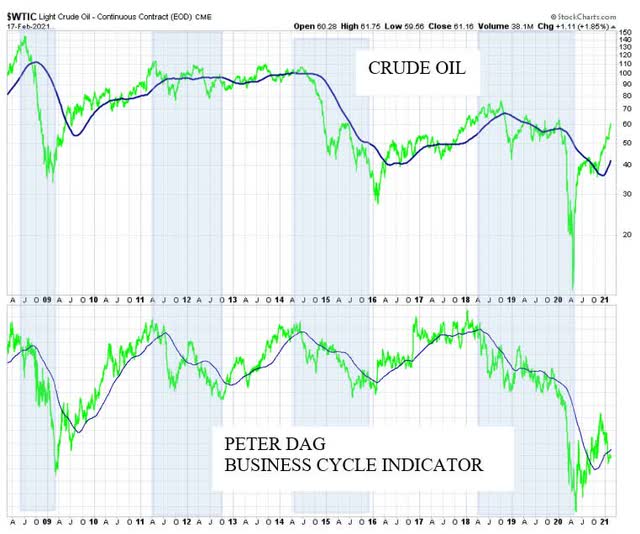
- 02/19/2021 – Oil supercycle is “seriously flawed”. there is is not a firm basis for an impending supercycle. – I need to study what happened in 1970s oil shocks and the 2004-14
Oil Price Supercycle is a Meme
Analysts at Standard Chartered have noted that the recent rise in crude oil prices has been accompanied by mounting levels of discussion of a crude oil price supercycle. These analysts, however, think the concept of an oil supercycle is “seriously flawed”.
In the report, the analysts said comparisons with post-Second World War economic stimulus, the 1970s oil shocks and the 2004-14 period have all been made recently as a basis for a supercycle. They noted, however, that they thought none of them serve as a suitable parallel for present conditions.
“The supercycle in our view involves extreme demand optimism combined with extreme supply pessimism,” the analysts said in the report.
“We think it is too soon for another extreme upswing, and prices have not been low enough, in our view, to generate extreme supply side shortfalls,” the analysts added.
The analysts outlined that, over the past six years, WTI crude oil has averaged about $51 per barrel and noted that current front-month prices are not low in terms of the post-2014 market. They conceded that back-end prices are relatively low but highlighted that a $3 per barrel year on year fall “is not a firm basis for an impending supercycle”
- 02/18/2021 – history
Background: What caused the 1970s oil price shock?
This article is more than 9 years old
The 1970s oil crisis knocked the wind out of the global economy and helped trigger a stock market crash, soaring inflation and high unemployment – ultimately leading to the fall of a UK government
I need to study more details on this graph
- 02/18/2021 – need to read the details
The Big Oil Stocks That Goldman Says Have up to 50% Upside Ahead of a Global Recovery | Barron’s
European Big Oil stocks exposed to the recovery in transportation have a 20% to 50% upside potential in the next 12 months, according to Goldman Sachs analysts.
Transport-led oil demand has suffered a severe hit due to the Covid-19 pandemic, but the investment bank’s analysts said that the continuing vaccine rollout and gross domestic product forecasts can support a recovery in 2021. On average, around two-thirds of European Big Oil companies’ earnings comes from transport-led oil demand, with Galp, BP, Total and Repsol the most exposed.
The sector has climbed around 40% from the lows of October 2020, but has underperformed both the wider market and Brent’s recovery, following a weak set of fourth-quarter earnings, they noted.
- 02/18/2021 – Texas’ freeze has shut in about one-fifth of the nation’s refining capacity and closed oil and natural gas production across the state. “The temporary outage will help to accelerate U.S. oil inventories down towards the five-year average quicker than expected,”
Brent gives up gains after rising above $65 on Texas freeze
Oil prices steadied on Thursday, with Brent edging back from a 13-month high, after a sharp drop in U.S. crude inventories supported prices, while buying spurred by a cold snap in the largest U.S. energy-producing state petered out.
Brent crude rose 3 cents to $64.37 a barrel by 11:40 a.m. EST (1640 GMT), after increasing to $65.52 earlier in the session, its highest since Jan. 20, 2020.
U.S. crude stockpiles fell by 7.3 million barrels in the week to Feb. 12, the Energy Information Administration said on Thursday, compared with analysts’ expectations for an decrease of 2.4 million barrels.
Crude exports rose to 3.9 million barrels per day, the highest since March, EIA said.
“The big nugget was the big jump in exports of crude oil,” said John Kilduff, partner at Again Capital in New York. “We’ll have to see what happens with that next week weather in Texas, but I have been looking for a pick up there for a while.”
Texas’ freeze entered a sixth day on Thursday, as the largest energy-producing state in the United States grappled with refining outages and oil and gas shut-ins that rippled beyond its borders into neighbouring Mexico.
The deep freeze has shut in about one-fifth of the nation’s refining capacity and closed oil and natural gas production across the state.
“The temporary outage will help to accelerate U.S. oil inventories down towards the five-year average quicker than expected,” SEB chief commodities analyst Bjarne Schieldrop said.
Oil’s rally in recent months has also been supported by a tightening of global supplies, due largely to production cuts from the Organization of the Petroleum Exporting Countries (OPEC) and allied producers in the OPEC+ grouping, which includes Russia.
OPEC+ sources told Reuters the group’s producers are likely to ease curbs on supply after April given the recovery in prices.
What the Texas Deep Freeze Means for Oil, Natural Gas: we might lost 3 mil barrels of oil, 3 millions of barrels of refining oil and 10 bcf gas. Huge disaster!
- 02/18/2021 – Gurus who invested in oil at 4Q20, stamp of approval
- Tepper purchased 3.125 million shares of Energy Select Sector SPDR Fund (XLE), giving the position 1.77% equity portfolio weight. Shares averaged $34.68 during the fourth quarter.
- Burry invested in Hollyfrontier $6m, DNOW $11m
- Buffett invested in Chevron Corp (CVX) $4.1 bil
- 02/17/2021 – watch out the reversal of production cut from OPEC, may be in April. The plans could still be reversed. Even with the reversal of production cut, IEA said that a recovery in demand would outstrip production in the second half of the year
Saudi Arabia Set to Raise Oil Output Amid Recovery in Prices – WSJ
World’s largest oil exporter plans to reverse recent unilateral production cut, while OPEC-plus seen likely to roll over curbs
The world’s largest oil exporter surprised oil markets last month when it said it would unilaterally slash 1 million barrels a day of crude production in February and March in an effort to raise prices.
But the kingdom plans to announce a reversal of those cuts when a coalition of oil producers meets next month, the advisers said, in light of the recent recovery in prices. The output rise won’t kick in until April, given the Saudis have already committed to stick to cuts through March.
The advisers cautioned the plans could still be reversed if circumstances change, and the Saudis’ intention hasn’t yet been communicated to the Organization of the Petroleum Exporting Countries, said the people and OPEC delegates.
In its monthly market report Feb. 11, the International Energy Agency said that a recovery in demand would outstrip production in the second half of the year, prompting “a rapid stock draw” of the glut of crude that has built up since the pandemic began.
- 02/16/2021 – Oil suprecycle prediction: The expected surge is predicated on the belief that fiscal stimulus will boost consumption just as investment in new production has been sucked out of the industry. Such a disconnect between demand and supply, fuelling a lasting surge in prices, are the basic conditions of a so-called supercycle. “We’re going to be short of oil before we don’t need it in the years to come.” Potential risks prevent oil to go up: the return of Iranian oil, the pace of producers’ supply increases, and the risk that Covid-19 vaccines struggle against variants of the disease. Skeptical view: The oil and gas industry is in “terminal decline”, he said. “Perhaps this dead cat can bounce a few more times. But would that be a supercycle?
Oil ‘supercycle’ predictions divide veteran traders
full article is here (Oil ‘supercycle’ predictions divide veteran traders _ Financial Times)
Two of the biggest banks on Wall Street are calling a new “supercycle” in oil, with JPMorgan Chase and Goldman Sachs both predicting prices will soar when the pandemic abates. The most bullish forecast has international crude prices staging a comeback towards the $100-a-barrel region — a level not reached since 2014. The expected surge is predicated on the belief that fiscal stimulus will boost consumption just as investment in new production has been sucked out of the industry. Such a disconnect between demand and supply, fuelling a lasting surge in prices, are the basic conditions of a so-called supercycle. It would transform conditions in the oil sector, which was hammered last year by the Covid-19 hit to demand and doom-laden predictions about what the widespread embrace of electric vehicles will mean for the market. “We’re going to be short of oil before we don’t need it in the years to come,” JPMorgan’s head of oil and gas, Christyan Malek, told clients on a conference call last week. “We could see oil overshoot towards, or even above, $100 a barrel.” Brent crude, the international benchmark, is up more than two-thirds since the end of October to $63 a barrel, driven by vaccine optimism and production cuts by leading exporters.
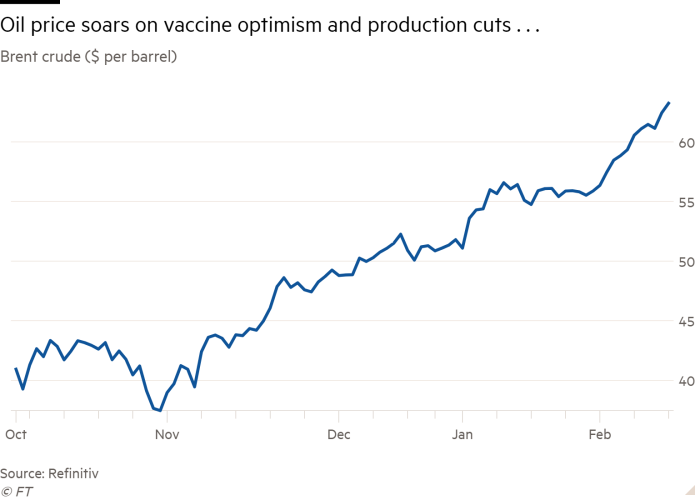
But this time it is not the emergence of an energy-hungry China that he predicts will boost consumption, but stimulus spending by governments around the world, such as the $1.9tn proposed in the US by the Biden administration — including for “green” infrastructure.

Veteran Goldman Sachs analyst Jeffrey Currie, who was a key voice in oil’s last supercycle between 2003 and 2014, told the Financial Times he believes there are real risks that oil trades in the $80 range “or even higher this year”. But this time it is not the emergence of an energy-hungry China that he predicts will boost consumption, but stimulus spending by governments around the world, such as the $1.9tn proposed in the US by the Biden administration — including for “green” infrastructure.
“This type of stimulus aimed at middle and lower class income [households] creates significant, commodity-intensive consumption, as they have a much higher propensity to consume,” Currie said. “These people don’t drive Teslas. They drive SUVs.”
He draws a parallel with President Lyndon Johnson’s “Great Society” initiative in the 1960s, arguing that the boost it gave to the US middle class — and the accompanying growth in oil consumption — helped set the stage for the oil price spikes of the 1970s, when Middle Eastern oil producers were able to squeeze supplies to the US.
“I believe the path of oil prices is likely to be upward for 2021 and the following years, but there are also many elements that could derail that move up,” he added, citing the return of Iranian oil, the pace of producers’ supply increases, and the risk that Covid-19 vaccines struggle against variants of the disease.
Sceptics include Andy Hall, one of the most successful oil traders of the last supercycle — and now retired from day-to-day trading. The oil and gas industry is in “terminal decline”, he said. “Perhaps this dead cat can bounce a few more times. But would that be a supercycle?”
- 02/15/2021 – watch out the OPEC+ meeting at March to see whether they will relax the oil production cuts or not.
Oil Prices Rally as Cold Blast Hits Texas – WSJ
Freezing weather boosts demand for fuel and power, while threatening oil-and-gas output in key production state
For oil prices, the cold snap helped to extend a monthslong recovery powered by production curbs by OPEC and its partners, led by Russia.
A key question for oil traders now is whether the cartel opts to relax the cuts at a meeting in March. Saudi Arabia will likely resume production of the million barrels a day it decided to take off the market in January, boosting global supplies, according to Ms. Nakhle.
“They are likely to stop that, now that prices are above $60 a barrel,” she said.
- 02/15/2021 – interesting history review from NOV CEO: The reason is that all (wind, solar, geothermal, biomass, hydrogen and fusion) are at best imperfect substitutes for the status quo, at least for now, in all categories except greenhouse gas emissions
National Oilwell Varco, Inc. (NOV) CEO Clay Williams on Q4 2020 Results – Earnings Call Transcript
Most renewables technologies are not new. You may be surprised to learn that robust serious technical economic discussions about transitioning to new forms of energy actually began more than 40 years ago, following the Iranian hostage crisis and the second big oil shock of the 1970s. The economic vulnerability of the West during the Cold War, exposed by the tenfold increase in oil price throughout the 1970s, led to some serious hand wringing about diversifying away from oil, particularly foreign imports.
Strikingly, the list of potential green energy sources from that era is essentially unchanged from today’s list of candidates: wind, solar, geothermal, biomass, hydrogen and fusion. In the past four decades, all have seen their respective technologies progress incrementally and some have seen significant industrialization. So why then haven’t we transitioned to something different yet? The reason is that all are at best imperfect substitutes for the status quo, at least for now, in all categories except greenhouse gas emissions.
Solar and wind face intermittency challenges, land use issues and not-in-my-backyard political opposition. Hydrogen faces storage and transportation challenges from metallurgical hydrogen embrittlement. Biomass faces land use and efficiency challenges. Fusion continues to face technical challenges. And geothermal really only works in geologic hotspots with shallow magma. All face infrastructure hurdles.
- 02/15/2021 – oil might go higher due to demand/supply, pandemic eases and inflation
Why Oil Is Likely Headed Much Higher From Here
- Oil’s supply demand dynamic illustrates that higher prices are probable.
- OPEC+ nations led by Russia and Saudi Arabia are likely to continue to create artificial supply constraints in the market.
- On the other side of the equation, oil demand is likely to rise notably as the coronavirus pandemic eases into H2 and 2022.
- Finally, there is the inflation factor that is likely to enable oil prices to appreciate notably into year-end and next year.
- Some companies that we like going forward.
- 02/14/2021 – Oil prices soared as fears of heightened tensions in the Middle East , while hopes that a U.S. stimulus and an easing of lockdowns will buoy fuel demand provided support
Oil hits 13-months highs on fears of Middle East tensions
Oil prices soared on Monday to their highest in about 13 months as fears of heightened tensions in the Middle East prompted fresh buying, while hopes that a U.S. stimulus and an easing of lockdowns will buoy fuel demand provided support.
The Saudi-led coalition fighting in Yemen said late on Sunday it intercepted and destroyed an explosive-laden drone fired by the Iran-aligned Houthi group toward the kingdom, state TV reported, raising fears of fresh Middle East tensions.
- 02/12/2021 -Gas price might continue to be higher, more pipeline projects might get cancelled, therefore, gas price might be even higher.
Gas hits highest price in 12 months as progressives, celebrities pressure Biden to cancel more pipelines
Gas Buddy analyst: ‘Prices are likely to continue rising in the weeks and months ahead’
The average price of gas in the United States has hit a 12-month high, according to new data Thursday from Gas Buddy.
The average retail gas price in the United States is now $2.50 per gallon after soaring from an average price of $1.74 per gallon in April 2020. In February of last year, Gas Buddy’s chart shows gas prices were about $2.42 per gallon and proceeded to rise slightly before plummeting as the coronavirus pandemic spread across the country.
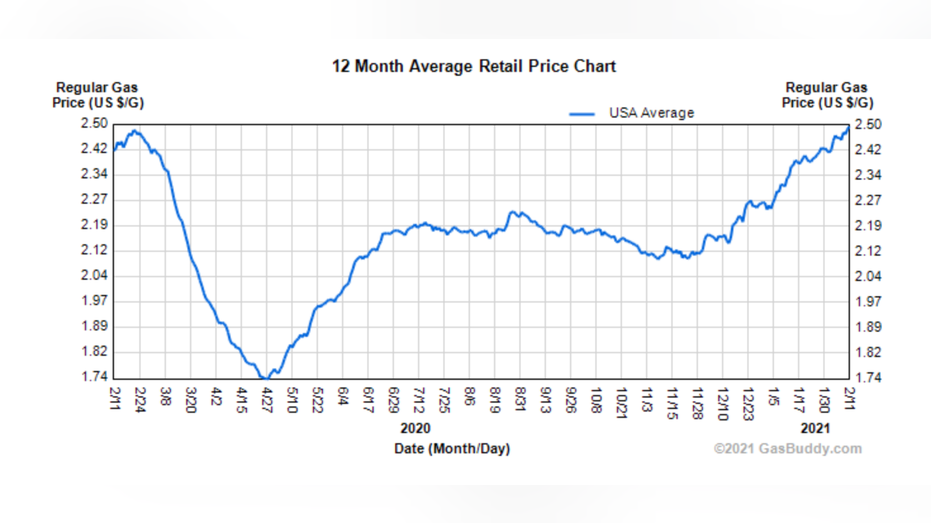
12 Month Average U.S. Gas Retail Price (Chart courtesy of Gas Buddy)
Gas Buddy senior petroleum analyst Patrick De Haan told FOX Business that a significant contribution to the increase is related to the recovery from COVID-19 as well as rising oil demand globally against the Organization of Petroleum Exporting Countries’ (OPEC) decision to cut production.
“Unfortunately prices are likely to continue rising in the weeks and months ahead so long as we continue to see improvement in the pandemic,” De Haan added, “They could rise another 15 to 35 cents a gallon by summer, [it’s] all really contingent on what happens in the months ahead with COVID.”
The new data comes as President Biden is facing pressure from progressive Rep. Ilhan Omar, D-Minn., to cancel the Enbridge Line 3 pipeline project as well as a letter signed by dozens of celebrities to shut down the Dakota Access Pipeline for good.
- 02/12/2021 – natural gas soaring on cold weather. Texas is about to be barreled over by snow, ice and cold, and that has shaken energy markets. Is there energy shock coming? should I play it? how can I play it very profitably and safely?
Arctic Blast Grips U.S., Upending Markets, Setting Records
The Arctic blast sweeping the U.S. has unleashed winter weather from coast to coast, spawned deadly ice storms as far south as Houston and sent natural gas and power prices soaring to record levels. Conditions are set to get even worse. Storm warnings and advisories stretch from Washington state in the west, south to Texas and up the East Coast to New Jersey. Across the central U.S., wind chill warnings and advisories cover most of the Great Plains and upper Midwest. Temperatures in Chicago could drop to -2 degrees Fahrenheit (-19 Celsius) Saturday and Sunday but the wind will make it feel closer to -25. After this system clears out, another will arrive by the middle of next week.
“It is not just the magnitude of the cold, it is also how persistent it is also how persistent it is,” said Marc Chenard, a senior branch forecaster with the U.S. Weather Prediction Center. “We have about another week of this. There is another system behind this one impacting similar areas.”
While winter lashes the nation, it’s even reaching into areas that are usually spared the season’s worst. Texas is about to be barreled over by snow, ice and cold, and that has shaken energy markets.
Gas processing plants across Texas are shutting as liquids freeze inside pipes, disrupting output just as demand for the heating fuel jumps. Prices have surged more than 4,000% in two days in Oklahoma. Electricity in some parts of Texas have topped $5,000 a megawatt-hour. Meanwhile oil output in the Permian Basin, the biggest U.S. shale play, is moderating as wells slow down or halt completely.
Deep freeze sends natural gas soaring to record $600 in Oklahoma
Heating and power plant fuel traded for as much as $195 per mmBtu in Southern California
- 02/12/2021 – Shell, BP and Total are cutting oil output – good for oil price?
Shell Hits Its Own Peak Oil, Plans to Reduce Output
Energy giant joins peers it pledging to reduce its dependence on fossil fuels while tapping the growing electricity market
The strategy follows similar plans from rivals BP PLC and Total SE to reduce their dependence on fossil fuels while expanding in renewable power such as wind and solar, partly in response to growth in regulatory and investor pressure. By contrast, U.S. companies Exxon Mobil Corp. and Chevron Corp. don’t plan to invest substantially in electricity and both say the world will need vast amounts of fossil fuels for decades to come. Exxon does, though, plan to invest in technology to reduce carbon emissions.
However, the pivot to low-carbon energy is seen by analysts as challenging because it requires investments in areas where major oil companies don’t necessarily have a competitive advantage and that have lower returns. Renewables projects typically generate returns of around 10%, compared with the traditional 15% targeted on oil-and-gas projects.
- 02/10/2021 – supercycle of copper will charge the supercycle of oil. Massive green spending stimulus will have an indirect pull on oil demand. However, he added that it may be “a little early to declare a full supercycle.” US drilling and completion activity continuing to rise with the improvement in oil prices over recent months. “Still, we do not see major changes to US supply expectations because operators will maintain capital discipline in 2021,” it said in a research note.
INTERVIEW: Hang on for wild oil, copper ride in commodity supercycle: Goldman’s Currie
Oil has a ‘lot of upside’, copper prices already at supercycle levels, Supercycle reminiscent of 1970s spike rather than 2000s bull run, Supply crunch could play into shale, core OPEC+ hands
The oil market is being swept up in a commodity supercycle, with huge upside risk to a target price of $65/b, according to Jeff Currie, head of commodity research at Goldman Sachs, who added key metals such as copper are already at supercycle levels and that the story has only just begun.
“I want to be long oil and hang on for the ride,” Currie said in an interview with S&P Global Platts on Feb. 5, warning “there is a lot of upside here.”
Currie, who called the supercycle in the early 2000s, highlighted the importance of the interconnections between the key commodities like oil and industrial metals in driving prices higher, arguing that oil prices cannot be considered in isolation.
“This is why I jump up and down and pound the table that people don’t keep talking about iron ore with your oil outlook. Well, it’s really important to your oil outlook. So is the dollar, so is copper, and grains… So is everything else out there,” Currie said.
He noted that copper is crucial to the oil outlook. While Goldman has a copper target of $10,000/mt, which is consistent with its $65/b oil price, Currie speculated as to whether copper could actually reach $40,000/mt at some point.
“We have no copper, copper inventories just drew their largest observable draw we’ve seen in the last five weeks, prices are already back to supercycle levels and we have not even started the energy transition story of electrifying the world,” Currie said. “Copper is the only thing we know that can conduct electricity at the rate needed, so I’m really curious as to how high some of these markets can go,” he added.
Supercycle origins
Currie explained that we are seeing a supercycle emerge because of a “structural upward shift in demand.” He emphasized that energy transition is at the heart of this transformation because of all the green capital expenditure that is required to be able to create the electrification the globe needs.
Currie noted the shift in demand has three elements, which he termed “REV” — standing for redistribution policies, environmental policies and versatility in supply chain initiatives.
He also suggested that this supercycle is more akin to the one seen in the 1970s rather than the start of the century. Tensions around poverty and social unrest that led to redistribution efforts and the war on acid rain back then compares to the climate change pressures today. Meanwhile, regarding supply chains, Currie said the US Cold War with Russia can be viewed with a similar eye to the issues between China and US.
“Last summer it was the Chinese buying strategic reserves of grains, copper, oil. And when we think about when did the Europeans and the Americans build all those strategic reserves, it was built in the 1970s, under very similar circumstances,” Currie said of the parallels.
Talking specifically on oil, Currie noted perhaps counterintuitively that the massive green spending stimulus will have an indirect pull on oil demand given the energy needs surrounding the whole enterprise.
“And let’s remember, what’s unique about this is everybody everywhere in the world is doing the exact same thing at the exact same time, which is why you get that immediate impact on demand,” he added.
Chris Midgley, head of analytics at S&P Global Platts, has also noted that “the market certainly feels like it is moving into a supercycle — commodities across the board including coal have risen over 20% since the end of Q3… demand is recovering but still lags well behind 2019 levels and headwinds remain with high infection rates, new strains of the virus and further lockdowns.”
However, he added that it may be “a little early to declare a full supercycle.”
OPEC, shale
Currie warned that demand concerns for oil longer-term will deter investment in long life cycle production paving the way for key OPEC and US producers.
This “hostile environment to attract capital” will mean the “only investment that’s going to go into this space is going to be very short cycle production in places like the Middle East, as well as the United States in the shale patch,” Currie said.
Currie added that these conditions are going to push up the cost of capital in these areas too.
Taking the example of shale, Currie said these producers over the last decade have been spending “130% of cash flow, because of access through debt and equity markets,” but noted that “they’re going to be lucky if they could spend 70% of cash flow,” with reduced access.
“This means that the hurdle rate of which they can actually now begin to drill is at a much higher price, instead of being at $55/b, we think it’s closer to $65/b, which is why we’re sitting… in an environment where we have not seen an uptick in drilling — historically, by the time we got to $55/b that would have already happened,” Currie said.
Platts Analytics sees US drilling and completion activity continuing to rise with the improvement in oil prices over recent months. “Still, we do not see major changes to US supply expectations because operators will maintain capital discipline in 2021,” it said in a research note.
But Currie was also keen to point out that the outlook for non-core OPEC+, namely those outside the core Gulf countries and Russia, is less assured.
Once the demand recovery really takes off, Currie believes the “dynamic that’s keeping that cohesion between Russia and OPEC is likely to disappear. I would tend to think that it’s going to be a free for all.”
And any return to pump-at-will by the OPEC+ participants would likely see US shale’s role as the marginal supplier resume.
- 02/10/2021 – be cautious on the change of oil supply/demand and oil price. US oil companies need to be very discipline in order to maintain the oil price. Among the names that analysts say are more sensitive to price changes are MEG Energy (MEG), Centennial Resource Development (CDEV), Marathon Oil (MRO), and Occidental Petroleum (OXY).
Oil’s Rally Was Just Heating Up. Why a Government Agency Says Prices Will Fall.
But the U.S. government agency that tracks energy markets thinks those gains may be ephemeral. The Energy Information Administration put out a forecast on Tuesday that predicts Brent crude prices will average $56 in the first quarter and then average $52 the rest of the year.
The EIA expects West Texas Intermediate crude, the U.S. benchmark, to average $50.31 this year, versus current prices around $58.
The EIA expects prices to slide because operators will start producing more oil, causing supplies to start to build up. In addition, oil production far outpaced demand in 2020, and the high levels of oil in storage could keep a lid on prices.
“EIA expects lower oil prices later in 2021 as a result of rising oil supply that will slow the pace of global oil inventory withdrawals,” the EIA report says. “EIA also expects that high global oil inventory levels and spare production capacity will limit upward price pressures.”
The EIA isn’t alone. Rystad Energy analyst Louise Dickson wrote on Tuesday that “the continuous rise in oil prices feels like a bubble inflating daily. We don’t expect a ground-breaking correction, but the bubble has to break at some point, it’s just market physics.”
So far, U.S. producers have held the line and kept production low, despite rising prices. Chris Wright, the CEO of shale-drilling company Liberty Oilfield Services (LBRT) said late last week that operators didn’t appear to be bringing production back online.
The latest price increase has led to a boom in oil stocks, which gain considerable operating leverage at prices over $50. Given the high fixed costs to produce oil, every dollar over $50 has a big impact on the bottom line. Stocks that are particularly sensitive to oil price changes could slump if oil prices reverse. Among the names that analysts say are more sensitive to price changes are MEG Energy (MEG), Centennial Resource Development (CDEV), Marathon Oil (MRO), and Occidental Petroleum (OXY).
- 02/10/2021 – supply cut, demand increase, inflation, and reflation trades might drive oil higher to $60 ~ $70
from oilprice.com Tuesday, February 9th, 2021
- The EIA sees U.S. oil production returning to 2019 levels by 2023 and then remaining between 13 and 14 mb/d through 2050.
- The agency sees Brent prices rising from an average of $42 per barrel in 2020 to as high as $73 per barrel by 2030 and $95 per barrel by 2050.
- The Permian remains the dominant source of new production in the years ahead.
Brent topped $60 per barrel on Monday, hitting a fresh high. OPEC+ cuts combined with enhanced expectations of U.S. economic stimulus pushed crude oil up. The market continues to tighten. “Support seems robust and the narrative sees the oil market swiftly burning through the remaining crisis-surplus, potentially running into tightness later this year,” Norbert Rücker, an analyst at Swiss bank Julius Baer, told Reuters.
Could oil hit $100? Oil prices could go as high as $100 a barrel next year on the back of “very easy monetary policy” and reflation trade, Amrita Sen, chief oil analyst at Energy Aspects, told Bloomberg in an interview.
Oil majors pay up for wind. BP (NYSE: BP) and Total (NYSE: TOT) won a majority of contracts to build offshore wind in the UK in a recent auction, and they paid a premium. “These huge upfront costs will put up barriers to entry for utilities and oil and gas companies without very deep pockets,” Barclays Plc analysts led by Dominic Nash said in a note.
Marathon cuts executive pay and seeks to cut emissions. Marathon Oil (NYSE: MRO) cut CEO pay by 25% and also aims to cut greenhouse gas emissions on a unit-of-production basis by half by 2025.
Tesla buys $1.5 billion in bitcoin. Tesla (NASDAQ: TSLA) announced that it has purchased $1.5 billion worth of bitcoin. The company also said it would accept bitcoin for its sales.
Commodities swept up in broader reflation trade. Fiscal and monetary stimulus and expectations of rising inflation are pushing prices of commodities up. “It’s hard to resist this reflation trade at the moment,” said Christoph Rieger, head of fixed-rate strategy at Commerzbank AG. “With policy all one-way and U.S. refunding coming up this week, we may require some more concessions.”
Trading houses shift away from fossil fuels. Japanese trading houses are accelerating a shift away from coal and fossil fuel trading, according to Reuters. For example, Itochu said on Thursday it will offload its stake in a Colombian coal mine, and Mitsui is withdrawing from a coal mine in Mozambique.
Imperial takes write-down, no big projects in years ahead. Imperial Oil (NYSE: IMO) said that the company would not take on any big projects in the coming years. The company wrote down $1.1 billion related to a decision not to develop shale gas assets in Canada.Marathon cuts executive pay and seeks to cut emissions. Marathon Oil (NYSE: MRO) cut CEO pay by 25% and also aims to cut greenhouse gas emissions on a unit-of-production basis by half by 2025.
- 02/08/2021 – Biden plans will significantly impact oil drillers: “We estimate that base production decline to be in double digits annually,” Gruber wrote. In fact, a total ban on new development wells could just about wipe out Gulf production in less than a decade. U.S. might be forced to import more oil.
BP and Other Offshore Oil Drillers Look Vulnerable to Biden Plans
The Biden administration’s plans to change and possibly halt new oil and gas leases on federal land may have the most severe effect on companies that drill in the Gulf of Mexico, Citigroup analyst Scott Gruber wrote on Monday.
Biden put a 60-day moratorium on new oil and gas permits on federal land last month. Last week, the Department of the Interior revoked about 70 previously issued permits, claiming that they had not gone through proper reviews. Current oil and gas projects on federal land can keep operating.
“We estimate that base production decline to be in double digits annually,” Gruber wrote. In fact, a total ban on new development wells could just about wipe out Gulf production in less than a decade.
“In case of a complete ban, where no new development wells can be drilled, 1.6 million barrels of oil and equivalents per day of future Gulf of Mexico production could be lost by 2030,” Gruber estimated in a prior report.
Gruber thinks that the larger producers will be able to manage this kind of decline by moving operations elsewhere.
But smaller operators could be hit harder. Other analysts have pointed to Murphy Oil (MUR) as one company with substantial exposure. Another independent company with Gulf of Mexico exposure is Apache (APA). Gruber has previously pointed out that engineering and service companies that service offshore operators such as Transocean (RIG) and Oceaneering International (OII) are also exposed. For smaller producers, a ban on new permits could inspire a new round of consolidation.
Gruber points to a potential unintended consequence of a ban on new drilling in the Gulf. He writes that emissions from Gulf operations are generally lower than elsewhere in the world. If the U.S. is forced to import more oil,
- 02/07/2021 – tightening oil supplies push oil price higher. Also, Backwardation in oil future will excelerate the jump. Be cautious about the an increase in Iranian exports and covid lockdown on suppressing oil price
Tightening Oil Supplies Inject New Momentum Into Price Rally
Signs of strength under the surface of the energy market suggest further gains for crude prices, some investors and analysts say
A booming rally in oil markets has pushed crude prices to their highest levels since near the start of the coronavirus pandemic, powered by production curbs and recovering demand.
Brent-crude futures, the benchmark in energy markets, have risen more than 50% since the end of October and are approaching $60 a barrel for the first time since Covid-19 began to erode oil demand in early 2020. Futures for West Texas Intermediate—or WTI, the main grade of U.S. crude—last week surpassed $55 a barrel for the first time in over a year.
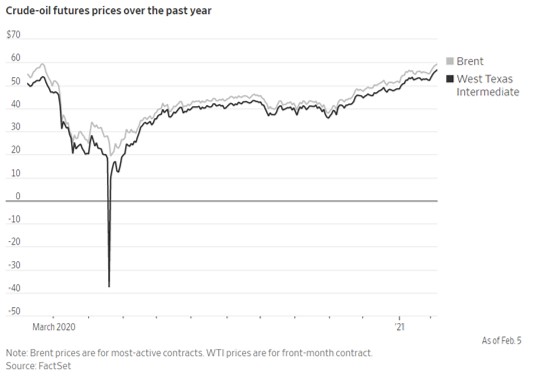
Behind oil’s rally: Huge stockpiles that accumulated in the early stages of the pandemic have winnowed down faster than many people expected. Traders say that could pave the way for further price gains if demand, which has already recovered in China and India, picks up in developed economies.
The fall in inventories is largely down to efforts by the Organization of the Petroleum Exporting Countries and its allies, led by Russia, to restrain production. Since agreeing to the cuts at the peak of the crisis in energy markets in April, producers have held back a cumulative 2.1 billion barrels of oil, OPEC said last week.
U.S. companies have also helped to prevent production from swamping demand. Global appetite for oil remains below pre-pandemic levels despite a pickup in consumption of gasoline, naphtha and fuel oil, which is used to heat homes and power ships.
American producers are pumping 17% less crude than they did on the eve of the pandemic, according to the Energy Information Administration.
On Friday, WTI contracts for oil that will be delivered next month cost $5.16 more per barrel than contracts for crude that will change hands in March 2022. That is the biggest premium for front-month futures since the start of the pandemic and contrasts with a historically large discount last April, when a glut of oil pushed WTI prices below zero.
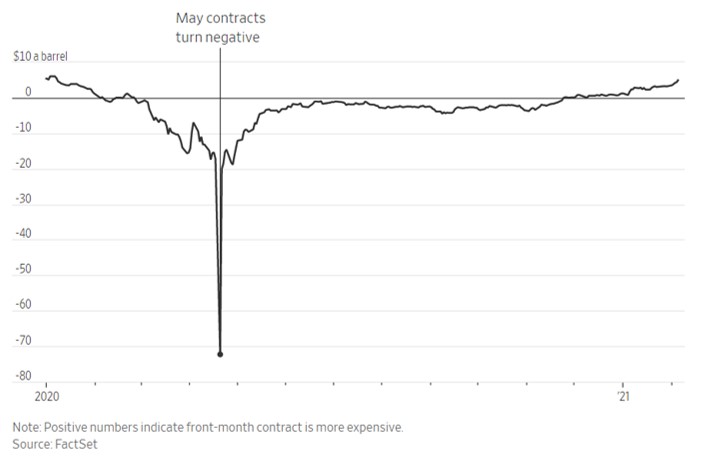
“It is a bullish indicator,” said Scott Shelton, an energy analyst and broker at United ICAP. “I don’t think there’s any question about that.”
Analysts say this dynamic—known as backwardation—has been exaggerated by a slowdown in purchases of long-dated energy contracts by airlines and other companies that buy them to hedge fuel prices.
Still, some investors say the condition shows the rally has further to run. It gives traders an incentive to take oil out of storage, because they earn more from selling it straight away. That in turn would bolster prices by whittling down supplies. Lower forward prices also make it harder for producers to lock in profits for barrels they will sell in the future, encouraging them to keep oil in the ground.
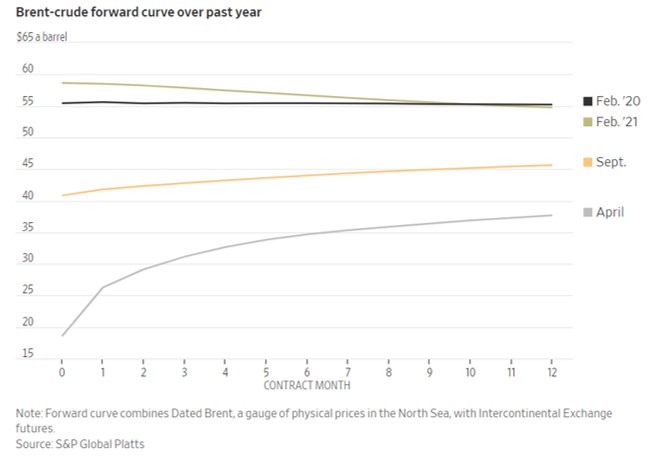
Backwardation could encourage more money managers to bet on crude, said Mark Hume, co-manager of BlackRock’s BGF World Energy fund. When spot barrels of oil fetch a premium, funds earn a profit when futures approach expiration and they flip their position forward into cheaper later-dated contracts.
The chance to capture this extra return has drawn investor money into commodity markets in recent months, adding to existing bullishness about raw materials, according to Ruhani Aggarwal, an analyst at JPMorgan Chase & Co.
- 02/05/2021 – It seems like changes are on the way for oil companies because HFs are look for value in the stocks
Activist Pressure on Exxon Mobil Is Growing. Another Hedge Fund Might Join the Effort.
An activist showdown is emerging at Exxon Mobil.
Late Thursday, Bloomberg reported that Exxon Mobil (ticker: XOM) is considering adding activist investor Jeff Ubben to its board. Ubben’s recently-launched Inclusive Capital Partners would then take what Bloomberg called a “meaningful stake” in Exxon if Ubben were added to the board. Hedge fund D.E. Shaw, which is reported to also be pushing for change at Exxon, is said to support adding Ubben.
Late last year, Engine No. 1—an investment firm that was launched in December with a mission to drive “positive impact through active ownership”—went after Exxon, pushing on the energy giant to invest more in renewable energy and cut spending in areas that have shown weak returns. Engine No. 1 nominated four members to Exxon’s board late last month, saying it was disappointed by recent “incremental steps” Exxon has taken to appease shareholders.
- 02/05/2021 – OPEC Plus and Russia projects that worldwide market will be in an oil supply versus demand deficit by as much as 2 million barrels of oil a day as early as May of next year and remaining so for 12 months, at least
OPEC, Russia eating US lunch as oil demand soars
Oil topped $57 per barrel on Friday evidence that global oil supplies are tightening much faster than many had expected.
Part of the commodities rally is being driven by China and India where oil demand has exceeded pre-COVID-19 levels. Despite record-breaking oil purchases by China and attempts to hoard oil reports show that the country’s inventories have fallen to the lowest level since February 2020. Meanwhile, U.S. oil supplies are tightening as stockpiles fell last week to 475.7 million barrels, the lowest level since March according to data from the Energy Information Administration.
The U.S. for their part is signaling more restrictions on domestic production allowing a power shift back to OPEC Plus and Russia in the global power structure. The group now projects that the worldwide market will be in an oil supply versus demand deficit by as much as 2 million barrels of oil a day as early as May of next year and remaining so for 12 months, at least.
- 02/04/2021 – demand increases, job market improves, advance of $1.9T plan drive oil price higher. but Stronger dollar moves inversely with oil prices
Oil rises on OPEC+ output cuts, U.S. inventory draw
Oil rose on Thursday on strong U.S. economic data, falling inventories and the OPEC+ decision to stick to its output cuts, but a stronger U.S. dollar limited prices.
Brent crude gained 41 cents, or 0.7%, to $58.87 a barrel, having earlier hit its highest level since Feb. 21 at $59.04.
U.S. West Texas Intermediate (WTI) crude settled 0.6% higher at $56.02 a barrel.
“Fresh highs in Brent and gasoline again today keeping this bull market alive with OPEC+ output restraint still supportive item,” said Jim Ritterbusch of Ritterbusch and Associates. “The oil bull market remains much intact.”
U.S. Labor Department data, which showed a drop in Americans filing new applications for unemployment benefits last week, helped boost prices, while investors were also expecting positive data from the government’s comprehensive monthly employment report due on Friday.
The market was further bolstered by news that Democrats in the U.S. Congress took the first steps toward advancing President Joe Biden’s proposed $1.9 trillion coronavirus aid plan.
But a strong U.S. dollar, which typically moves inversely with oil prices, took some of the steam out of oil’s momentum. The dollar hit a more than two-month high against a basket of other currencies.
On Wednesday, the Organization of the Petroleum Exporting Countries (OPEC) and allies – known as OPEC+ – extended its oil supply pact at existing levels, suggesting that producers are happy the cuts are draining inventories while uncertainty remains over the outlook for a recovery in demand as the COVID-19 pandemic lingers.
A document seen by Reuters on Tuesday showed that OPEC expects output cuts to keep the market in deficit throughout 2021, even though the group reduced its demand forecast.
Also on Wednesday, government data showed that U.S. crude oil stockpiles last week unexpectedly fell to 475.7 million barrels, their lowest level since March.
The number of Americans filing new applications for unemployment benefits decreased last week, suggesting that the jobs market was stabilising as authorities start to loosen pandemic-related restrictions on businesses.
- 02/04/2021 – higher demand might continue to get the oil price higher.
Goldman Sachs has recently called for $65 Brent by mid-year.
How High Will Oil Prices Go This Year?
This week we hit some milestones in the year-long recovery from the oil demand crash of 2020. West Texas Intermediate, (WTI) hit and moved past the $55.00 level, and Brent moved closer to $60. These are some important psychological barriers for the market, and if sustained, as we expect they will be, will push prices higher.
What happened?
The API announced a significant draw of ~4.3 mm barrels in crude stocks yesterday when a modest build was expected. Moves lower in gasoline and distillate stocks bolstered this price move, as it suggested refineries were cranking out product to meet present and anticipated demand.
In recent weeks oil prices had been resistant to adverse data (inventory builds of crude and refined products) and had continued to inch higher. The market’s relief at this confirmation of demand pushed prices for WTI through that critical $55.00 threshold.
If the EIA confirms this move today, (these reports are sometimes contradictory), we expect another push higher for both crudes, WTI and Brent. Particularly if the confirmation is of significant proportions, like 8-10 mm barrels. Continued price advances in crude will soon reverse the sluggishness we have seen in the oil equities market. Oil equities prices are typically off 15-20% from recent highs in an apparent disconnect from the recent strength in the underlying data regarding oil.
Crude stocks are falling into the 5-year range
Last week’s ~9.9 mm bbl draw moved the supply graph back into the 5-year average for the first time since mid-2020. This removes another psychological barrier for the continued rise in crude prices, as the market will now begin to shift its concern from inventory overhang to worrying about secure supplies. I discussed this in detail in an OilPrice article last month.

Crude oil production thanks to Drilled but Uncompleted, (DUC’s) withdrawal has levitated around 11.0 mm BOEPD for the past month or so. This, in spite of the level of new drilling, (although on the increase), still not being at a level that will totally offset field decline rates, (6-40% per annum). Domestic crude production is down 2.3 mm BOEPD from its all-time high set in March of 2020, at 13.1 mm BOEPD.
This week the EIA reported a modest decline of 100K BOEPD to 10.9 mm BOEPD. Taking place in the lower 48, as noted by the EIA report, it’s not a stretch to connect this decline to falling shale production. We will have an additional guidepost when the EIA publishes its Drilling Productivity Report, (DPR), the next iteration of which is due February, 16th. Last month’s report forecast a decline from shale fields of ~89K BOEPD in February.
Looking ahead to the rest of 2021
Goldman Sachs, (NYSE:GS), has recently called for $65 Brent by mid-year. With the narrow spread ($2-3.00) between Brent and WTI in recent times, this would put WTI into the low $60’s. Goldman’s global head of commodities research, Jeffrey Currie, said in a note that accompanied the report-
- 02/03/2021 – OPEC may support oil price
Energy stocks follow oil prices higher on OPEC support, inventory drop
- Oil and gas shares (XLE +3.2%) rise for a third straight session and is today’s S&P sector leader, after OPEC and its allies pledge to keep pursuing a speedy rebalancing of the oil market, while global inventories continue to shrink.
- In today’s online meeting of OPEC’s Joint Ministerial Monitoring Committee, ministers led by Saudi Arabia and Russia “stressed the importance of accelerating market re-balancing without delay” amid “uncertain” prospects for the global economy.
- WTI March crude (CL1:COM) +2.1% to $55.91/bbl; April Brent (CO1:COM) +2% to $58.62/bbl.
- Among today’s top individual movers: EOG +6.8%, SLB +5.9%, FANG +5.8%, OXY +5.5%, COP +5.1%, DVN +4.7%, MRO +4.6%, PXD +4.3%, VLO +4.2%, MPC +4%, XOM +3.2%.
- OPEC+ expects output cuts will keep the market in deficit throughout this year, peaking at 2M bbl/day in May, according to Reuters.
- “OPEC and allies set out to cut a deal that would normalise global excess inventory through 2021 – well, they’re on track,” says Lachlan Shaw, head of commodity research at National Australia Bank.
- Wood Mackenzie forecasts global oil demand should rise by nearly 7% this year, helped by a better economic outlook and the COVID-19 vaccine distribution.
- 02/03/2021 – massive infrastructure investment might boost the energy sector
Buttigieg confirmation boosts hope for massive infrastructure investment
- Industry and elected leaders praised Pete Buttigieg’s confirmation as Transportation Secretary after his nomination passed the U.S. Senate 86-13 on Wednesday.
- Buttigieg’s confirmation could be a boon for investment in the nation’s infrastructure, which has been called for on a bipartisan basis for many years, according to experts.
- Several officials emphasized how Buttigieg’s experience as mayor of South Bend, IN, will stand him in good stead at the U.S. Department of Transportation (USDOT), especially as he knows the challenges local leaders face. “City leaders know these critical issues best,” Los Angeles City Council President Pro Tempore Joe Buscaino said. “They know what’s happening on the ground, and the work of Secretary Buttigieg reflects better the priorities of city leaders across this country.”
- 02/03/2021 – NG (biproduct of oil) might do well in the long run
Off To The RACES: Natural Gas Equities Lapping FAANG Stocks
- On August 25th, 2020, I published an article titled, “Off To The RACES: Natural Gas Equities Outperforming FAANG”. The outperformance has continued since that article’s publication.
- Quietly, the leading Appalachia focused natural gas equities, including Range Resources, Antero Resources, CNX Resources, EQT Corp., and Southwestern Energy have surged higher.
- The relative outperformance is camouflaged in relative anonymity, however, as more dramatic and/or hyped moves are occurring in other corners of the financial markets.
- Getting to the heart of the matter, one driver of outperformance is a structural supply deficit in natural gas, alongside many other commodities, after a decade of capital underinvestment.
- The second core driver of outperformance is a historical capital rotation as the current structure of the market transitions from headwind to tailwind.
- This idea was discussed in more depth with members of my private investing community, The Contrarian.
- 02/02/2021 – lots of write-downs in 4Q 2020, will these stage the profitability of 1Q 2021 and yr 2021? also depends on vaccine rollouts, vaccine efficacy and OPEC compliance. So be very cautious. Note, today’s crude price increases to $55.04 (2.78%)
Oil Companies Endure Brutal 2020, Warn of Slow 2021 Recovery
Exxon, BP and others notched one of their worst annual performances as the pandemic crushed demand for fossil fuels
The big international oil companies are reporting one of their worst annual performances in decades and signaling that the pandemic could continue to challenge their businesses in 2021.
Exxon Mobil Corp. XOM +2.27% and BP BP -7.70% PLC on Tuesday disclosed annual losses of $22 billion and $18.1 billion respectively, following Chevron Corp. CVX +1.35% , which on Friday reported a $5.5 billion loss for 2020.
Exxon posted its fourth consecutive quarterly loss for the first time in modern history, driven by a more than $19 billion write-down. Excluding the impairment, Exxon turned a quarterly profit of $110 million.
BP reported a replacement cost profit—a metric similar to the net income figure that U.S. oil companies report—of $825 million for the three months ended Dec. 31, from a loss of $4 million in the year-earlier period.
Covid-19 has sapped demand for oil, hitting prices and prompting the world’s biggest energy companies to slash spending, cut jobs and write down the value of their assets.
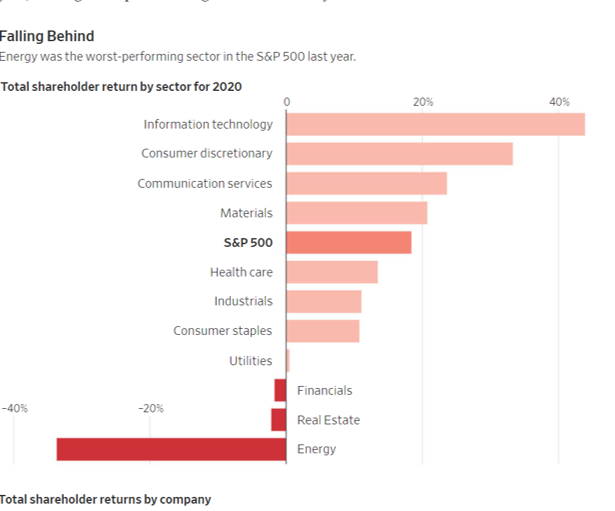
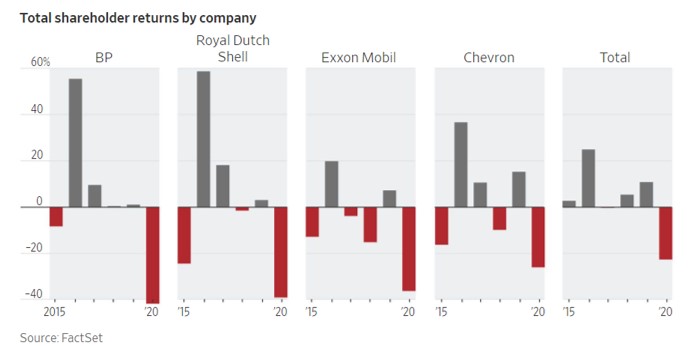
“It’s all dependent on vaccine rollouts, vaccine efficacy and OPEC compliance,” Mr. Looney said. Unlike its U.S. counterparts, Mr. Looney said that BP hadn’t spoken to any of its peers about mergers, and that it was focused on executing its strategy to pivot toward low-carbon energy.
- 01/29/2021 – The strongest cash flow since the start of the fracking boom is coming. Will the upcoming 4th quarter report very upbeat for oil industry?
U.S. shale ponders the unexpected: what to do with coming cash windfall?
HOUSTON (Reuters) – A sustained rise in global oil prices has U.S. shale producers pondering something few expected to be considering after last year’s tumble: how to allocate rising cash flows among new production, dividends and stock buybacks.
In the third quarter, a group of 33 U.S. shale producers generated $2.6 billion in free cash flow – the group’s strongest performance since the start of the fracking boom. It came as they cut spending to the lowest in a decade, according to data from the Institute for Energy Economics and Financial Analysis.
(For a graphic on shale cash flows, click here: )
For most shale producers, “2021 is the resetting of balance sheets,” said Matthew Portillo, an analyst with investment bankers Tudor, Pickering, Holt and Co. “Most excess free cash flow will go to debt repayment.”
Variable dividends will become commonplace by 2022 as oil prices climb, Portillo said. Investors, he said, “drastically prefer a focus on free cash and dividends” over growth in production.
- 01/27/2021 – Will these actions drive oil price higher?
Biden climate change order to tell federal agencies to eliminate fossil fuel subsidies
Biden order to call on business, workers to ‘lead a clean energy revolution’
President Biden is set to take “aggressive action” Wednesday to tackle climate change and is expected to take a number of executive actions focused on jobs, “equitable” clean energy and “restoring” scientific integrity across the federal government.
The order will expand on his move last week to rejoin the Paris climate agreement. His review of “harmful rollbacks of standards” that protect air, water and communities is set to direct federal agencies to “eliminate fossil fuel subsidies as consistent with applicable law and identify new opportunities to spur innovation, commercialization, and deployment of clean energy technologies and infrastructure.”
- 01/26/2021 – more suspension means more constraint on oil supply
Biden to Suspend New Federal Oil and Gas Leasing Pending Review
Orders would boost conservation, setting up a confrontation with the oil industry
President Biden is planning on Wednesday to halt new oil and gas leasing on federal territory, people familiar with the matter said, setting up a confrontation with the oil industry over the future of U.S. energy.
The Biden administration has drafted an order to impose the moratorium while it conducts a review of the federal oil and gas leasing program, the people said, in what is potentially a first step toward his campaign pledge to end future leases. The order is expected to be included in a package of measures across government aimed at reducing greenhouse gas emissions and boosting land conservation.
- 01/22/2021 – Biden ban (yet unclear when it will come) will not shut off production from top shale drillers in four years because they already have the permits for years, but smaller firms which is a large swathe of the industry will be impacted significantly since they lack the deep pockets to squirrel away permits. – this might drop oil production
Big U.S. oil drillers have federal permits to mute effect of any Biden ban
Jan 21 (Reuters) – U.S. President Joe Biden’s promised ban on new oil and gas drilling on federal lands would take years to shut off production from top shale drillers because they already have stockpiled permits, according to Reuters interviews with executives.
But smaller independent oil drillers without the resources of big corporations were more worried about Biden’s vow to toughen regulations and stop issuing new permits on federal lands, part of his sweeping plan to combat climate change and bring the economy to net zero emissions by 2050.
Shale drilling accounts for roughly two-thirds of U.S. crude oil production, but output is expected to decline throughout 2021 as producers rein in spending.
A large swathe of the industry is made up of smaller firms that lack the deep pockets to squirrel away permits, get a jumpstart on installing new emissions control technologies or take their business elsewhere.
Biden’s team did not respond to several requests for comment, and it was unclear when his administration might act on a drilling ban.
- 01/19/2021 – ESG might be at the tipping point with Biden Admin, more regulations will come to oil industry
SEC to increase scrutiny on oil and gas. The Biden administration is likely via the SEC to increase disclosure requirements related to climate risk for oil and gas companies. In fact, a more aggressive push on ESG standards and requirements could be in the offing. The Wall Street Journal looks at the SEC’s potential agenda. Bloomberg also looks at the SEC, although from the angle of financial fraud in the oil and gas industry.
Companies Brace Themselves for New ESG Regulations Under Biden
Businesses and trade groups are hoping to get clarity about—and influence—expected rules on environmental, social and governance issue
Companies are bracing for further regulation under the incoming Biden administration. One area that could affect a number of industries: potential new requirements related to diversity, carbon emissions and other types of sustainability metrics.
Brad Karp, chairman of the law firm Paul, Weiss, Rifkind, Wharton & Garrison LLP, says that during a recent virtual meeting with about 1,000 corporate leaders who are clients, the conversation focused on Mr. Biden’s expected push “to make ESG real, concrete and hold corporations accountable.”
“It’s a virtual certainty that the SEC will follow the European lead and impose enhanced ESG disclosure requirements on public companies,” he says.
01/18/2021 – Oilprice.com on ETA projections of oil production and demand
- U.S. fossil fuel production declined by 6% in 2020.
- The EIA projects that production will remain flat in 2021, with increased coal production offsetting declines in gas output.
- Production will resume growth in 2022 but will remain below the 2019 peak.
IEA: Demand to recover by 5.5 mb/d. In the IEA’s January Oil Market Report, the agency projects that oil demand will bounce back to 96.6 mb/d this year, an increase of 5.5 mb/d over 2020 levels. That erases some of the 8.8-mb/d decline from last year. However, the agency cut its forecast for first-quarter demand by 600,000 bpd compared to last month’s report. On the supply side, production will increase by 1 mb/d this year, after declining by 6.6 mb/d in 2020.
- 01/18/2021 – supply of Natural gas will be truncated?
Biden considering canceling Keystone XL pipeline permit through executive action on 1st day in office: report
$9B project has been delayed by legal issues
Biden may cancel Keystone XL. President Biden may cancel the permit for the Keystone XL, perhaps on his first day in office, according to Reuters. In an effort to stave off a death sentence for the project, TC Energy (NYSE: TRP) said it would make the pipeline have a net carbon zero emissions profile by spending $1.7 billion on renewable energy to power the pipeline and to use union labor. Bloomberg reports that materials and pipe could be sold for scrap.
- 01/18/2021 – More European companies are investing in new energy, less investment in oil exploration and production. Positive for oil in terms of less supply, negative for oil in terms of less demand
Oil Giant Total Buys Stake in World’s Biggest Solar Developer
French energy company to pay $2.5 billion for 20% of Adani Green Energy
French energy giant Total SE TOT -3.72% said it would pay $2.5 billion for a 20% stake in the world’s largest solar developer, the latest move by an oil major to expand in renewable power.
Total said Monday the investment in Adani Green Energy Ltd. 541450 0.62% would help it meet its targets for generating more power from low-carbon sources amid a continuing global transition away from fossil fuels—a shift some analysts say is being accelerated by the pandemic.
Monday’s deal isn’t the first time Total has invested in solar. In 2011, the company bought a majority stake in U.S. solar panel manufacturer SunPower Corp. However, following several years of losses, SunPower spun off its panel-making business in August to focus on solar-panel installations. Total remains a shareholder in both SunPower and the new Singapore-based company Maxeon Solar Technologies Ltd.
Other major oil companies have also invested in the solar industry. BP took a stake in Lightsource Renewable Energy in 2017 and has since boosted its holding. The same year, Shell invested in Singapore-based Sunseap Group Pte Ltd., followed by an investment in Cleantech Energy Corporation Pte Ltd.’s solar business in 2018.
- 01/17/2021 – Biden’s new energy plan might drive oil price high: decrease on supply, add destabilization of our national security
Why President-elect Biden’s energy plans could derail the American Dream
The potential consequences of Biden’s fossil-fuel-free dreams are chilling
Under Biden’s attempts to “phase out” natural gas, petroleum, and coal, the prices we pay for energy will go up.
This should be no surprise to Biden and his political allies, since costs have soared everywhere “going green” has been tried. Californians are paying 30% more for electricity than they did 10 years ago. In Denmark, where wind energy became a priority in the mid-1990s, prices have more than doubled.
An equally critical consequence of moving away from fossil fuels is the destabilization of our national security. Since becoming the world’s dominant energy producer and a net energy exporter, America has a stronger influence in global negotiations and advancing the cause of freedom.
Despite pouring nearly $75 billion of our tax dollars into renewable energy subsidies over the last decade alone with the goal of making the technology viable, wind and solar still provide barely 4% of our energy. What hasn’t worked over the course of decades won’t suddenly work in the next four, or even eight, years. After all, Biden himself admits eliminating fossil fuels is “not possible.”
- 01/15/2021 – Oil prices fell back on Friday over demand concerns from China. More oil companies might go with Green
Friday, January 15th, 2021: Oil prices fell back on Friday over demand concerns. News that China has reported its highest Covid-19 case count in months weighed on market sentiment.
Oil giant splits from powerful lobbying group over climate change
The American Petroleum Institute, the nation’s largest and most powerful oil lobby, is losing one of its biggest members over a disagreement about addressing the climate crisis.
France’s Total announced Friday it is quitting the API because of the lobby’s stances on regulation and carbon pricing as well as its support for politicians who oppose the Paris climate agreement. The move makes Total the first major oil company to leave the API because of the climate crisis.
Edward Collins, director of corporate climate lobbying at InfluenceLobby, said Total’s departure will “place pressure on BP and Shell to seriously examine their own memberships.”
Both European oil companies have promised to overhaul their businesses as they transition to low-carbon energy. And they both plan to get to net-zero emissions by 2050.
- 01/14/2021 – US energy independence seems to be out. This might help oil price in the short term. U.S. oil producers have a lot of debt that need to be paid. Also, they cannot get loan to invest.
US energy independence is on the way out
WTI Crude has risen to the $53- per-barrel level
Earlier this week, the Energy Information Agency (EIA) reported that the U.S. will now return to importing more crude oil and petroleum products than it will export for 2021 and 2022. That is big news considering the agency reported just a week ago that the U.S. didn’t import any Saudi Arabia crude last week for the first time in 35 years.
American energy independence was thought to be an impossible dream but with the emergence of the shale oil and gas revolution, it became a reality.
In fact, because of the demand hit from the COVID-19 pandemic and the promise of more regulations from the Biden administration, the country seems willing to relinquish our energy dominance. U.S. shale oil and gas producers are in retreat and OPEC’s sway on the price of oil has pushed prices for West Texas Intermediate crude to the $53-per-barrel level.
With Biden promising more regulations and a transition off of oil, our days of energy independence may be already behind us. This is a major blow considering what it took to achieve the independence that now too many people are taking for granted.
With Biden promising more regulations and a transition off of oil, our days of energy independence may be already behind us. This is a major blow considering what it took to achieve the independence that now too many people are taking for granted.
U.S. producers racked up a lot of debt during the COVID-19 demand crash and now banks are more reluctant to lend them money — not only for economic reasons but because of political correctness and pressure by investors to go green. Moody’s reports that North American oil exploration and production companies have about a billion in debt that will mature between now and 2024, and pipeline companies have an additional $123 billion in debt coming due over the same period.
- 01/12/2021 – oil industry is quite disciplined on production due to the lessons learned from pandemic. they are not rush back to increase production, instead, the plan to pay off debt and return cash to shareholders. In addition, there is big pend-up demand on travel industry. This is good for oil and oil industry.
Oil Producers Commit to Supply Curbs, Sustaining Price Rally
U.S. crude futures recently rose above $50 per barrel for the first time since last February
Oil is extending a steady recovery into 2021, aided by fresh signals that the world’s biggest producers won’t turn on the spigots and flood the market.
U.S. crude futures recently rose above $50 a barrel for the first time since last February, the latest milestone in a rebound powered by an uptick in travel and economic activity following the easing of coronavirus restrictions. Output cuts by large suppliers from Saudi Arabia to U.S. companies are turbocharging the advance, giving traders confidence that demand will exceed supply.
U.S. shale producers are also indicating that they are in no rush to increase supply and instead plan to pay off debt and return cash to shareholders. Taken together, the commitments should help the energy industry’s recovery and highlight a recognition among producers that the economic toll caused by the pandemic is far from over, investors and industry executives say. That means there is no need for suppliers to spend on additional output.
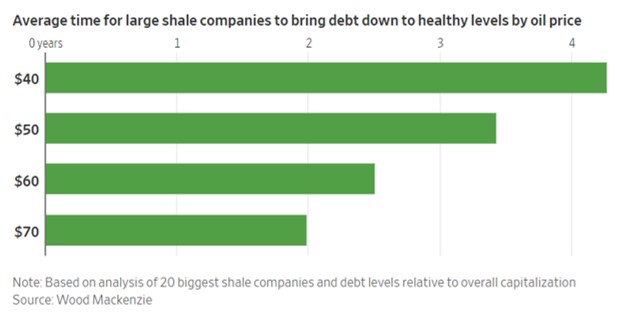
“There’s such huge pent-up demand and people want to travel,” said Gary Ross, chief executive of Black Gold Investors and founder of consulting firm PIRA Energy Group. “Demand will be back to 2019 levels earlier than people think, probably by the third quarter.” He expects oil to hit $60 some time in the first half of the year.
Among the “Ten Surprises” Byron Wien and Joe Zidle of investment giant Blackstone Group Inc. included on their annual list of prognostications for the year ahead: crude rising further to $65 and energy numbering among the stock market’s leading sectors.
“If they have to, they can slow the pace of bringing supply back,” said Rob Thummel, a senior portfolio manager at investment firm Tortoise. “They seem to be pretty disciplined.”
- 01/07/2021 – combined managed money position at the highest in oil industry so far
Hedge Funds Haven’t Been This Bullish On Oil Since Pandemic Started
Money managers started 2021 with optimism that oil prices will benefit from a rise in economic activity as vaccines are being rolled out. Hedge funds and other portfolio managers held at the end of December 2020 the most bullish overall position in the most traded oil futures and options contracts since the beginning of 2020. Fund managers held an overall net long position—the difference between bullish and bearish bets—of as much as 741 million barrels equivalent of oil in the six most important petroleum contracts as of December 29, according to data from exchanges compiled by Reuters columnist John Kemp.
This net long position was the highest net bullish bet on oil since January 2020, just before prices started crashing as the pandemic roiled oil and all other markets in February, March, and April.
The bullish positioning of the hedge funds at the start of 2021 was not without reason. The market overall, as well as many analysts, believe that oil will rise this year as global oil demand recoups most (but not all) losses from 2020. Vaccine rollouts are expected to support economic activity and travel later this year, while stimulus packages are set to boost major economies to rebound from last year’s recessions.
Hedge funds, therefore, started 2021 with a record net long position in all commodities, according to Saxo Bank.
COT: Speculators hold record commodity long into 2021
This summary highlights positions and changes made by speculators such as hedge funds and CTA’s across commodities, forex, bonds and stock index futures and options up until last Tuesday, December 29. A general quiet holiday impacted week, which nevertheless saw speculators increase bullish commodity bets to a record 2.5 million lots representing a nominal value of $125 billion.
Commodities
The Bloomberg Commodity Index traded higher by 0.7% higher during the reporting week thereby supporting a strong yearend finish for the commodity sector. A sector which took a 26% pandemic-led hit during the first quarter before spending the belly part slowly recovering before sprinting into yearend on vaccine optimism, a weaker dollar and emerging focus on reflation trades.
These developments have all helped create a much improved environment for a sector which has not been part of the strong rally seen across other asset classes during the past decade. From an investment perspective and using the Bloomberg Commodity Total Return Index, the sector suffered a 64% slump between the 2011 peak up until the low point last March, which for the index was the lowest in more than 20 years.
Speculators have responded very forcefully to the improved sentiment during the past six month and as we enter 2021 they hold a total net long across 24 major commodity futures of 2.5 million lots, representing a nominal value of $125 billion. While the two previous peaks in 2017 and 2018 were primarily led by the crude oil market, the chart below shows how bullish bets have been spread out more evenly between the three major sectors of energy, metals and agriculture.
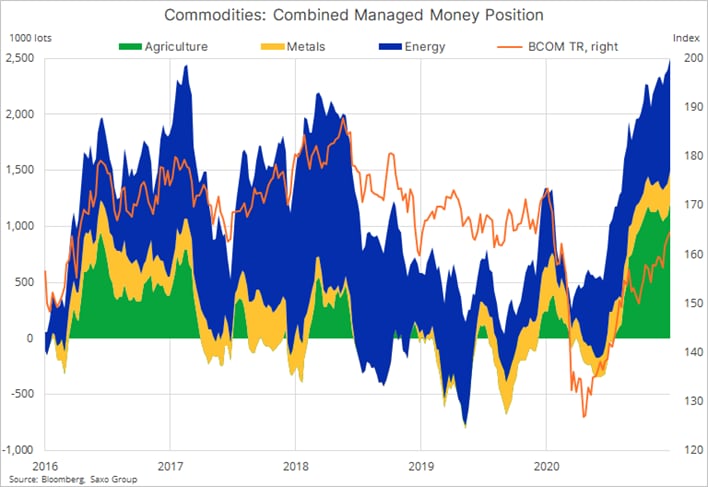
Most of last week’s buying occurred within the grains sector with several positions reaching multi-year highs. Not least corn where the net-long jumped by 25% to 332k lots, the highest since August 2012. Overall, the biggest bets are held in crude oil with the combined 614k lots long in WTI and Brent representing a nominal value of $30 billion, gold’s 137k lots long at a value of $26 billion and finally the soybean complex where the net-long in soybeans, meal and oil reached 399k lots or $19 billion nominal.
The net-long in crude oil and gold, the two biggest contracts in terms of exposure, remains well below their previous peaks which for crude oil was 1.1 million lots reached in March 2018 and 292k lots in gold that was reached in September 2019.
- 01/06/2021 – Consolidation and transition to new energy is coming
Q4 2020 Saw Jump In Oil & Gas Dealmaking
Oil and gas producers engaged in the most dealmaking of the year in the fourth quarter of 2020, according to analytics firm Enverus, Reuters reports.
Deals worth $27.1 billion were had by oil and gas producers in the fourth quarter—a $ billion increase from the prior quarter.
Bolstering the figures were three multi-billion-dollar acquisitions in the Permian basin, including Conoco’s substantial acquisition of Concho Resources for $13 billion, Pioneer Natural Resources acquisition of Parsley Energy for nearly $8 billion, and Diamondback’s acquisition of QEP Resources and Guidon Operating for $3 billion.
2021 should see U.S. oil and gas companies continue to ditch non-core assets and streamline and belt tighten, and perhaps continue down the path of sustainability in preparation for the incoming administration, which is seen as more climate-friendly.
- 01/05/2021 – performance of oil and commodities in 2020. Oil is at the bottom. Will Shale return in 2021?
Chart of the Week from oilprice.com

– Silver was the best-performing commodity in 2020, according to a Commerzbank analysis.
– Brent and WTI fared among the worst, only outpaced by a sharp decline in prices for gasoil.
– But a range of commodities performed strongly, particularly in the second half of the year in the wake of extraordinary fiscal stimulus around the globe as well as a loose monetary policy.
Market Movers
– Suncor Energy (NYSE: SU) says it will record a C$425 million impairment charge for the fourth quarter on its White Rose project.
– Royal Dutch Shell (NYSE: RDS.A) will lay off 700 workers following the shutdown of its Convent refinery.
– Ivanhoe Capital Acquisition Corp., the special purpose acquisition company led by billionaire mining investor Robert Friedland, is raising $200 million to invest in industries key to the global energy transition.
The megatrend in solar. The solar sector’s sole pure-play solar fund, Invesco Solar Portfolio ETF (TAN), is up 234% over the past 52 weeks, with a good chunk of those returns having come after Joe Biden was declared the winner of the U.S. presidential elections a month-and-half ago. That incredible momentum is certainly beginning to look like a big bubble in the making, but Wall Street remains bullish. And one secular trend is looking to completely redefine the solar sector.
EPA finalizes science rule. The U.S. EPA finalized a rule to limit what scientific research can be used in regulations, a move critics say is aimed at crippling the agency’s ability to regulate air and water pollution.
Interior finalizes NPR-A plans. The Trump administration on Monday finalized plans to open more than 80 percent of Alaska’s National Petroleum Reserve (NPR-A) to oil drilling. The NPR-A is adjacent to the Arctic National Wildlife Refuge.
Russia’s oil production falls for the first time. Oil production in Russia declined in 2020 for the first time since 2008.
Iraq struggles to pay debts. The New York Times looked at the brewing financial crisis in Iraq from the steep drop in oil revenues.
Permian showing signs of life. On the ground in the Permian basin, there are visible signs of an uptick in activity. More traffic, higher production, and better-than-expected revenues for the New Mexico state government. New Mexico’s oil production increased by 5.5% in the third quarter.
Dallas Fed: Shale returning. The quarterly Dallas Fed survey showed a positive reading for its oil and gas index, the first positive reading since the first quarter of 2019. Multiple readings in the survey – capex, drilling activity, employment, oilfield services activity – showed improvement.

- 01/05/2021 – it seems like Saudi wants to be a role model on discipline of oil production. Might be good for oil price
Saudi Arabia to Cut Extra 1 Million Barrels a Day Of Crude
Moves comes after Riyadh agreed earlier in the day with other big producers to keep their collective output flat
Saudi Arabia said it would unilaterally cut 1 million barrels a day of its current crude production quota next month.
The announcement came after Riyadh had agreed earlier in the day with other big producers to keep their collective output flat, part of a now monthly assessment by the Saudi-led Organization of the Petroleum Exporting Countries and a group of big producers led by Russia. In that deal, the two groups, collectively called OPEC-plus, agreed to a complex deal to hold production unchanged from current levels.
- 01/05/2021 – agreement is temporarily good for oil price
Saudi Arabia, Russia Reach Oil Compromise, Sending Crude Above $50
Major producers agree to maintain output levels through February and potentially ramp up in March
Saudi Arabia and Russia reached a compromise on oil policy among the world’s biggest producers, agreeing to maintain output levels through February and delay any increase until March, according to officials familiar with negotiations.
West Texas Intermediary futures, the gauge for U.S. crude, passed $50 a barrel for the first time since February last year on the agreement, before slipping back to $49.69, up 4.4% on the day. Brent crude, the international benchmark, rose 3.7% at $52.98 a barrel.
After failing to agree to a deal on Monday, the two sides are set to complete the compromise later Tuesday, the people said, in a scheduled meeting between members of the Saudi-led Organization of the Petroleum Exporting Countries and a Russian-led contingent of big oil producers.
OPEC met virtually Monday with 10 Russia-led producers, a group that together has been dubbed OPEC-plus, in the first of their monthly meetings to review global oil demand and their output strategy. Last month, they agreed to increase production by 500,000 barrels a day, bringing their net cuts since the start of the pandemic to some 7.2 million barrels a day. The group is planning to restore a total of 2 million barrels a day of output in the coming months.
OPEC-plus agreed last year to cut output by a record 9.7 million barrels a day, and envisioned restoring it in increments of 2 million barrels a day assuming demand returned. In the summer, they moved to return the initial 2 million, and last month agreed to add a further 500,000 barrels a day.
- 12/31/2020 – lots of write down ($145 billion) for oil industry. Is it a kitchen sink year? Will it come back next year?
Exxon Confirmed a Big Write-Down. Another Quarterly Loss May Be on the Way.
Exxon Mobil stock is edging lower on Thursday morning, after confirming that it plans to write down the value of its assets by as much as $20 billion and may incur a fourth-quarter loss as it continues to grapple with the pandemic’s effect on energy prices.
The news comes on the last day of 2020, the worst year ever for oil energy write-downs, which totaled some $145 billion, excluding Exxon’s announcement. Oil prices haven’t traded over $100 a barrel since 2014, meaning the pandemic—which decimated energy demand as more people stayed home—came at a time when the industry was already struggling.
- 12/30/2020 – oil and raw materials might come back in 2021
Gold, oil set to power 2021 boom in raw materials
The ‘super bear cycle’ is over: analyst
A global economy that’s in recovery mode from a COVID-19-induced slowdown, a weakening U.S. dollar, unprecedented monetary stimulus and supply constraints is providing a favorable backdrop for everything from oil to copper to gold.
Signals are appearing that suggest the start of a “sustainable positive feedback loop between commodities, the dollar and emerging-market growth that has driven past structural bull markets,” wrote a Goldman Sachs research team led by economist Jeffrey Currie.
- 12/29/2020 -brent curve has moved back to contango, now is bearishness. Japan and Europe will phase out ICE vehicles by the mid-2030s. It seems like the life of oil/gas industry in shortened. So watch out.
Chart of the Week (from oilprice.com today)
– Oil is once again trapped between vaccine optimism and near-term pandemic pessimism.
– Vaccinations began across the EU in recent days, but there are signs of an economic hit in Asia on an uptick in infections.
– The front-end of the brent curve has moved back into contango, a sign of bearishness for the time being.

Japan to phase out ICE vehicles. Japan said it would end sales of gasoline vehicles by the mid-2030s, the latest major economy to chart a course away from the internal combustion engine.
Oil demand won’t recover until 2022. Global oil demand will likely take another year or so to return to pre-pandemic levels—by late 2021 or early 2022, according to IHS Markit. Other analysts see something similar. A “full-fledged demand recovery is shaping up to be a 2022 story, with the 2021 exit rate getting close but not quite at pre-COVID levels,” Raymond James wrote in a note. Developing countries will face structural hurdles to vaccination programs, resulting in a drawn-out recovery.
UK grid shows rapid decarbonization. The carbon intensity of electricity generation in the UK fell 60% in the six years to 2019. In 2019, renewables accounted for 37% of electricity generation. More recently, on December 26, wind accounted for more than half of the total. The UK grid will be coal-free by 2025 at the latest.
Is the energy transition creating an investment bubble? NextEra (NYSE: NEE), the solar power firm, overtook ExxonMobil (NYSE: XOM) as the most valuable energy company in the United States, albeit just briefly. Everyone is talking about hydrogen. The energy transition narrative is hogging energy headlines. But what if it turns out to be one huge bubble?
Goldman: Exxon is oversold. ExxonMobil (NYSE: XOM), Chevron (NYSE: CVX), and ConocoPhillips (NYSE: COP) have returned an average of -36% this year, a dreadful result. “That said, the stock that appears most dislocated relative to negative revisions is XOM, with shares down 40% relative to our cash flow per share estimate down 19%,” Goldman Sachs wrote in a note. The investment bank recently upgraded Exxon to a Buy rating.
- 12/27/2020 – great article to help me understand the mechanics and economics of fracking.
Fracking: From Breaking Shale to Breaking Even
Understanding the mechanics and economics of fracking can help investors understand the dizzyingly cyclical nature of energy markets
Fracking has been groundbreaking for the U.S. and the world. Up until 2000, U.S. onshore oil-field development had stalled; fracking breathed life back into hydrocarbon production. In September 2019, the country became a net monthly exporter of crude oil and petroleum products for the first time since the U.S. Energy Information Administration started keeping monthly records in 1973.
It also meant that the business of exploration became less speculative and almost like an assembly line. “With the new technology, all of a sudden your chances of being unsuccessful went way down,” notes Dan Pickering, founder of Pickering Energy Partners. “The odds that you found oil were 90% instead of 30%.”
One problematic aspect of fracking is its quick decline rate. Drawing oil and gas out of a conventional well is much like slowly pouring soda out of a can. Fracking looks more like what happens when you shake the can and open it. Hydrocarbons come out quickly but start losing momentum rapidly, too. Production in the Eagle Ford oil field in Texas, for example, declines 60% in a well’s first year and more than 90% over the first three, according to a study from the Kansas City Fed. Conventional oil fields register decline rates of just 5% to 10% a year.
But a well can be fracked in months, not years. That short-cycle nature partly explains the way producers have conducted business. Energy companies, particularly publicly listed ones, have had to constantly drill new wells to maintain steady production. In many cases, they racked up substantial debt to fund new drilling, risking bankruptcy at times of depressed oil or gas prices. Hundreds of small firms and some big ones like Whiting Petroleum and Chesapeake Energy saw shareholders wiped out.
Frackers have repeatedly claimed to be more disciplined than in the past. Conventional producers have, too, almost as long as there has been an oil business. Booms and busts aren’t going away but fracking, despite its short time on the energy industry’s center stage, might have changed them permanently. Peaks and valleys are now more frequent.
Combine that with high costs and easy money and it is clear that this short-cycle industry could do with a longer-term memory, including from its investors.
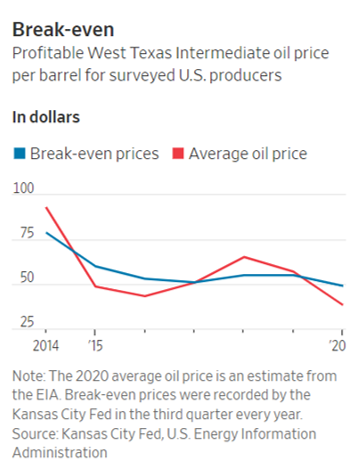
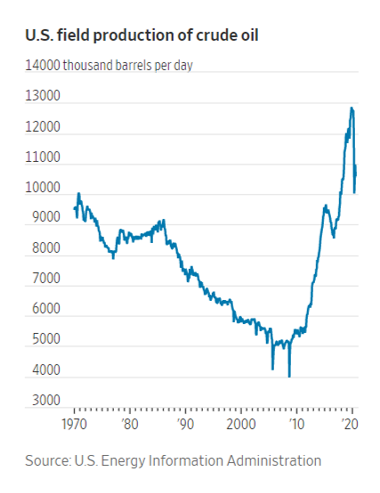
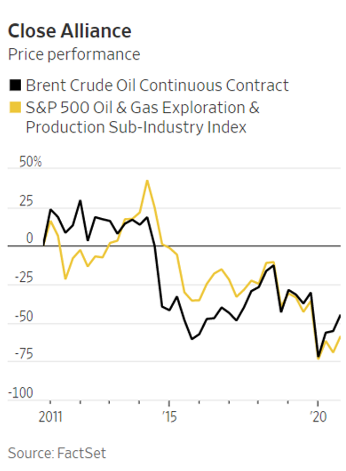
- 12/27/2020 – Peak oil supply will come due to drastic cutbacks in investment and only later recover at a slow pace?
The Very Real Possibility Of Peak Oil Supply
In an excellent op/ed, vice chairman of IHS Markit Dan Yergin observes that it’s almost inevitable that shale output will go in reverse and decline thanks to drastic cutbacks in investment and only later recover at a slow pace. Shale oil wells decline at an exceptionally fast clip and therefore require constant drilling to replenish the lost supply. Although the U.S. rig count appears to be stabilizing thanks to oil prices rebounding from low-30s to mid-40s, the latest tally of 320 remains far below the year-ago figure of 802.
Although OPEC+ nations currently have about 8 million barrels of oil per day of spare capacity, the current price levels do not support much drilling at all, and the extra oil might only be enough to cover the shortfall by U.S. shale.
- 12/19/2020 – European are locked down till Jan 06, vaccine is delivered and takes time to reach everyone. The demand for oil can only increase gradually, at least, before June 2021
- The FDA gave the green light to a second Covid-19 vaccine.
- The U.K. says a new coronavirus strain is 70% more transmissible than earlier variants of the pathogen.
- The U.S. reported nearly 250,000 new cases for Friday, a record high.
- 12/17/2020 – Anti-fracking and green New Deal might drive up the oil price, good for GUSH and ERX?
Biden interior nominee Deb Haaland is anti-fracking, co-sponsored AOC’s Green New Deal
Haaland would make history as first Native American to lead the Department of Interior
President-elect Joe Biden announced who will lead his climate team, including a co-sponsor of the Green New Deal, Rep. Deb Haaland, D-N.M., on Thursday night,.
“The undeniable, accelerating, punishing reality of climate change is exacting an incalculable toll on lives and livelihoods in every community across the country,” a Biden-Harris transition official said in a statement.
“They will work closely with communities who bear the outsized burden of environmental injustice, including Tribal Nations and communities of color, and young Americans who will live with the long-term consequences of climate change,” they added.
- 12/14/2020 – be cautious on oil recovery, at least, the recovery may be slow paced
Oil’s Recovery Next Year Could Be Complicated
The U.S. began rolling out Pfizer’s Covid-19 vaccine on Monday, another hopeful sign that the world will return to normal next year. But oil demand won’t simply snap back to prior levels immediately. OPEC released its latest monthly forecast on Monday, and the group reduced its expectations for 2021 oil demand.
In particular, the Organization of the Petroleum Exporting Countries has some concerns about the first half of next year because of “uncertainty surrounding the impact of Covid-19 and the labor market on the OECD [Organization for Economic Cooperation and Development] transportation fuel outlook.”
In total, OPEC expects oil demand to come in at 89.99 million barrels a day in 2020, down 9.77 million barrels from 2019. In 2021, demand will rebound by 5.9 million barrels a day to 95.89 million. That new forecast is 350,000 barrels below OPEC’s prior estimate.
Brent crude futures, the international benchmark, fell 0.6%, to $49.65 a barrel, on Monday. West Texas Intermediate futures fell 0.2%, to $46.47 a barrel. Both benchmarks have risen for six straight weeks, lifting the stocks of oil companies.
- 12/12/2020 – SPAC is investing heavily in Green energy companies , which with very minimum revenue, just like what they did before for oil companies. Need to be cautious
Investors Turn to SPACs for Clean-Energy Bets
Weary of poor shale returns, investors seek better results from startups focused on battery storage and other emerging technologies
Over the last decade, Wall Street poured hundreds of billions of dollars into the U.S. oil patch, fueling a fracking boom that transformed America into the world’s leading crude producer.
Now, burned by years of poor returns, many of those investors are flocking to businesses that aim to wean the world off fossil fuels.
For the first time on record, private-equity firms globally have done more deals this year in clean technologies than in oil and gas, though the average deal size was smaller, according to PitchBook data as of early December.
That investment shift is likely to unleash a torrent of projects in renewables and related technologies, creating big winners and, as in fracking, its share of losers. Already, changing capital flows are remaking the global energy hierarchy, turning electric-vehicle companies with no revenue into Wall Street darlings and forcing oil and gas firms to scrounge for cash.
- 12/12/2020 – Green energy companies become giants challenging traditional oil companies
The New Green Energy Giants Challenging Exxon and BP
Three utilities that invested early in wind and solar power now rival major oil companies in market value. Can they continue to dominate as the world’s shift to renewable energy accelerates?
A decade ago, NextEra, Iberdrola IBDRY -0.85% and Enel ENEL -1.96% were sleepy regional utilities with little name recognition.
Now they are fast-growing giants with market values rivaling the likes of oil majors Exxon Mobil Corp. XOM -0.48% and BP BP -1.70% PLC, thanks to their early all-in bets on wind and solar farms.
And still, many people have never heard of them.
Their early lead in the global transition away from oil has put these companies on track to become the major energy companies of the coming decades—the “green energy majors.” But they now face the threat of increased competition as some of the oil titans that have traditionally dominated the energy industry diversify into wind and solar power.


Investors, however, have been eyeing NextEra for years. Its share price has roughly tripled over the past five years to reach a market value of $146 billion, and for the first time it briefly topped Exxon’s value this year in a watershed moment for renewables producers. Its project backlog totals 15,000 megawatts—an amount just larger than its current portfolio, built over two decades.
BP Capital Fund Advisors, a Dallas-based investment adviser that has historically focused on oil and gas, bought shares in NextEra in March as part of an effort to diversify with investments in renewables. The firm was founded by the late T. Boone Pickens, the oil industry magnate who took an interest in wind and solar power late in his career. He died last year.
“NextEra stands alone in terms of what it offers in exposure to the renewable theme,” said portfolio manager Ben Cook. “If you’re investing in energy now…that has to be part of the equation.”
- 12/12/2020 – So far, oil industry is still in a great slump compared with all other industries, is it a prelude of significant come back or gradually extinct?
here are the troubles in the oil patch
-
- Weak merger market
- Low Market Values
- Rising Bankruptcies
- Idled Rigs
- lost jobs
Troubles in the Oil Patch: Low Prices to Lost Jobs
Despite a recent oil rally, energy companies are riding out a historic downturn. Collectively, they have lost more market value, on a percentage basis, than any other major sector this year.

Oil prices briefly went negative. Exxon Mobil Corp. was booted from the Dow Jones Industrial Average. Pioneering fracker Chesapeake Energy Corp. succumbed to bankruptcy.
By some measures, the pandemic hit the energy industry harder than any other major segment of the U.S. economy in 2020. While crude prices have staged a rally in recent weeks, the sector is still going through one of the most brutal years in its history.
Producers scrambled to shut in wells and halve investments in the oil patch. Thousands of oil workers lost their jobs. Dozens of companies sought chapter 11 protection from creditors, while others sold themselves for little more than their diminished market value.
A key index of oil and gas producers and other energy firms continues to lag behind the S&P 500. Oil-and-gas companies collectively lost more market value, on a percentage basis, from the beginning of the year than any other major sector, including commercial airlines and hotels.
Here is a look at the troubles in the oil patch.
Weak merger market
While many investors and analysts believe consolidation is needed in the industry, few buyers are lately willing to pay a premium for oil-and-gas companies. The premiums buyers have paid for such companies over their market value fell after oil crashed in 2015 and haven’t really bounced back since. This year, they dropped further, to an average of about 8%.

Low Market Values
Even after the recent rally, the collective market capitalization of the 25 largest U.S. oil-and-gas companies has dropped about 32% since the end of last year, to about $574 billion, according to data from S&P Global Market Intelligence. That is down from $1.17 trillion at the end of 2013, close to the peak of the decade’s oil boom.

Rising Bankruptcies
This year, 43 North American oil-and-gas producers filed for bankruptcy through October, in cases involving $53.9 billion in total debt, according to the law firm Haynes & Boone LLP.

Idled Rigs
The U.S. rig count, an indicator of oil-field activity, has increased slightly in recent months. Energy companies have put 76 drilling rigs back to work since mid-August, according to oil-field services company Baker Hughes Co. At 320 active units, that is still less than half of the 793 they had running in early March, before statewide lockdowns.

Lost Jobs
Employment in support activities for oil and gas has dropped by one-fourth since January, according to the Bureau of Labor Statistics, as oil-field work disappeared in the pandemic. That sector has lost almost half of its jobs since early 2015. In oil-and-gas extraction, employment was essentially flat in 2020 but is down about 20% compared with January 2015.

Sluggish Prices
Oil prices have surged in November and stood around $45 per barrel this past week, their highest levels since spring. Still, while oil producers in some areas of the Permian Basin of West Texas and New Mexico can break even at such prices, most U.S. shale regions require higher prices, data from the consulting firm Rystad Energy shows.

- 12/12/2020 – Oil industry needs more discipline on production to place oil price in check. The industry no longer has access to the “incredible amounts of capital” it did just a year ago, but it needs more discipline
Oil’s Recovery Is No Sure Thing
High prices will require capital discipline from the U.S. shale industry as well as a rebound in global demand
Vaccines have buoyed hopes that oil demand will soon recover, and the Brent global benchmark is back above $50 a barrel. But traders may be underestimating the responsiveness of U.S. supply.

True, shale producers have consolidated this year and come under investor pressure to focus on cash flow rather than growth. “The rules of the game have changed” and the industry no longer has access to the “incredible amounts of capital” it did just a year ago, says Benjamin Shattuck of energy consultant Wood Mackenzie.
Yet any newfound discipline may not last. Oil is up about a quarter since early November, when the first effective vaccine was announced. At the current U.S. benchmark price of just under $47, many reserves could be profitably lifted, particularly with today’s lower drilling costs. “As you move above $45 a barrel it gives you way more commercial drilling,” says Alisa Lukash of energy consultant Rystad Energy, referring to U.S. shale.
Oil Forecasters’ Gloom Eclipsed by Vaccine Hope
For the first time since March, there are silver linings to be found in the oil-demand outlook

The organizations’ monthly reports came only a few days after Pfizer’s vaccine news emerged. They were careful not to bake an earlier-than-expected vaccine scenario into their projections. OPEC noted in its report that “some potential upside could further materialize” if an effective vaccine becomes marketable in the first half of next year, while IEA struck a more cautious tone, saying “it is far too early to know how and when vaccines will allow normal life to resume.”
- 12/12/2020 – debate on come back of oil industry
- oil companies disagree on oil – Exxon continue to increase production, while reduce investment; BP plans to reduce production, increase investment on Green energy
- IAE expects oil demand to peak in 2030s. Next year, capital expenditures in renewable power supply are expected to overtake oil and gas for the first time in history, according to Goldman Sachs Group Inc.
- Oil stocks have typically moved in tandem with oil prices, creating boom and bust cycles. Currently, stock price (-70%) is way below oil price (-49%). So we might have some rooms for stock price to run up.
- minimum rate of return required to finance long-term oil projects has increased to as much as 20%, according to Goldman, compared with as little as 3% for renewable projects. That gap suggests investors are factoring in higher regulatory costs for carbon producers, according to Goldman.
- oil companies cut dividend during peak of CV-19 crisis, now they add back somewhat. Still, they might need cash for future investment, not dividend. This makes them less attractive to income investors.
The Dicey Economics of Investing in Oil During Covid-19
Even before a pandemic sapped the world’s thirst for crude, fossil-fuel producers faced threats from renewable energy, electric vehicles and worries about climate change. Is now the time to strike, or slip away?
The biggest oil companies increasingly disagree on what the future holds. Exxon Mobil Corp. continues to invest in increasing oil production and has said it believes oil demand will increase for years to come. BP PLC, by contrast, believes demand may already have peaked and plans to reduce its oil and gas production by 40% over the next decade as it pivots to green energy.
Brent crude prices topped $50 a barrel this week for the first time since early March, closing at $49.99 Friday, part of a broad market rally fueled by investors’ anticipation for a 2021 economic resurgence.
The quandary investors now face is this: Will global oil demand recover before electric vehicles, renewable power, and environmental regulations permanently dent the market for fossil fuels?
Reduced ambitions
There are signs that demand may not recover permanently. The International Energy Agency expects that global oil demand will peak sometime in the 2030s even as the world churns through around 90 to 100 million barrels of oil a day for the next two decades. Next year, capital expenditures in renewable power supply are expected to overtake oil and gas for the first time in history, according to Goldman Sachs Group Inc.
Investors are one of the main forces driving this transformation, according to Goldman. Climate change-related shareholder resolutions have nearly doubled since 2011, the bank said, with the largest share of them, about 30%, directed at oil and gas companies. This fall Exxon temporarily lost its crown as America’s most valuable energy company to NextEra Energy Inc. —a Florida utility that has become a green giant with aggressive wind and solar farm investments.
Shaky Recent Past
Oil stocks have typically moved in tandem with oil prices, creating boom and bust cycles. Both are down from a decade ago, and more recently the main index of U.S. oil producers has significantly trailed oil price gains.

The challenge facing traditional oil and gas companies is how to make money as the industry changes. The minimum rate of return required to finance long-term oil projects has increased to as much as 20%, according to Goldman, compared with as little as 3% for renewable projects. That gap suggests investors are factoring in higher regulatory costs for carbon producers, according to Goldman.
The second option, predominantly pursued by European oil companies, involves a dramatic corporate shift to investing in renewable energy, based, in part, on a belief that oil demand may plateau sooner than expected. BP and Royal Dutch Shell PLC have pledged to reach net-zero carbon emissions, using oil proceeds to fund billions of dollars of investment in renewable energy. Both have cut their dividends to free up cash. BP plans to shrink its fossil fuel production over time.
While many investors support green investment, they are unconvinced major oil companies can make the new business profitable. According to a Boston Consulting Group survey of 150 investors, 86% believe clean energy investments could help oil-and-gas companies, but only 25% of them said oil and gas stocks will become a larger part of their portfolio in the next decade.
One activist investor, Jeff Ubben of Inclusive Capital Partners, is buying the European transition story. He invested $75 million in BP in March and set a five-year goal to make money from the investment.
Those warnings don’t faze Mr. Waterous, who previously headed investment banking at the Bank of Nova Scotia before founding Waterous Energy Fund in 2017. He said he believes investor disaffection with the industry is divorced from its supply and demand fundamentals, and that is why he pounced this spring after prices turned negative.
Within days, his team had put out proposals to acquisition targets. His fund purchased 45% of oil sands company Osum Production for about $111 million—one of the few private equity oil deals thus far in 2020. In November, the fund launched a takeover bid to buy an additional 40% of Osum’s shares for about $99 million.
“It became a five-alarm fire,” he said. “It became, ‘Oh my God, we’ve got to do this right away.’”

- 12/10/2020 – Once economy is back, oil is needed
Brent Crude Rises Above $50 as Oil’s Turnaround Continues
Thursday’s advance continues a monthslong rebound from oil’s April lows around $19 a barrel during global economic shutdowns
Brent crude prices topped $50 a barrel for the first time since early March on Thursday, the latest milestone in a remarkable oil-market recovery fueled by supply curtailments and drivers returning to the road.
The global gauge of oil prices advanced 2.8% to $50.25 a barrel, continuing a monthslong rebound from its April lows around $19 during global economic shutdowns. While Brent started the year above $65, its recent rally shows how hopes for coronavirus-vaccine distribution and economic-stimulus programs are helping to heal global energy markets.

- 12/10/2020 – is oil back? also good idea to study OXY.ws
Brent oil tops $50 for first time since March panic, lifting energy names
- Brent crude (CO1:COM) exceeds $50/bbl for the first time in nine months, as hopes of a faster demand recovery after the release of COVID-19 vaccines outweighs a huge rise in U.S. crude inventories.
- February Brent +4.4% to $51.01/bbl; January WTI (CL1:COM) +4.7% to $47.65/bbl.
- Energy (XLE +4%) easily leads the S&P sector standings, and today’s top five gainers in the S&P 500 are all oil and gas producers: APA +11.9%, OXY +9.9%, FANG +7.2%, DVN +5.8%, HES +5.5%.
- Also: CVX +4%, XOM +3.2%, MRO +3.2%, CLR +7.4%, WPX +5.8%, EOG +4.2%, PXD +3.8%.
- “The crude oil market is looking beyond the numbers,” says market analyst Phil Flynn, referring to the massive 15.2M-barrel build in U.S. crude inventories. “The market held key support and is now focusing on vaccine distribution that could lead to a spike in demand that should drive global supply back below normal levels next year.”
- “It seems that cheap money, good sentiment on the stock market and, hopes that demand will soon normalize thanks to corona vaccines count for more than the reality,” Commerzbank’s Eugen Weinberg says.
- Integrated oil majors remain a good proxy for oil prices, as “their upstream Exploration & Production profits account for the majority of profits,” Invest to Retire writes on Seeking Alpha today. “This is despite their integrated model, which includes supposedly counter-cyclical oil price impacts in segments such as refining and marketing (where lower crude input prices should boost profits, and thus be counter-cyclical with oil prices).”
- ETFs: USO, XLE, UCO, XOP, VDE, GUSH, OIH, BGR, ERX, BNO
- 12/07/2020 – Infrastructure plan, if comes, will significantly boost energy and metal industries. It seems like Biden admin with bipartisan support has great incentive to start it
What Might Unite a Divided Washington Behind Joe Biden? Unsexy Infrastructure
Roads, bridges, airports, subways, broadband—infrastructure might be the way to smash through the political roadblocks
Here’s a final impetus for action: Mr. Biden loves the idea of a big infrastructure push. When The Wall Street Journal sponsored a Democratic candidate forum on infrastructure plans in Nevada earlier this year, Mr. Biden was an eager participant. “Infrastructure is not a Republican or a Democratic thing,” he declared. “There’s overwhelming incentive.”
Perhaps we will soon know whether that’s truly the case.
- 12/07/2020 – old oil companies (like Exxon) are adapting to change for the new energy landscape, so it is good for the long run for these companies
Exxon Under Pressure From New Activist Fund
Engine No. 1 plans proxy fight for four Exxon board seats
Exxon Mobil Corp. is facing the threat of a proxy fight from a newcomer activist investor with a sustainability bent that wants the beleaguered energy giant to act faster to remake itself.
Engine No. 1 LLC, an investment firm launched by Chris James last week, is preparing to send a letter to Exxon’s board urging the Irving, Texas-based company to focus more on investments in clean energy while cutting costs elsewhere to preserve its dividend. The letter, a copy of which was viewed by The Wall Street Journal, identifies four people the firm plans to nominate to Exxon’s 10-person board.
Exxon has been taking actions to address shareholder concerns. Last week, it retreated from Mr. Woods’ ambitious plan and said it would cut billions of dollars from its capital spending every year through 2025 and focus on investing in only the most promising assets. It also signaled it planned to take a write-down of as much as $20 billion on the value of natural-gas assets—a move it had long resisted—mostly stemming from the disastrous purchase of XTO Energy Inc. a decade ago.
Exxon shares have risen about 9% since the announcement.
- 12/06/2020 – energy transition needs at least $40 Tril bill and oil companies have to help with the transition tremendously. Vaccine will facilitate the oil recovery
Who Will Foot The $40-Trillion Energy Transition Bill?
Energy Transition To Cost At Least US$40 Trillion
Yet, all the pledges from government and corporations are just tiny fractions of the true cost of the energy transition.
If the world is to come anywhere close to limiting global warming to 2 degrees Celsius or below, it will need, collectively, a bare minimum of US$30 trillion to US$40 trillion of investment in energy systems and decarbonization of industries where emissions are notoriously hard to abate such as steel and cement making. That’s Wood Mackenzie’s bare-minimum estimate of investments needed to support the energy transition and the net-zero emission aspirations of a growing number of countries.
Who Will Pay For It?
The first to move will be the governments, via green stimulus packages and climate policies of support for clean energy technologies.
Of course, this in itself will not be enough. Governments, therefore, are hoping that their packages and policies will incentivize private investment into sectors crucial for reducing emissions such as increased shares of renewable electricity generation, electric vehicles (EVs), carbon capture and storage, and green hydrogen.
Around one-third of global economic recovery packages over the next year and a half is earmarked for green economic recovery, according to estimates by Prakash Sharma and Jonny Sultoon of WoodMac’s Energy Transition team and Peter Martin, WoodMac’s Head of Economics. Governments have pledged to pour around US$4 trillion into “building back greener”, one-third of the collective US$12-trillion global recovery packages over the next 18 months. The US$4-trillion green incentives are expected to attract private capital two to three times higher, WoodMac says.
So the world could have as much as between US$12 trillion and US$16 trillion in investment in the energy transition within two years. But it will need more—much more investment and much more collaboration to not lose the momentum.
Governments need to promote all types of low-carbon technologies and hope for private capital to fund or co-fund development of those technologies to see if their costs could be brought down to levels that could make mass deployment economically feasible.
Government stimulus packages and incentives for green technologies, combined with company targets for becoming net-zero businesses, will not come even close to beginning to fund the energy transition. It will need much more capital and many private investors to believe in the rewards of the energy transition, including in the financial returns in the long term.
A Major Oil Rally Could Be On The Horizon
And here are two reasons to stick with oil:
#1 Vaccine optimism will keep driving things forward Barely a week after pharmaceutical giants Pfizer and BionTech gave the world hope of an effective Covid-19 vaccine, peer Moderna Inc. (NASDAQ:MRNA) has unveiled a potentially better cure.
More vaccines in the pipeline
Other than his never-ending tweetstorm, Trump has mainly kept a low public profile after losing to Biden in one of America’s most divisive elections in modern history. But a few days ago, he came out and publicly accused Pfizer of delaying its Covid-19 vaccine ostensibly in a bid to ruin his chances at re-election.Related: 25 Energy Stocks To Buy Or Sell After The Election
Well, guess what, it appears several other pharmaceutical companies are guilty of the same curious timing of their own—maybe even better—vaccines.
CureVac‘s (NASDAQ:CVAC) says its CVnCoV vaccine is stable for three months at +5 Celsius, or the standard refrigerator temperature. The vaccine remains stable for up to ready-to-use room temperature for 24 hours.
Sanofi and GlaxoSmithKline‘s have announced that their two-dose recombinant protein vaccine can be stored between 2°C- 8°C.
Johnson & Johnson also has a Covid-19 vaccine in the pipeline, which, if successful, could be stable at refrigerated temperatures of 2°C – 8°C for at least three months and up to two years at -20 °C.
In short, there seems to be no shortage of Covid-19 vaccine candidates that are potentially even more stable than the Pfizer/BionTech vaccine.
Brighter outlook
That’s music to the ears of the oil and gas market, coming after a second wave of Covid-19 infections effectively killed the oil rebound.
Better still, the Pfizer and Moderna vaccines could go into mainstream distribution in a matter of weeks. Indeed, broad vaccine access is expected by mid-2021.
That might be just in time to validate OPEC’s latest projections, which have called for the oil market to bounce back next year at a historically quick pace. According to the July report, OPEC sees oil demand spiking ~25% to 29.8 million barrels per day in 2021, slightly above levels recorded in 2019.
Obviously, a lot of that will hinge on OPEC’s ability to maintain production discipline, but so far, the coalition has remained committed after the harsh lessons of the past few months.
#2 Our Energy Transition Won’t Happen Without Oil & Gas
No matter how massive the hydrogen hype is, or how much money is being poured into this as the answer to our clean energy future, it’s still not a near-term solution.
It’s science fiction to imagine that oil and gas will suddenly disappear because of renewable energy progress. This is all longer term, even if the media makes it seem like it’s going to happen tomorrow.
It’s been clearly established that natural gas will be the bridge to a clean energy transition, especially since electricity will likely end up being one of our most important energy sources, and natural gas is at least cleaner-burning than oil.
For the near to medium-term, it’s only the COVID demand culling that’s really trouncing oil, and all the positive vaccine news will likely continue to drive forward momentum. And in the meantime, if oil demand starts to slow compared to pre-COVID rates as we bolster renewables, natural gas demand should emerge stronger still.
- 12/06/2020 – Oil producing industry might come back from the historical low to somewhat normal, I agree with Valueline. Also, may be lots of M&A opportunities for special situation investments
oil_producing_VL (Oct 30, 2020)
- Although both European and American oil companies agree that climate change is a threat, the urgency with which they are planning to transform their businesses couldn’t be more different.
- For the first time in a century, there are no rigs searching for oil in Venezuela. The collapse in oil prices has left this country’s economy in tatters.
- M&A activity in the oil patch is increasing. Acquirers, however, are being very picky about what they buy.
- While Exxon Mobil and Chevron are betting on a long term future for oil and gas, BP, Elf Aquitane, Royal Dutch Shell, Eni of Italy, Total of France, Repsol of Spain, and Equinor of Norway are all gambling on a future as electricity providers, using
renewable fuel sources such as wind, solar, and hydro. American oil executives state that it would be folly for them to switch to renewables, arguing that it is a low-profit business that utilities and alternative-energy companies can pursue more effectively. They say that it is only a matter of time before oil and gas prices recover as the pandemic recedes. Indeed, they are doubling down on production by increasing their M&A activity (see below). After all, someone has to produce oil and gas if many of their European counterparts are shying away from it. - At the same time, the U.S. conglomerates are also trying to reduce methane emissions via increased carbon capture technology.
- In reality, oil and gas will probably be around for at least another 25 years. It will take decades to replace the more than one billion internal combustion engines on the road, as well as the fleets of trucks, airplanes, and ships that run on fossil fuels.
- The prospect of tepid worldwide demand for oil and gas for some time to come is forcing many of the constituent companies in this industry to team up to survive, Chevron recently acquired Noble, and Devon Energy said it would buy WPX for $2.56 billion.
- WTI oil prices will have to average at least $46 a barrel before many of the companies in this sector will be able to thrive. This is unlikely to occur until some time next year, when pandemic concerns (hopefully) recede and economies around the world recover to prepandemic levels. Until then, we forsee a slew of companies in this
sector struggling to survive. - Headwind: Should Joe Biden win, the oil and gas sector can expect to see greater regulations regarding environmental safety and greenhouse gas emissions placed upon it.
- 12/05/2020 – metals (copper, zinc, prices soaring, related stock prices are jumping too. Copper might go to 2011 year high. Major catalysts:
- coronavirus vaccines and stimulus programs will drive a boom in manufacturing activity;
- Industrial metals are the building blocks of construction; A flurry of buying in China is leading the way;
- Supply was being disrupted as much if not more so than demand;
- Metal prices will likely receive an additional boost from a shift toward renewable energy, traders and large producers like Freeport and Glencore PLC say. Green energy projects from electric-car charging stations to wind turbines use large amounts of copper and other metals, contributing to the excitement in the sector.
Soaring Metals Prices Signal Bets on Global Economic Recovery
Hopes for vaccines and stimulus are boosting investor sentiment as part of a vast market rally
Investors are piling into wagers on industrial metals like copper and nickel, betting that coronavirus vaccines and stimulus programs will drive a boom in manufacturing activity as part of a global economic resurgence.
Prices for copper have risen to their highest level in almost eight years. Iron ore, the main ingredient of steel, is one of the best-performing assets in 2020. Other raw materials, such as aluminum and zinc, have added roughly 15% since the end of September and 40% or more since mid-May. And shares of metals producers, including Freeport-McMoRan Inc. and Century Aluminum Co. , are on a tear, climbing alongside other stocks closely tied to economic growth.
Industrial metals are the building blocks of construction, key to making everything from houses to electric cars. Their prices are particularly sensitive to manufacturing activity in China because the country accounts for roughly half of global demand for copper and other materials. The faster-than-expected recovery there has sparked a reversal in prices, which had languished in recent years due to trade tensions between the U.S. and China, even before pandemic lockdowns dented demand.
The climb highlights the scope of the recent market rally, which propelled major stock indexes to all-time highs. Vaccine trial results and U.S. President-elect Joe Biden’s victory eased sources of angst on Wall Street, fueling bets that economic stimulus measures will further juice asset prices. With stocks at records and bond yields still near all-time lows, some of that money is now moving toward raw materials, which remain well below their historic peaks.
A flurry of buying in China is leading the way. Net imports of refined copper in the world’s second-largest economy are on course to rise to a record 4.4 million metric tons this year, according to Goldman Sachs, with the government’s strategic stockpiling of commodities contributing to the demand.
Some analysts expect copper prices will eventually rise to around their 2011 record, and investors are betting that vaccine distribution will contribute to that climb. Candice Bangsund, a portfolio manager at Fiera Capital, increased her investment in Canadian stocks this summer to wager on higher commodity prices.
“The visibility alone has created a lot of momentum,” she said. “You can see the light at the end of the tunnel.”
Another reason some investors expect further gains ahead: supply disruptions. Mines in producing nations like Peru shut for part of the year due to the pandemic and labor strikes. And a lack of investment in new mining projects since metals prices slumped in 2014 and 2015 could contribute to a shortfall of material, analysts say.
“Supply was being disrupted as much if not more so than demand,” said David Lilley, managing director at metals hedge fund Drakewood Capital Management. The outlook for industrial metals is brighter now than it was during the record run a decade ago, he said.
Metal prices will likely receive an additional boost from a shift toward renewable energy, traders and large producers like Freeport and Glencore PLC say. Green energy projects from electric-car charging stations to wind turbines use large amounts of copper and other metals, contributing to the excitement in the sector.
“It’s really been a perfect storm,” said Mark Hansen, chief executive at Concord Resources Ltd., a U.K.-based commodities trader.
- 12/05/2020 – is energy industry gradually coming back due to economy reopen? Great for GUSH, EXP, XOP? steel, zinc and other commodity companies.
The Historic Capital Rotation Is Continuing
- We have been stalking a historic capital rotation.
- This historic capital rotation is happening, hidden in plain sight at first, and now more visible after the price action over the past month.
- November 2020 was one of the best months on record for energy equities. Smaller capitalization equities flourished too in November.
- Global economic growth continues to come in ahead of expectations, particularly in the manufacturing sector, and this is driving a new commodity bull market.
- Commodities and commodity equities are leading the historic capital rotation, and the last shoe to drop is interest rates, which should be much higher at the long end of the curve.
the reflationary and cyclical recovery could be just getting started, which seems counterintuitive, as the broader stock market remains embroiled in a euphoria that’s reminiscent of the late 1990s.
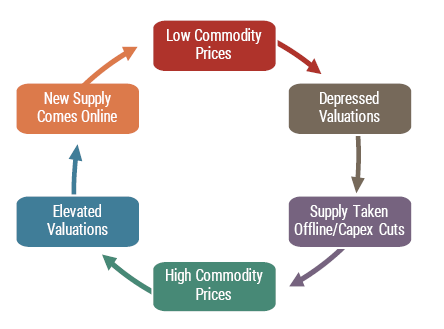
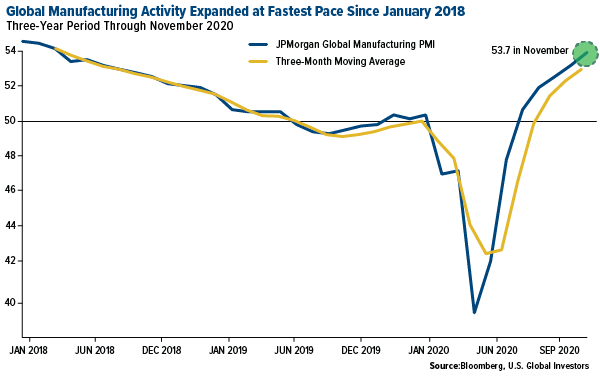
Very Few Are Prepared For Inflation
One irony of the record highs across many global stock markets and the resurgence in commodity prices is that investors as whole are still overly fearful, which is evidenced by global sovereign bond markets, where long-term interest rates remain much closer to 2020 lows, than to normalized levels from 2018-2019.
definition of Reflation: Reflation is a fiscal or monetary policy designed to expand output, stimulate spending, and curb the effects of deflation, which usually occurs after a period of economic uncertainty or a recession. The term may also be used to describe the first phase of economic recovery after a period of contraction.

look back at reflation trade in 2009
Reflation and How to Exploit It
Some Bet Commodities Will Boom as Stimulus Restarts Global Economy
The most talked-about investing strategy these days isn’t stuffing money in a mattress, it’s the reflation trade — the bet that the world economy will rebound, driving up interest rates and commodities prices.
Mr. Liinamaa suggests investors keep a “survivor bias.” That means “looking for names that have low cost structures and balance-sheet capacity to still be standing” even if demand doesn’t recover soon. He cites steel producer Nucor NUE 2.96% as one example.
Already there are signs that the market is less worried about deflation. That’s clearest in the market for Treasury Inflation-Protected Securities. Back in February, five-year TIPS were priced for a 0.5% drop in consumer prices, now that’s swung around to a 1.35% increase.
“China’s stimulus package may be even more important for the inflation trade than what happens in the U.S.” says Mr. Trennert. China pledged to devote nearly 75% of its $586 billion stimulus package to infrastructure development and reconstruction of an earthquake-stricken area. The U.S. is allocating just $48 billion to direct infrastructure spending.
China Impact
China’s efforts have rippled through to the markets for at least a few metals. Prices for copper, commonly used in power generation and construction, are up 44% from the low hit in December. Zinc, needed for producing galvanized steel used by utilities and the auto industry, is up 24% from its low.
Rising prices stand to benefit the commodity-producing economies. That has encouraged John Baur, a co-manager of Eaton Vance Global Macro Fund, to avoid long-term U.S. Treasurys in favor of Brazilian debt. That country’s stock market is up 12% this year.
China’s refined-copper imports soared 99% in February from a year ago, perhaps indicating that “they want to have the material available” when infrastructure projects start, says Catherine Virga, a researcher at commodities research firm CPM Group.
- 10/24/2020 – Biden will regulate oil companies to extinct
Mr. Biden Will ‘Transition’ You Now
He won’t ban fracking. He’ll merely strangle it with regulation.
- 06/07/2020 – oil rig continue to drop to historical low. Oil price is coming back, more oil companies are tapping back.
U.S. Shale Companies Are Turning the Oil Taps Back On
As oil approaches $40 a barrel, companies are bringing wells back online, even as the market continues to recover from the demand drop caused by the coronavirus
Current prices remain below the levels many companies need to drill new wells profitably. But the bounceback is sufficient for many to start up existing wells. The average price required to cover operating expenses on existing wells ranges from $23 a barrel to $36 a barrel in the U.S., depending on the region, according to a recent Federal Reserve Bank of Dallas survey.
EOG Resources Inc., EOG 7.54% one of the largest U.S. oil producers, has a plan to ramp its output back up in the third quarter.
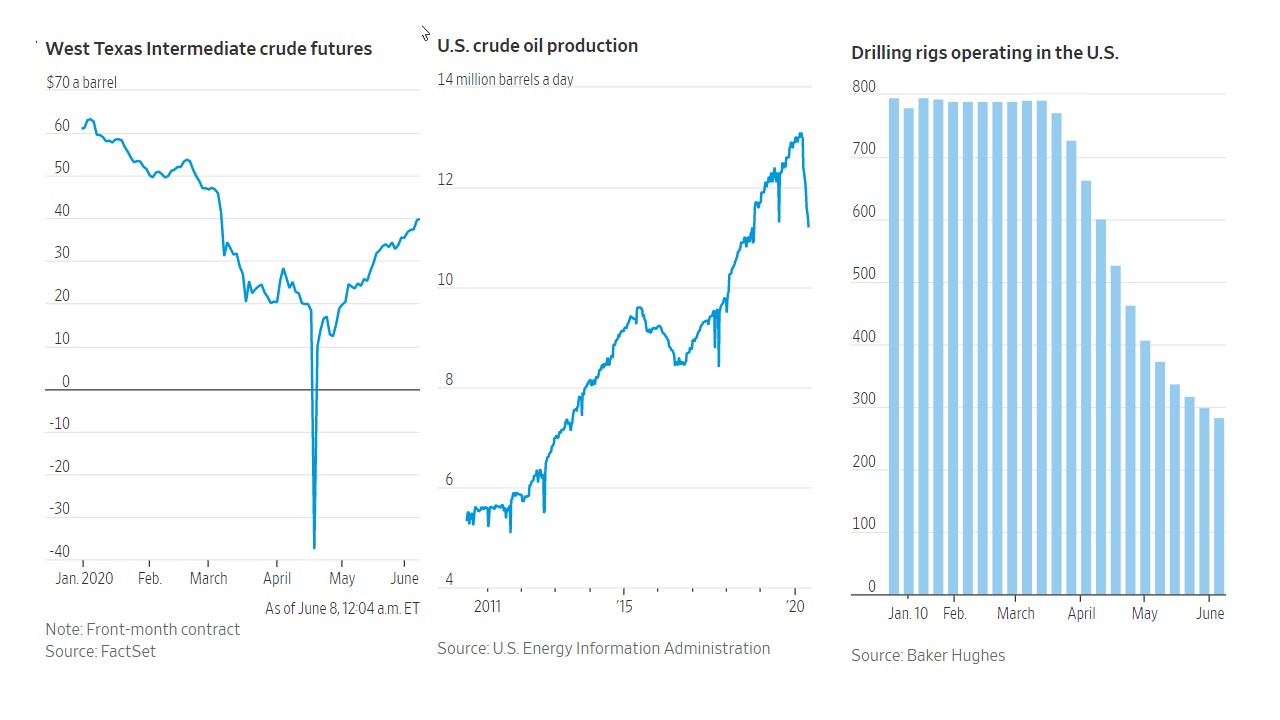
- 06/03/2020 – China and India’s oil demand will recover to last year level by June. US recovers relatively slower. We will see.
China Leads The Global Oil Demand Recovery
According to Wood Mackenzie, China’s oil demand is set to recover to 13 million barrels per day (bpd) in the second quarter of 2020, up by 16.3 percent from Q1.
“China’s demand for gasoline and diesel are expected to increase YoY from Q3 2020 onwards,” the consultancy said at the end of May, adding that eased lockdowns and preference for commuting in personal vehicles will push gasoline demand to a quick recovery and it is likely to return to last year’s levels by June 2020.
India’s fuel demand, which had crashed by 60 percent during the early days of its two-month lockdown, is set to reach pre-coronavirus levels in June, Indian Oil Minister Dharmendra Pradhan said last week.
In the United States, average national gasoline prices rose last week, and part of the increase can be attributed to higher gasoline demand, which saw a 7-percent week-over-week increase, AAA said earlier this week.
“Americans are slowly but steadily returning to driving, causing gas prices to increase across the country,” AAA spokesperson Jeanette Casselano said.
- 06/02/2020 – Upcoming Hurricane might impact the oil industry
Hurricane Fears Hitting U.S. Gulf as Tropical Storm Strengthens
Tropical Storm Cristobal, now gaining strength in the southern Gulf of Mexico, could grow into a hurricane as it moves toward the Texas and Louisiana coasts early next week, threatening offshore oil platforms, coastal refiners and agriculture.
The system’s winds have reached 40 miles (64 kilometers) per hour, the U.S. National Hurricane Center said in an advisory. It will continue to gather strength in Mexico’s Bay of Campeche before tracking northward toward the U.S., with the potential to make landfall as early as Monday, according to Jim Rouiller, lead meteorologist with the Energy Weather Group LLC.
In reaching tropical storm status, Cristobal marks the fastest start to the hurricane season since 1851, breaking a record set by Tropical Storm Colin on June 5, Phil Klotzbach, a hurricane researcher with Colorado State University, said on Twitter. Its wind speed would have to increase to at least 74 mph to be classified a hurricane.
“Everyone in the energy production area needs to be aware of this one,” Rouiller said by telephone. “I think we have a good chance of a hurricane, and the area from Houston and Galveston to New Orleans seems to be the most likely target.”
- 05/17/2020 – TSA checkpoint travel numbers are also continue to grow
TSA checkpoint travel numbers for 2020 and 2019
- 05/17/2020 – daily requests for driving directions on Apple Inc.’s Maps app in US had dropped almost 50% from mid-January, according to data from the technology company. As of May 17, that shortfall had total eliminated. Germany, UK and Itely are catching up too.
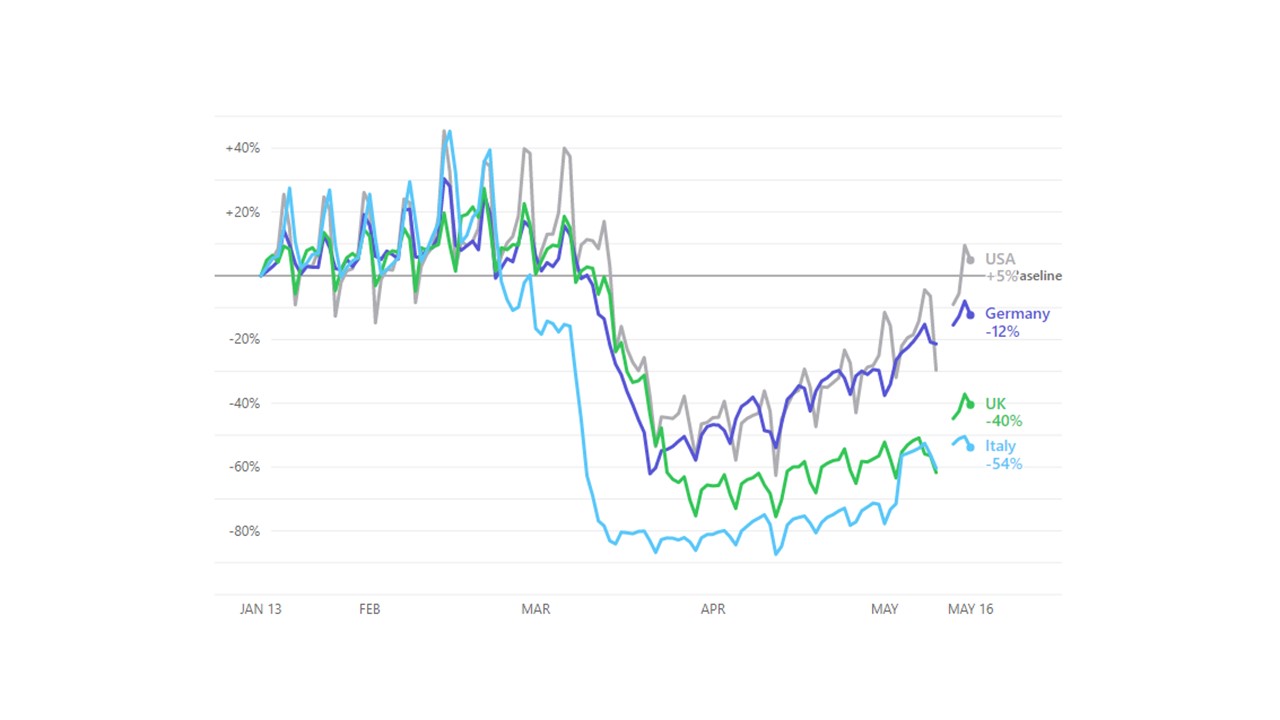
- 05/17/2020 – bet on refinery companies might be good since gasoline price probably will rise fast
Wary of U.S. Crude, Investors Bet on Gasoline and Brent
U.S. gasoline demand is ‘the big enchilada,’ says one analyst
Wary of U.S. crude oil after prices sank below zero, investors are seeking different ways to profit from the energy market as pockets of the world economy emerge from lockdown.
Some fund managers think it is safer, and will prove more lucrative, to invest in refined-oil products or in Brent, a blend of crudes produced in the North Sea. The hottest trade right now: gasoline.
- 05/17/2020 – motivations for Saudis to further cut oil production to boost oil price
Oil Becomes a Risky Game for Saudis
Lower prices put U.S. producers at a disadvantage, but they also cost Riyadh and imperil ties with the U.S.
why should the Saudis fold on their determination to maintain their share of dwindling world oil sales? For three reasons. The market’s large supply overhang will force them to cut because there’s no place to sell. Dwindling U.S. support can only embolden Iran. And political problems for Mr. Trump could lead to a victory of the Democrats, eager to punish Saudi human-rights abuses and improve relations with Tehran.
For Mohammed bin Salman, facing an Iranian threat and a budget chasm, there are no bright solutions. Still, the prince and the president are better off in sync than at loggerheads.
- 03/20/2020 – US might play up the oil price
U.S. Considers Intervention in Saudi-Russia Oil Standoff
- 03/05/2020 – Russia is holding out the deal, we will see what will happen
Deal Or No Deal? OPEC Proposes 1.5 Million Bpd Output Cut
OPEC managed to agree on a massive new production cut—1.5 million bpd—on Thursday, but the deal hinges rather shakily on Russia’s buy-in to the cuts, two Reuters sources said.
And so far, the market is none too happy about the developments.
Yesterday, Russian Energy Minister Alexander Novak left the meeting after three hours of talk, without agreeing to anything. Novak is expected back at the negotiating table on Friday. Then on Thursday, Russia’s Finance Minister Anton Siluanov said that Moscow was prepared for a drop in oil prices should OPEC+ fail to reach a deal.
Despite the 1.5-million bpd tentative agreement by OPEC ministers, WTI and Brent crude slid on Thursday, with WTI falling 0.47% to $46.56 per barrel, while Brent crude was trading down 0.68% to $50.78.
The Iranian Oil Minister Bijan Zanganeh confirmed that OPEC had agreed on an extra cut of 1.5 million bpd, and that Iran was still exempt from any cuts. According to Zanganeh, OPEC wanted non-OPEC states, including Russia, to shoulder 500,000 bpd of that 1.5 million bpd.
As the largest non-OPEC member of the group, Russia would likely be tasked with cutting most of that 500,000 bpd, and so far Russia’s motive to actively pursue higher oil prices is certainly less than its Middle Eastern peers, indicating on multiple occasions that it is positioned better to withstand these lower oil prices, while Russian oil companies have signaled that they are none too happy about further disruptions to their oil production plans.
The OPEC meeting of ministers from OPEC, Russia, and other non-OPEC producers ended Wednesday without agreeing on a solution to the coronavirus problem, with Russia holding out, Reuters reported yesterday afternoon, sewing the first seeds of doubt that the group would be able to get a bigger cut deal done after all.
also, another news from Reuters
OPEC backs biggest oil cut since 2008 crisis, awaits Russia
- 03/04/2020 – Joe Biden proposes clean energy solution, ban on fossil fuel subsidies, global moratorium on offshore drilling in the Arctic. All these will significantly reduce oil supply? But he does not mention about ban on fracking.
Joe’s Plan for a Clean Energy Revolution and Environmental Justice
Demand a worldwide ban on fossil fuel subsidies. There is simply no excuse for subsidizing fossil fuel, either in the United States or around the world.
Pursue a global moratorium on offshore drilling in the Arctic and reestablish climate change as a priority for the Arctic Council.
- 03/03/2020 – some readings on oil
If You Regretted Not Investing More In 2008, Invest In Oil Now
The Elephant in the Room: How OPEC Sets Prices and Limits Carbon Emissions
read the ppt presentation on detailed study of oil price
study oil price history
- 03/03/2020 – smaller oil inventory build-upis good for the oil price. Even though it does not drop, also oil price will be affected by the coronavirus fear though. So far, nobody knows how bad the virus will affect everybody’s life. On the other hand, if panic happens, will oil jump?
Smaller Than Expected Crude Build Fuels Oil Rally
The American Petroleum Institute (API) estimated on Tuesday a smaller than anticipated crude oil inventory build of 1.7 million barrels for the week ending February 28, compared to analyst expectations of a 3.333-million-barrel build in inventory.
In the previous week, the API estimated a smaller than expected build in crude oil inventories of 1.3-million barrels, while the EIA’s estimates were more bullish, reporting a smaller build of 500,000 barrels for the week.
Oil prices were trading up on Tuesday in the hours leading up to the data release, with the markets bolstered by confidence in OPEC’s ability to band together with Russia to cut production even more oil production in order to stabilize the oil markets.
At 11:37 am EST on Tuesday the WTI benchmark was trading up on the day by $0.25 (+0.53%) at $47.00—but still down more than $3 per barrel week on week. The price of a Brent barrel was also trading up on Tuesday, by $0.11 (+0.21%), at $52.01—down by roughly $2.40 week on week.
The API this week also reported a draw of 3.9 million barrels of gasoline for week ending February 28, after last week’s 74,000-barrel build. This week’s draw compares to analyst expectations for a 2.095-million- barrel draw for the week.
Distillate inventories were down by 1.7 million barrels for the week, compared to last week’s 706,000-barrel draw, while Cushing inventories fell by 1.35 million barrels.
another source of news: API data show U.S. crude supplies edged higher last week, sources say:
The American Petroleum Institute reported late Tuesday that U.S. crude supplies rose by 1.7 million barrels for the week ended Feb. 28, according to sources. The API data also reportedly showed gasoline stockpiles fell by 3.9 million barrels, while distillate inventories declined by 1.7 million barrels. Inventory data from the Energy Information Administration will be released Wednesday. The EIA data are expected to show crude inventories rose by 3.5 million barrels last week, according to analysts polled by S&P Global Platts. They also forecast supply declines of 2.8 million barrels for gasoline and 2.4 million barrels for distillates. April West Texas Intermediate crude CLJ20, +1.46% was at $47.12 a barrel in electronic trading, down from its settlement at $47.18 Tuesday on the New York Mercantile Exchange.
- 03/03/2020 – It seems like Russian might be ready to join the force to extend production cut. (“We are ready to cut [our oil production] as much as we are told to. Better to sell less oil but at a higher price,”). We will see.
Lukoil: 1 Million Bpd OPEC+ Cut Send Oil To $60
OPEC and its Russia-led non-OPEC allies could push Brent Crude prices back to $60 a barrel if the coalition agrees to deepen the cuts by up to 1 million bpd, a senior executive at Russia’s second largest oil producer, Lukoil, told Reuters on Tuesday.
OPEC and its allies meet in Vienna later this week to coordinate a joint action in response to the slump in demand and oil prices due to the coronavirus outbreak.
The OPEC+ group’s joint technical committee (JTC) issued a proposal early last month that the producers extend the cuts as-is until the end of 2020 and deepen those cuts in the second quarter in response to the fact that the coronavirus “has had a negative impact on oil demand and oil markets.”
Last week, OPEC’s leader Saudi Arabia was said to be asking members of the OPEC+ group to consider an additional collective cut of 1 million bpd—
that is 400,000 bpd higher than the initial proposal of the panel.
Russia continues to refuse to announce its position regarding deeper cuts by the OPEC+ coalition, but over the weekend Russian President Vladimir Putin suggested that Moscow will continue to play ball and cooperate with OPEC, although it sees current oil prices as “acceptable.”
Speaking to Reuters, Lukoil’s Vice President Leonid Fedun said that a collective OPEC+ cut of between 600,000 bpd and 1 million bpd would be sufficient to push Brent back up to $60 a barrel.
The comments of a top executive from Russia’s second biggest oil producer suggest that Russia will continue its cooperation with OPEC.
“We are ready to cut [our oil production] as much as we are told to. Better to sell less oil but at a higher price,” Fedun told Reuters.
On Monday, the executive told reporters he expects the OPEC+ group to reduce more than 1 million bpd of their collective production, with Russia cutting its output by 200,000 bpd-300,000 bpd.
- 03/03/3020 – Is more production cut coming?
VIENNA (Reuters) – OPEC and its allies will consider making substantial oil production cuts to lift prices that have been battered by the coronavirus outbreak, Algeria’s oil minister said on Tuesday, as ministers began arriving for talks in Vienna this week. The Organization of the Petroleum Exporting Countries and allies including Russia, a group known as OPEC+, have an existing deal in place to cut output from Jan. 1 by 2.1 million barrels per day (bpd), a figure that includes additional voluntary cuts by Saudi Arabia. But this has not been enough to counter the impact of the virus outbreak on China, the world’s biggest oil importer, and around the world, as factories are disrupted, fewer people travel and other business slows, curbing demand for oil. reuters.com/article/us-oil-…
- 03/02/2020 – Russia might collaborate with OPEC to have total production cut of 1 million, which is good.
Oil sees biggest daily gain of 2020 as traders hope for OPEC cuts this week
Oil markets will be closely watching a March 5-6 meeting of the Organization of the Petroleum Exporting Countries and its allies in Vienna to discuss the possibility of additional production cuts in a bid to balance supply and demand.
“The money question is: how many barrels will the OPEC remove from the market?,” said Manish Raj, chief financial officer at Velandera Energy.
“OPEC has two tools at its disposal, namely, the amount of daily barrels cut, and the duration of the cuts,” he told MarketWatch. “One million barrels per day of cuts lasting 90 days will remove 90 million barrels from the market, and will support oil price.”
The Wall Street Journal reported Monday that the Saudis offered a compromise to Russia and other countries, that have OPEC+ cut crude output by 600,000 barrels a day and Saudi Arabia reducing its output by an additional 400,000 barrels a day.
Russian President Vladimir Putin said Sunday that he’s ready to cooperate with OPEC+ partners, and believes the group can help keep long-term oil prices stable.
Putin told a meeting of Russian energy officials and producers on Sunday — who met to discuss fallout from the coronavirus — that “for the Russian budget, for our economy, the current oil price level is acceptable,” according to The Moscow Times.
- 03/02/2020- News from WSJ also confirmed the upcoming potential production cut.
News from WSJ, Saudis Renew Push for Output Cuts as Coronavirus Weakens Oil Business: Outbreak is fueling Saudi Arabia’s push for supply cuts, hurting the oil industry’s profits and leading to project delays.
The OPEC+ group had considered a teleconference amid fears that the coronavirus could spread among its delegates, cartel officials said, but as of Monday afternoon it was proceeding with plans to travel.
Under a compromise offered by the Saudis to Russia and other countries, the group could cut crude output by 600,000 barrels a day, according to the officials. The proposal would see Saudi Arabia reducing its output by an additional 400,000 barrels a day.
The kingdom initially pushed for a collective reduction of one million barrels a day but “believes Russia will eventually agree on a minor cut,” a Saudi official said.
Russian President Vladimir Putin offered a mixed message Sunday, saying he was ready to continue cooperating with OPEC but was satisfied with current oil prices of around $50 a barrel. Early trading Monday didn’t help the Saudis’ cause: Brent crude, the global benchmark, jumped nearly 3% to over $51 a barrel after its worst week since 2008.
- 03/02/2020 – It seems like Putin is still playing poker game on oil production cut.
Putin Hints Russia May Participate In Newest Round Of OPEC Cuts
“I want to stress that for the Russian budget, for our economy, the current oil prices level is acceptable,” Putin said during a meeting with energy industry representatives, as quoted by Reuters. “Our accumulated reserves, including the National Wealth Fund, are enough for ensuring a stable situation, the fulfilment of all budget and social liabilities, even under a possible deterioration of the global economic situation.”
Russia has been budgeting for lower prices for years now, after it suffered the fallout of the 2014 oil price collapse.
Yet the Russian president also recognised the need for steps to be taken to support prices, including, he said, “together with foreign partners,” as the partnership between Russia and OPEC has “proved to be an effective instrument to ensure long-term stability on global energy markets.”
At the same time, however, Putin noted there was no guarantee that deeper production cuts would improve demand for oil, which has been pummelled by the Chinese coronavirus outbreak and its international expansion.
- 03/01/2020 – will Russia collaborate with OPEC to extend production cut? we will see
“I want to stress that for the Russian budget, for our economy, the current oil prices level is acceptable,” Putin told a meeting with Russian energy officials and producers to discuss the coronavirus and its implications. Russia, which has more than $560 billion in its reserves, envisages in its budget an average Brent crude price of $42.40 a barrel, Putin said. He added, however, that this does not set aside the need for action, “including together with foreign partners”Putin also highlighted the difficulty in forecasting moves in oil prices and acknowledged that Russia needs to be ready for various scenarios.Putin asked meeting participants for their views on further possible action on the global oil market and said he hoped that steps taken by Russia to prevent the spread of the coronavirus were effective.”The situation is under control overall,” he said. themoscowtimes.com/2020/03/…
- 03/01/2020 – to re-read Davidson’s posts on oil price
- 02/29/2020 – To understand the negative factors (roll yield and contango) to Oilu bull. to fully understand what is Oilu.
Avoid This Triple Leveraged Oil ETF
Crude Oil, Contango and Roll Yield for Commodity Trading
Contango and roll yield
A market that is steeply backwardated—i.e., one where there is a very steep premium for material available for immediate delivery—often indicates a perception of a current shortage in the underlying commodity. By the same token, a market that is deeply in contango may indicate a perception of a current supply surplus in the commodity.
backwardated = supply shortage in underlying commodity
contango =supply surplus in underlying commodity
Contango is a potential trap for unwary investors. Exchange-traded funds (ETFs) provide an opportunity for small investors to participate in commodity futures markets, which is tempting in periods of low interest rates. Between 2005 and 2010 the number of futures-based commodity ETFs rose from two to ninety-five, and the total assets rose from 3.9 to nearly US$98 billion in the same period.[6] Because the normal course of a futures contract in a market in contango is to decline in price, a fund composed of such contracts buys the contracts at the high price (going forward) and closes them out later at the usually lower spot price. The money raised from the low priced, closed out contracts will not buy the same number of new contracts going forward. Funds can and have lost money even in fairly stable markets.
Daily holdings of OILU: As of 2/28/20
|
Description
|
Exposure Value
(Notional + G/L) |
Market Value ($)
|
Shares/Contracts
|
|---|---|---|---|
| WTI CRUDE OIL FUTURE 04/21/2020 (CLK0) | 515,326,980.00 | – | 11,467.00 |
| NET OTHER ASSETS / CASH | – | $171,895,041.34 | 171,895,041.34 |
-
- As we can see, they have about 25% in cash in the fund. Also from the following fund report, they are growing shares outstanding from 300,008 (in 2017) to 6,700,000 (in 2019) to 8,177,280 (so far in 2020). So the die-out of fund due to contango might not happen. The fund is continuously growing so far.
- 02/29/2020 – OILU’s call options on 20Mar20, 20Apr20 and Jan21, Jan22 might be good choices. Here are the reasons:
- OPEC+ meeting on March 5~6, 2020 will make decision of deeper production cut
- Russia’ break even export oil price is Urals price of $49.20, the lowest breakeven price in over a decade. The current (02/29/2020) Urals price is $46.60. Russia has imminent motivation to cut production.
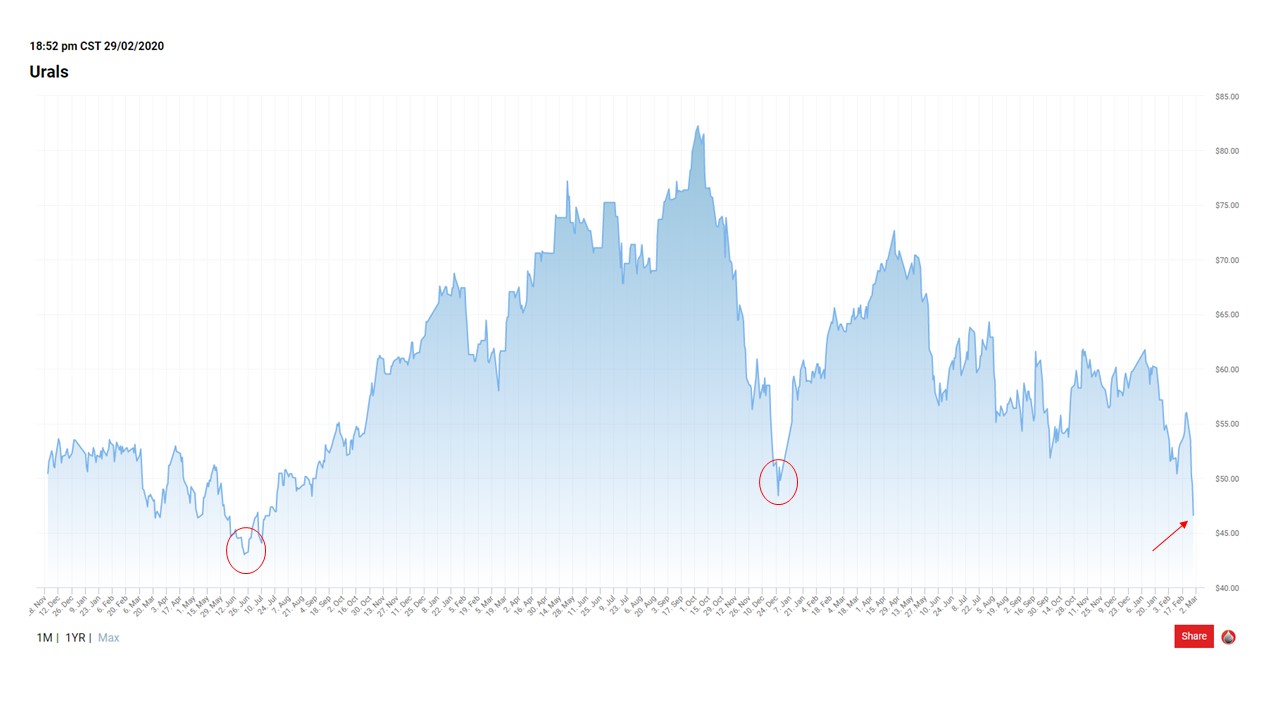
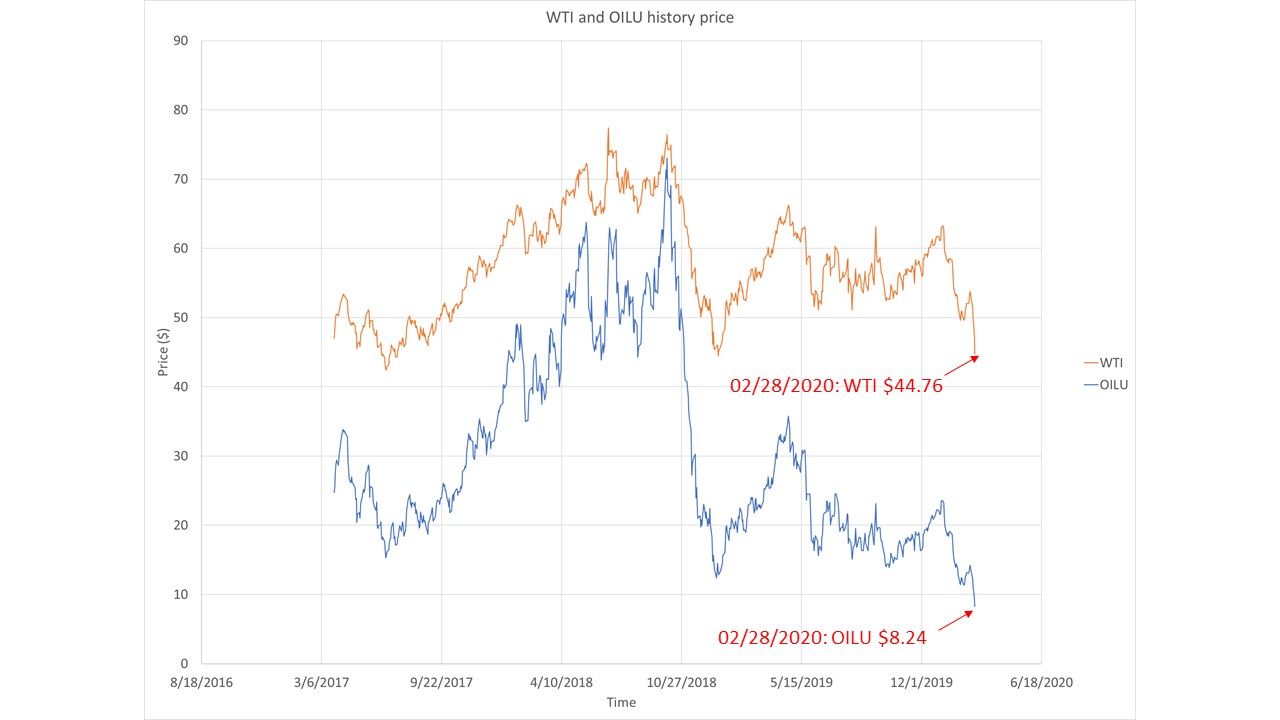
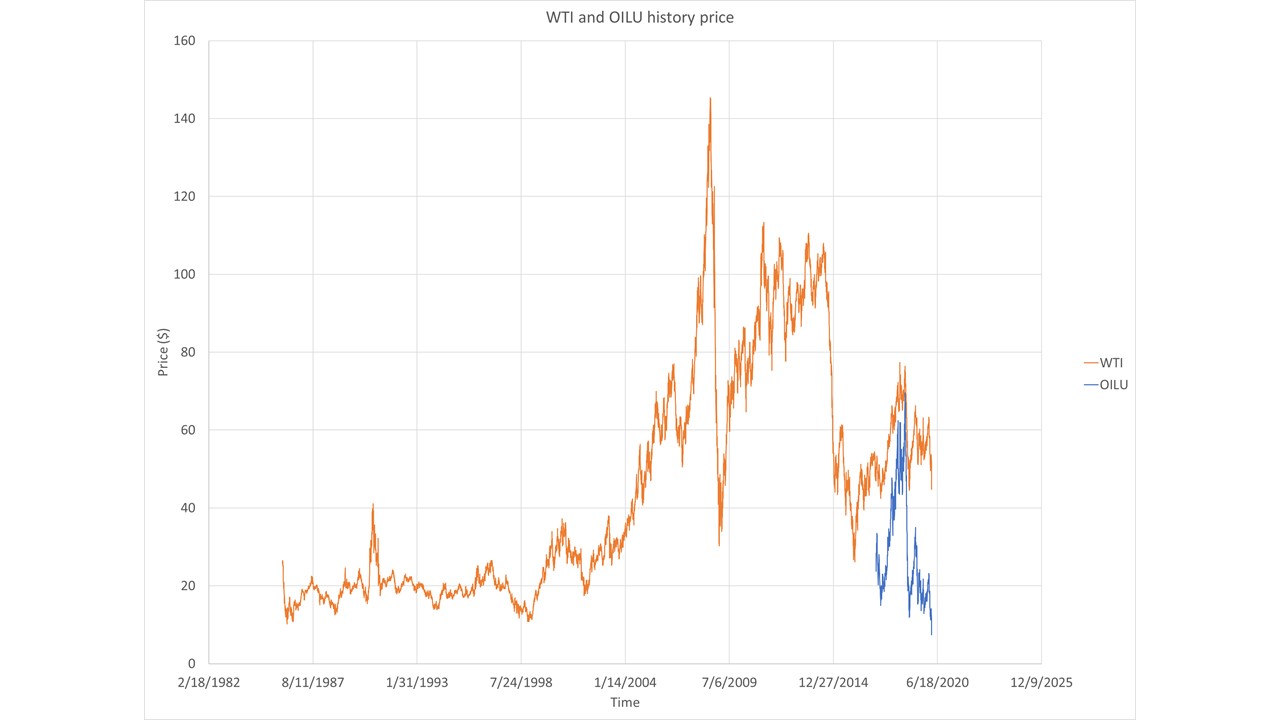
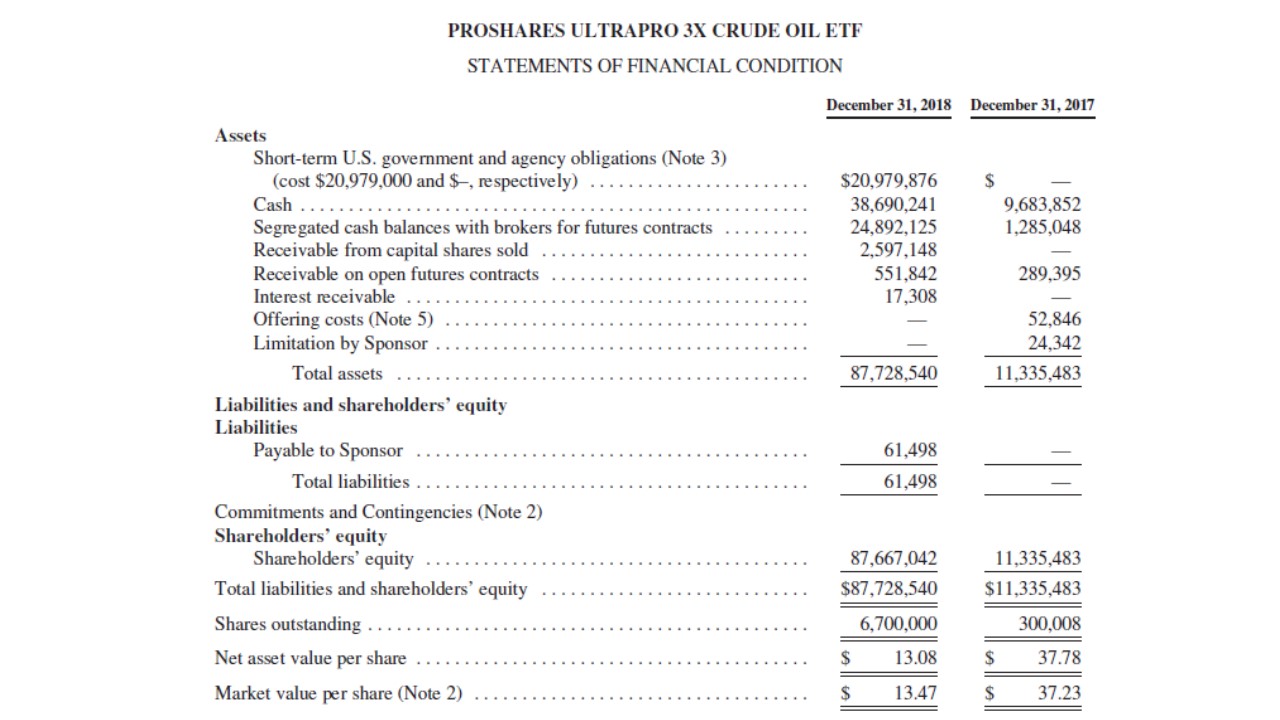


It is noticed that the trading volume reached 8 millions, the same as of the shares outstanding, last Friday! Is it a signal for the bottom?
3. refer to the above first picture:
OPEC+ extended production cuts on May 2017 and Dec 2018 when Urals price dropped below $49.20 (Russia breakeven export oil price). These two cuts significantly rallied oil price.
OPEC+ hiked oil production on Sept 2018 to offset a drop in production from Iran and Venezuela, that is the reason why WTI and OILU dropped significantly right after Oct 03, 2018. – Really important lessons learned.
4. For the upcoming OPEC+ meeting in March, several news sources quote that OPEC+ is leaning towards larger oil cut. Here are the news,
OPEC leaning towards larger oil cuts as virus hits prices, demand: sources
OPEC Prepares to Tackle the Coronavirus Fallout for Oil Prices
OPEC Chief Says Group Is Making Renewed Push for Oil Deal
需求预期继续下调,油价刷新15个月低位!俄罗斯立场有所软化,聚焦下周OPEC+会议
周五(2月28日)美原油刷新15个月低位至45.45美元,因全球公共卫生事件的担忧情绪使得全球股市大跌,进一步削弱了市场的原油需求预期。
多数机构下调了需求预期,且警告称如果市场不确定性延续至二季度可能存在进一步下修的风险。同时数据显示阿联酋富查伊拉燃油交易中心成品油库存本周攀升至创纪录水平,也暗示需求疲软的情况持续。但持续走低的油价使得此前一直拒绝减产的俄罗斯立场有所软化。周四俄罗斯表示,承认公共卫生事件对原油需求造成了损害,将继续和沙特保持合作。短时间市场将关注下周的OPEC+会议能否出台进一步减产措施以支撑油价。
多数机构下调原油需求预期
目前市场仍在寻求全球原油需求走向的线索。在公共卫生事件发生之前,全球需求增长预测在80万桶/日至140万桶/日之间。但随着危机发生,市场普遍下调了需求预期。目前市场最悲观的预测是,2020年需求增长将大幅下滑,甚至不排除是几乎没有增长甚至可能下降的一年。石油巨头英国石油公司新任总裁预测2020年的全球需求增长可能比其此前的预测低30万桶/日至50万桶/日。
此前三大能源机构也下调了原油需求预测。
根据美国能源信息署(EIA)的数据,2020年全年需求增长可能约为103万桶/日,向下修正为37万桶/日。OPEC预测为99万桶/日,比此前低23万桶/日。国际能源署(IEA)预测为82.5万桶/日,向下修正36.5桶/日。IEA执行董事法提赫·比罗尔(Fatih Birol)称,大部分向下修正是基于2020年第一季度需求萎缩43.5万桶/日。比罗尔还警告称,如果公共卫生事件的影响比预期的要持续更长的时间,可能还需要进一步下修需求预期。一份调查显示,受访的10位分析师将2020年需求预期平均下调了50万桶/日,而在公共卫生事件发生前,他们的平均预期为120万桶/日。同时这些分析师认为,如果OPEC+未能进一步减产,这也可能使油价跌至30美元/桶。
阿联酋富查伊拉燃油交易中心成品油库存攀升至创纪录水平
另一个凸显需求下滑的因素是全球原油库存可能进一步增加。
普氏能源数据显示,阿联酋富查伊拉(Fujairah)燃油交易中心成品油库存本周攀升至创纪录水平。富查伊拉燃油交易中心周三公布的数据显示,截至周一,库存较上周增加13%,至2598万桶,打破了2019年4月29日创下的2574.9万桶的历史最高纪录。重质馏分油和渣油库存上升17%,至1516.7万桶,为去年11月25日以来的最高水平。这类燃料包括燃料油和其它用于海上燃料库和发电的重质燃料。中级馏分油(如汽油、柴油、船用汽油、航空燃油和煤油)库存跃升28%,至3402万桶,创下3周高点,而轻质馏分油库存小幅上升1%,至741.1万桶。
持续走低油价令俄罗斯立场有所软化
尽管俄罗斯仍没有就进一步减产表达自己的立场,但是承认因为公共卫生事件导致全球原油需求前景下调。俄罗斯能源部长诺瓦克周四表示,全球公共卫生事件导致全球石油消费量进一步下降。诺瓦克此前曾提到分析师的预测,预计该事件将使2020年的石油需求减少15万桶/日至20万桶/日。同时诺瓦克承认需求受到的打击可能会超过这一估计,即便如此,俄罗斯仍在避免直接回应关于深化OPEC +减产以应对需求损失的提议。诺瓦克在接受记者采访时再次拒绝回答有关俄罗斯关于进一步减产的立场的问题,但称赞了俄罗斯与沙特的伙伴关系,以凸显双方并未和市场所预期的那样出现分歧。
俄罗斯塔斯社(TASS)周四援引诺瓦克的话说,俄罗斯和沙特从未在减产方面存在分歧,俄罗斯对于沙特的合作非常满意,并希望继续保留在OPEC+的框架内保持合作。
对此分析人士表示,俄罗斯态度软化意味着双方最终可能在一定程度上达成一致。
分析人士指出,造成俄罗斯不愿减产的一个关键原因在于当前的油价仍高于俄罗斯的盈亏平衡点,俄罗斯的收支平衡价格低于50美元/桶,最新公布的数据为49美元/桶。
不过随着近期油价持续走低可能迫使俄罗斯不得不考虑给油市提供支撑。
德州农工大学国际事务部主任格雷戈里·高斯表示:“我认为,全球公共卫生事件造成的价格下跌压力将使得俄罗斯同意一定程度的减产,因为油价高于每桶60美元时俄罗斯更可能采取强硬的态度,但是跌至50美元/桶时立场则会明显软化。”
OPEC+欲减产100万桶/日,聚焦下周OPEC+会议
英国《金融时报》报道称,沙特正在敦促OPEC及其盟友将原油日产量再削减100万桶。这一提议高于此前沙特建议额外减产60万桶/日的提议,暗示OPEC进一步下调了原油需求预期。
对此渣打分析师Emily Ashford和Paul Horsnell在报告中表示,俄罗斯拖沓行事有造成油价暴跌的风险。下周即将在维也纳召开OPEC+会议,预计会议谈判的过程将是困难的,如果在减产问题上继续未达成一致,需警惕油价有跌至30美元的风险。
5. fundamentals: inventory is still low
U.S. crude oil inventories are about 3% below the five year average for this time of year. Total motor gasoline inventories decreased by 2.7 million barrels last week and are about 2% above the five year average for this time of year. ” ir.eia.gov/wpsr/wpsrsummary… (wpsrsummary) @gatesoption $XOP $GUSH $OILU Refineries operated at 87.9% of their operable capacity last week. Spring time is near and the numbers are looking good going into a spring/summer blossom.
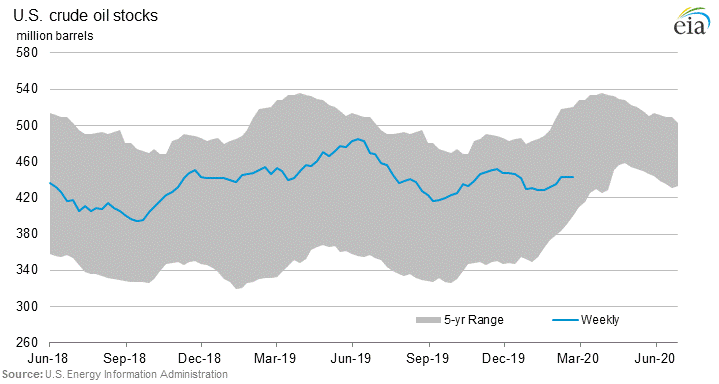
6. Short interest of Oilu is high at present
OILU / ProShares UltraPro 3x Crude Oil short volume is shown in the following chart. Short Volume is a data set that can be used to understand investor sentiment. When an investor makes a short sale, they do so with the belief that a security will decline in price. If the short sale volume increases as a percentage of the total volume, then that suggests a bearish (negative) sentiment by the market. If short sale volume decreases as a percentage of total volume, then that suggests a bullish (positive) sentiment.
- Short Volume
- Total number of short shares traded on the major US markets each day
- Short Volume Ratio
- Total number of short shares traded divided by the total shares traded each day (lower chart)

| Market Date | Short Volume | Total Volume | Short Volume Ratio |
|---|---|---|---|
| 2020-02-28 | 2,347,244 | 8,192,500 | 28.65 |
| 2020-02-27 | 1,192,139 | 5,736,800 | 20.78 |
| 2020-02-26 | 918,892 | 4,577,500 | 20.07 |
| 2020-02-25 | 1,027,909 | 3,613,800 | 28.44 |
| 2020-02-24 | 636,814 | 4,113,400 | 15.48 |
| 2020-02-21 | 220,927 | 1,979,600 | 11.16 |
| 2020-02-20 | 331,311 | 3,292,600 | 10.06 |
| 2020-02-18 | 228,987 | 1,935,400 | 11.83 |
| 2020-02-14 | 402,831 | 2,046,100 | 19.69 |
| 2020-02-13 | 370,382 | 2,248,500 | 16.47 |
7. Other catalysts for oil price to jump: democrats’ ban on shale oil, oil peak
8. There are some risks for oil price to drop further,
渣打分析师Emily Ashford和Paul Horsnell在报告中表示,俄罗斯拖沓行事有造成油价暴跌的风险。俄罗斯目前为止抵制了沙特担忧卫生安全事件削弱石油需求而要求OPEC+同意进一步减产的施压。下周在维也纳召开的艰难的OPEC+会议,以及进一步延误都将造成市场易受短期波动影响,跌破30美元/桶。
基于原油价格崩跌风险低的观点,俄罗斯目前的政策立场似乎只符合其主要能源公司的利益。然而,渣打认为油价暴跌的风险高企,除非俄罗斯能够迅速说服石油市场它有采取行动的政治意愿。
OPEC+ committee struggles for consensus on emergency meeting, extends talks for third day Analysts said Moscow’s apparent reluctance to make further production cuts seems to have delayed a technical committee’s recommendation to OPEC+ on whether to hold an emergency meeting. – however, this was news about two weeks ago on Feb 05. Things might change.
- 02/07/2020 – Russian needs one more week to make decision on whether prod cuts or not
Oil Price Fundamental Daily Forecast – Pressured by Russia Decision to Wait on Production Cuts
U.S. West Texas Intermediate and international-benchmark Brent crude oil futures are edging lower on Friday after Russia said it would need more time before committing to output cuts along with OPEC and other producers amid falling demand for crude as China battles the coronavirus epidemic.
Russian Foreign Minister Sergei Lavrov said on Thursday that Moscow supported cooperation with other producers, in remarks which appeared to boost prices in early trading.
However, Energy Minister Alexander Novak said on Friday Russia needed a few days to analyze the oil market and would clarify its position on deeper cuts next week.
- 02/04/2020 – It seems like OPEC is discussing on larger-than-expected oil production at the meeting and we will have the final decision by sometime next week.
OPEC, Allies Weigh Deeper Oil Production Cuts to Counter Coronavirus’s Impact
Cartel discusses larger-than-expected output curbs at meeting
OPEC and its allies are debating more aggressive oil output cuts than previously considered after reviewing new data Tuesday that showed the coronavirus’s deepening impact on global oil demand, officials at the cartel said.
Delegates from the so-called OPEC-plus alliance are in Vienna for a technical meeting to discuss possible action following the coronavirus outbreak, according to the cartel officials. The virus, which originated in China, has already contributed to a sharp decrease in demand for crude, driving oil prices to bear-market territory on Monday.
The officials said they are set to issue recommendations this week. A final decision would come after a meeting of the Organization of the Petroleum Exporting Countries and its allies, likely sometime next week, they said.
OPEC and a 10-nation group of allies led by Russia had initially considered cutting 500,000 barrels a day, according to officials at the cartel. But a handful of scenarios up for discussion at the gathering Tuesday foresee a need for much larger production cuts, according to officials.
- 02/03/2020 – the cut is estimated to be 500,000 to 1 million barrels per day. We will wait and see
OPEC reportedly considering large production cut as coronavirus prompts crude collapse
- Representatives from OPEC are reportedly planning to meet on Tuesday and Wednesday in Vienna to discuss options to mitigate the impact of a loss of demand arising from the deadly coronavirus outbreak.
- U.S. West Texas Intermediate was trading at $51.51 a barrel on Monday, having fallen more than 15% since the start of the year.
- Brent crude traded at $56.26 a barrel, having fallen 13% in the same period. Brent is now at its lowest level since January 2019.
OPEC and its allies could cut production by more than a million barrels a day at a rescheduled meeting this month, as policymakers work to arrest a double-digit collapse in the price of oil.
“I think it is a ‘go big or go home’ moment for the organization,” Helima Croft, global head of commodity strategy at RBC Capital Markets, told CNBC Monday.
- 01/31/2020 – a new meeting by OPEC and Russia to cut oil production could be as early as the coming week, this might be good for oil price
OPEC, Russia could meet to discuss emergency cuts as coronavirus crushes oil price
- Oil plunged into bear market territory, after hitting a high in early January amid tensions between the U.S. and Iran.
- Now OPEC and its allies are considering moving up their March meeting to discuss deepening their production cuts, amid worries the coronavirus will significantly curb demand.
- “This is a worst case scenario for them—a hit to demand in China,” said John Kilduff, partner with Again Capital.
OPEC officials had been scheduled to meet in early March with Russia and their other non-OPEC partners to review their production deal, and possibly increase their cutbacks. Now market speculation is focused on another large reduction by producers, who are anxious to steady the market.
On Friday, Russian Energy Minister Alexander Novak said that the group could discuss moving its meeting forward but said it needs several more days to monitor the situation. There was some speculation a new meeting could be as early as the coming week.
“If you’re going to meet early, then you had to do something,” said Helima Croft, head of global commodities research at RBC. “I don’t think you would call an early meeting just to roll it over.”
- 01/30/2020 – three drivers will impact the oil priceInvestors are in for what could be a volatile year for crude oil prices, with a trio of catalysts tugging in different directions on demand for the energy source.These three drivers include the Wuhan coronavirus, OPEC+ output adjustments and mounting outcry against the use of fossil fuels for their role in contributing to climate change, according to Regina Mayor, KPMG global head of energy.
How coronavirus, climate change and OPEC will continue to move crude oil prices
- 01/28/2020 – This is good for the world and mideast peace, but negative for OILU
Trump offers two-state peace plan for Israeli-Palestinian conflict amid skepticism
- 01/28/2020 – The successful election of Warren may be slim, but the possibility she and other Dems will get elected might introduce lots of volatility when Nov. 2020 is approaching. It seems like a good idea to watch out for OILU.
The Warren Fracking Ban Would Devastate America
An investigation into Elizabeth Warren’s disastrous promise to ban hydraulic fracturing via executive order on Day One of her presidency
Editor’s Note: The following is the first installment of a three-part series adapted from David L. Bahnsen’s new book, Elizabeth Warren: How Her Presidency Would Destroy the Middle Class and the American Dream.
“On my first day as president, I will sign an executive order that puts a total moratorium on all new fossil fuel leases for drilling offshore and on public lands. And I will ban fracking—everywhere.” — Elizabeth Warren
- 01/28/2020 – Peak oil in Permian might come in the beginning of 2021. This will be very good for OILU
Peak Permian Is Approaching Faster Than You Think
The region that’s driving U.S. oil growth is already showing signs of peaking, making the goal of U.S. energy independence as elusive as ever.
The Permian, spread across west Texas and southeast New Mexico, yields more than a third of all U.S. oil production and it has contributed about two-thirds of the past three years’ worth of growth. Its boom has allowed America to export more than 3 million barrels a day of crude on a regular basis since May — more than every OPEC country except Saudi Arabia and Iraq. But the U.S. still imports twice that volume. A slowdown in the Permian would see that gap widen again.
The latest edition of the EIA’s Drilling Productivity Report (dpr-full), published on Tuesday, shows that the Permian rig count fell to 402 in December, down from 485 a year earlier. Partly offsetting that decline, operators are getting more new oil per rig. But the chart below shows that the biggest increases in efficiency coincided with the steepest declines in the rig count — suggesting the improvement came through a renewed focus on the most productive parts of the play, rather than some technical breakthrough. Those strong gains have not been sustained.
Here are the basic parameters I used to generate production profiles:
- Legacy-well production decline: The EIA shows production from legacy wells falling by 277,000 barrels a day in January. The figure increased at an average rate of 3,500 barrels each month over the previous year, and I have applied that going forward. So the projected decline in February is 280,500 barrels a day, in March it is 284,000, and so on.
- Rig count: I have used three different rig counts. One is flat at 400 rigs from January, the second increases the count by 5 rigs per month to reach 447 by September and is then flat at 450 rigs thereafter. The third sees the rig count continuing to fall by three per month until April, before stabilizing at 390.
- New production: This is either assumed to stay constant at 810 new barrels per rig, or — in the most optimistic case — to rise by five barrels per month. That’s broadly in line with the average increase of 6 barrels per rig per month seen in 2019.
Combinations of those parameters give the four production profiles shown in the chart below.
Permian Futures
If things don’t improve, Permian production will peak in early 2021, then go into decline as legacy well declines outweigh new well production
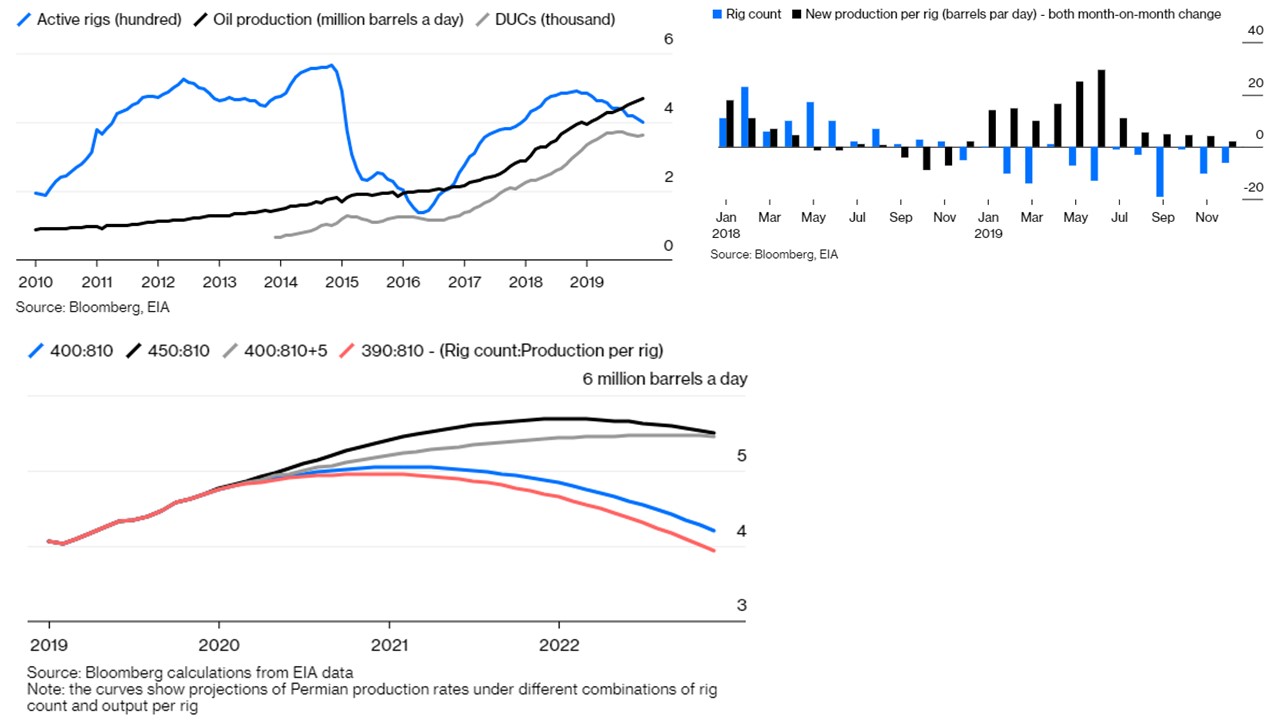
Source: Bloomberg calculations from EIA data
Note: the curves show projections of Permian production rates under different combinations of rig count and output per rig
With the rig count flat at 400 units and the average new output per rig at 810 barrels a day — where we are now — Permian basin production will peak in just over a year’s time, in Feb. 2021. After that it will start to fall at an accelerating rate as the burden of legacy-well declines continues to grow. If the rig count falls by just 10 more units by this April, the peak will occur this year.
- 01/23/2020 – Coronavirus has hit oil stocks, casino stocks (BJK), transportation in China and food companies (YUMC), however, the impact maybe less serious.
History shows China’s coronavirus impact on markets likely to be short-lived
- The World Health Organization calmed financial markets when it announced that it is too soon to call China’s outbreak of a new coronavirus a global emergency.
- But analysts and economists say there could be sharp but temporary reactions to news about the virus in Chinese and other financial markets, until it stops spreading.
- Economists say it’s too soon to estimate any impact on China’s economy, but fears of a China-led global slowdown are hitting some commodities markets, like oil and copper.
“The global response is much more proactive. China is being much more transparent. The virus appears less virulent,” said Peter Boockvar, chief investment officer at Bleakley Global Advisors. “On the other hand, because the world is more mobile now, it has the possibility of spreading quickly. It’s impossible to predict where it goes. There are parts of the market that were questioning any big rebound on the trade deal even before this came out.”
In commodities markets, there has been a dramatic reaction. Globally, oil and refined petroleum products, like jet fuel, diesel and gasoline, have been hit by fears the virus will slow global transportation and chill commerce and travel within China. Brent crude futures are down 4.5% for the week so far, about the same as copper futures, which have fallen on fears of Chinese slowdown could hurt global growth.
“If we have something like SARS right now, we should have 700,000 barrels a day [disrupted], primarily in jet fuels and primarily within China, Southeast Asia and South Asia. … For now, we say 700,000 is the worst case. We’re probably going to have something in the order of 150,000 barrels if we are able to contain the virus, and it has a lower mortality rate than SARS,” he said.
Globally, jet fuel demand is about 7.1 million barrels a day, he said.
“The impact is not tremendous,” he said. “Just because people are in fear of this virus, they are canceling their trips. … It’s tiny, but in the oil market everything is about market economics. Relatively small changes can cause a large drop in prices.”
- 01/23/2020 – today’s WTI price dropped again to $55.65 due to the potential negative effects on travel industries (so less demand on energy) from China’s coronavirus fear. However, according to EIA data, US crude inv continues to drop, which implies a higher oil price.
| Year ago | Most recent | |||||||
|---|---|---|---|---|---|---|---|---|
| 01/18/19 | 01/17/20 | 01/10/20 | 01/03/20 | 12/27/19 | 12/20/19 | 12/13/19 | 12/06/19 | |
| U.S. | 445.0 | 428.1 | 428.5 | 431.1 | 429.9 | 441.4 | 446.8 | 447.9 |
- US Crude Inv fall 0.4mil BBL-~28mil BBL below 5yr mov avg
- US Crude Production 13mil BBL/Day
- US Gasoline Inv rise to seasonal levels, ~260mil BBL
- US Refining Input drops 0.125mill BBL/Day
Little change from last week in the US Oil Situation. US Crude Inv levels drifted towards a deficit of 28mil BBL vs the 5yr mov avg. In 2018 with a more bullish market psychology on economic growth, a deficit over 30mil BBL helped boost $WTI to $75/BBL before expectations suddenly shifted to a ‘Black Swan’ leading to a condition similar to ‘1929 Crash’. The panic which ensued drove prices in 3mos to less than $45/BBL by year end. Prices have grudgingly recovered to the $57-$63/BBL range. While critical economic measures, the Chemical Activity Barometer(CAB), the Trucking Tonnage Index(TTI), Job Openings and etc, remain in uptrends since 2009, market psychology as measured by the level of assets in Retail Money Funds has been increasingly pessimistic. There is a sharp contrast between strong economic performance and an investor public which simply does not believe it.
History shows that this has always been resolved by investors capitulating to economic trends. Once this is resolved, equity prices should price significantly higher with energy related issues leading the pack, in my opinion.
- 01/16/2020 – the projected slow down and peak of shale oil is good for oil price since shale oil price is very sensitive to the production
Just How Serious Is The Shale Slowdown?
The EIA says that U.S. shale growth will slow down this year, but the agency still has growth at a rather optimistic 1.1 million barrels per day (mb/d), putting the annual 2020 average at 13.3 mb/d. The agency does see a more dramatic slowdown in 2021, with growth of just 0.4 mb/d.
- 01/16/2020 – the sentiment of depressing oil price and oil industry is starting to reverse direction
Energy markets are in transition, and investors are retreating. Here’s why
- IHS Markit interviewed institutional and private equity investors with a total of $98 billion in energy assets under management to assess their attitudes on energy investing.
- It revealed that investors have retreated from investing in energy stocks because of the sector’s underperformance due to commodity price volatility, low return on invested capital and long-term supply-demand imbalances.
- Sixty-three percent of respondents agree that the oil and gas sector is currently undervalued.
- 01/09/2020 – this is the first step to jump start the infrastructure projects in US, which will bode well for energy industry and whole economy .
Trump Moves to Speed Infrastructure Projects by Curbing Environmental Reviews
Business, energy groups cheer proposal that environmental advocates say would hamper efforts to slow climate change
“It took four years to build the Golden Gate Bridge, five years to build the Hoover Dam and less than one year—can you believe that—to build the Empire State Building,” Mr. Trump said, citing projects that predated by decades modern environmental concerns and standards, or research on the impacts of such projects. – So US does have the capabilities to build great infrastructures very efficiently. Just too much environmental hurdles.
- 01/08/2020 – oil update from Todd. Crude Inv rise ~1 million BBL, remains ~24.1 million BBL below the 5-year moving avg. According to the correlation between crude inv/5 yr average, the WTI price should be higher than $70.
Current market psychology carries a decent level of economic pessimism, which colors oil price expectations. This will improve should economic reports continue to be more positive than expected.
Economic trends remain quite positive, and higher oil prices should follow, as should higher equity prices.
- US Crude Production remains 12.9 million BBL/Day (Crude imports rose 0.6 million BBL/day)
- Refinery Input falls 0.4 million BBL/day
- US Gasoline Inv rose ~9 million BBL (US exports fell by 0.5 million BBL/day)
- Crude Inv rise ~1 million BBL, remains ~24.1 million BBL below the 5-year moving avg.
Within the EIA data, this week’s report is unchanged. Always part of these reports is an “Unaccounted BBL” measure, which one should read as a statistical error factor. The crude inventory levels for the US carry an error factor of =/- 4-5 million BBL, or about 1% of the 430 million BBL US Crude Inventory (the Strategic Petroleum Reserve excluded) reported this week.
Every market cycle has its own unique non-repeatable market psychology. In the 2010-early 2014 period, a 12 million BBL negative spread to the 5-year moving average was sufficient to keep oil prices elevated in the $100/BBL range. Today, a 24 million BBL deficit when traders still think an “oil glut” exists does not have the same immediate impact. As the data reported demonstrates, US Production and Refining and imports/exports are in constant flux. In any week, a capacity outage may be offset by higher imports or a reduction of inventories from the previous period depending on a combination of short-term and long-term considerations. Trader reactions to a million BBL change in either direction when the error factor is several times this level demonstrates little real comprehension of the significance of this data.
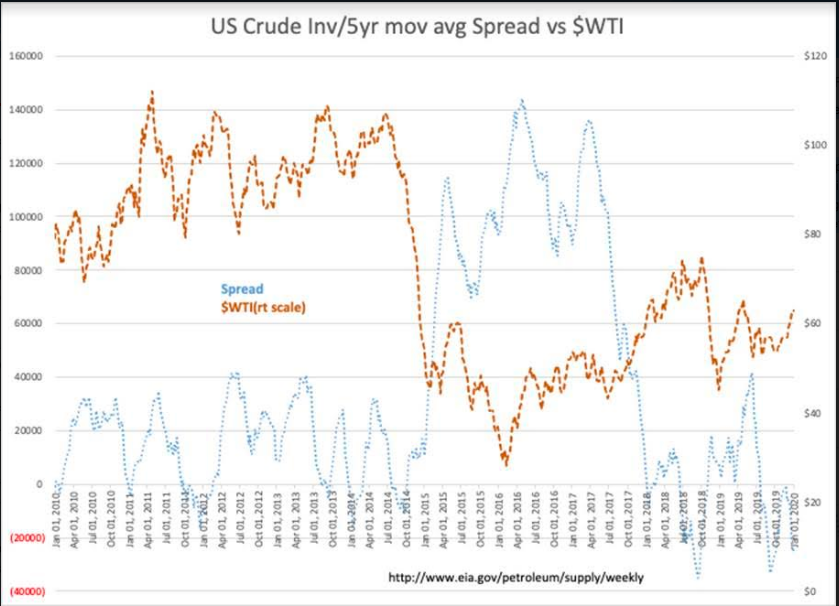
In my opinion, traders more likely than not should gravitate towards thinking we have less supply versus consumption if US Crude Inv continue the current discount to the 5-year moving average. Current market psychology carries a decent level of economic pessimism, which colors oil price expectations. This will improve should economic reports continue to be more positive than expected. Economic trends remain quite positive, and higher oil prices should follow, as should higher equity prices. In particular, energy-related and industrial issues have been depressed since 2014. Any market psychology shift towards optimism will lift these long-out-of-favor sectors.
- 01/06/2020 – potential sanctions on Iraq cause the oil price to spike today
Saber-Rattling With Iraq Adds Uncertainty to Oil Market
Crude prices gain after Trump over the weekend threatened Iraq with sanctions
The nonfarm private sector in the U.S. added 202,000 jobs in December, topping economists’ expectations.
Most of the growth was at medium- and small-sized businesses, according to the ADP National Employment Report. Medium-sized businesses, or those with between 50 and 499 employees, added 88,000 jobs, and small-sized businesses, or those with 49 employees or fewer, added 69,000.
Large businesses, or those with at least 500 employees, added 45,000 employees.
- 01/09/2020 – the weight of oil/gas companies in SP500 drops to 4%, which is 30 years low. However, the importance of energy on economy is still very critical. So in the long term, energy sector has good chance to bounce back.
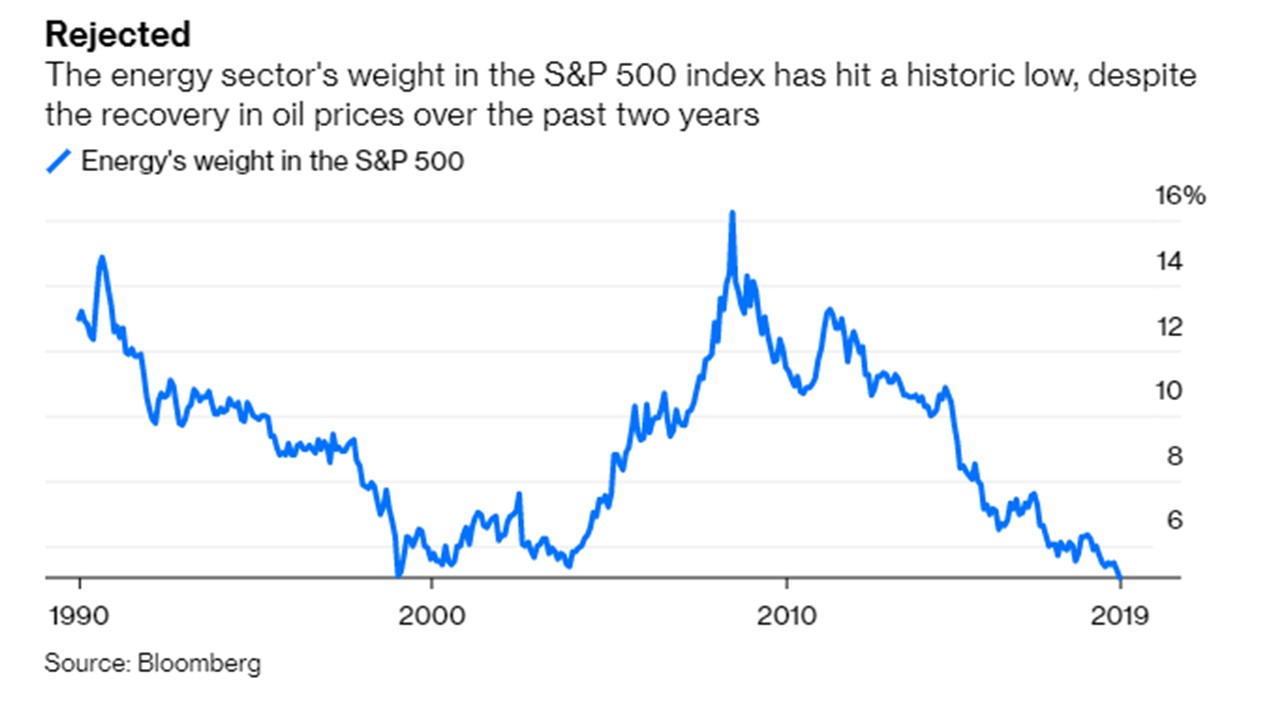
- 01/05/2019 – Below is WTI and OILU price history. It seems like OILU really amplifies the WTI price. In addition, oil inventory is below 5 year average. Production is also below consumption. Plus the unease of mideast – it seems like a good buy for OILU call
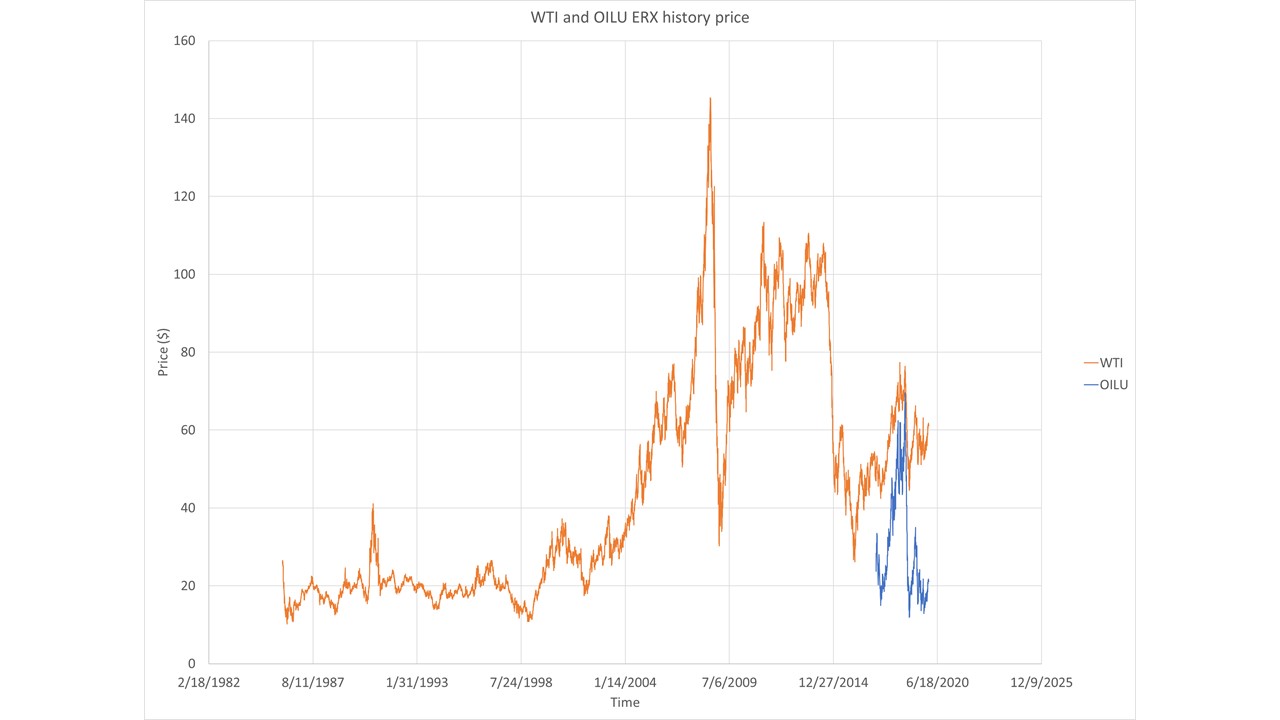
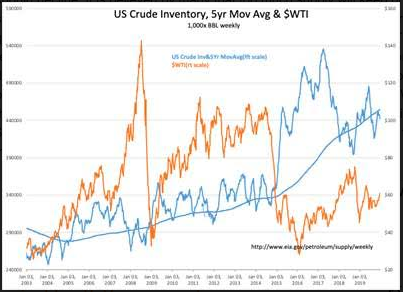
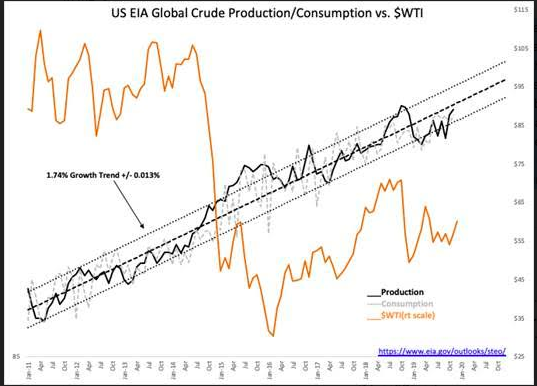
- 12/30/2019 – some bullish predictions from oilprice.com
| Tuesday, 31st December, 2019 | |||||||||
|
|||||||||
 |
|||||||||
| Dear Member ,
Greetings from London. In this week’s newsletter, we will take a quick look at some of the critical figures and data in the energy markets this week. We will then look at some of the key market movers early this week before providing you with the latest analysis of the top news events taking place in the global energy complex over the past few days. We hope you enjoy.
Chart of the Week
– In September, the U.S. exported 89,000 bpd of crude and petroleum products on a net basis, the first time the country had a positive net export balance since 1973. Market Movers Tuesday December 31, 2019 Oil closes out 2019 on a bullish note, pushed higher by renewed economic optimism, the OPEC+ cuts and a thawing U.S.-China trading relationship. “Prices ended the year with optimism close to 70$ /bbl for Brent and we expect them to stay supported through Q1,” OilX chief executive Florian Thaler told Oilprice. “In March all eyes will remain on OPEC and OPEC+ and whether the action of production adjustment will be extended further.” Shell exits Haynesville. Royal Dutch Shell (NYSE: RDS.A) sold off its last position in the Haynesville shale, selling about 55,000 net acres to Castleton Resources. “The divestment is part of Shell’s ongoing strategy to optimize its shale portfolio and direct capital toward developing our high-margin assets located in the Permian, as well as in Canada and Argentina,” a Shell spokesman said in a prepared statement. Israel’s Leviathan starts up. The massive Leviathan gas field in offshore Israel finally came online. The $3.6 billion project has been a decade in the making. Noble Energy and Delek Drilling said the project would double Israel’s gas production, and gas will soon flow to Egypt and Jordan. “Israel is now an energy powerhouse, able to supply all its energy needs and gaining energy independence,” said Delek Drilling Chief Executive Yossi Abu. Protestors storm U.S. embassy in Iraq. Outraged after U.S. airstrikes struck an Iranian-backed Iraqi militia over the weekend, protestors broke through the outer wall of the heavily-fortified U.S. embassy in Baghdad. They did not enter the main embassy, but the protests are another sign of a deteriorating security situation in Iraq, which follows on the heels of massive protests in Basra. U.S. threatens companies with sanctions on Nord Stream 2. The U.S. said that any attempt to hurry up work to complete the Nord Stream 2 pipeline will be met with sanctions. President Trump recently signed into law new sanctions on any companies working on the pipeline, although privately, U.S. officials have admitted that they probably won’t be able to stop the project from reaching completion. Carney: Companies must justify fossil fuel investments. The outgoing governor of the Bank of England, Mark Carney, said that companies and financial institutions need to justify ongoing investment in fossil fuels. He also warned that many assets could end up being “worthless” as the world transitions to renewables. “If we were to burn all those oil and gases, there’s no way we would meet carbon budgets. Up to 80% of coal assets will be stranded, [and] up to half of developed oil reserves,” Carney said. “A question for every company, every financial institution, every asset manager, pension fund or insurer: what’s your plan?” ExxonMobil secures blocks in Eastern Med. ExxonMobil (NYSE: XOM) acquired 1.7 million acres in offshore Egypt. “These awards strengthen our exploration portfolio in the Eastern Mediterranean,” said Mike Cousins, senior vice president of exploration and new ventures at ExxonMobil. Permian premium comes to an end. The premium paid for deals in the Permian has decidedly come to an end, Bloomberg reports. Acquisitions in the Permian were met with investor skepticism this year. “The market does not want to see large premium deals get done,” Steve Trauber, Citigroup Inc.’s global head of energy, told Bloomberg. “The market has reacted negatively, in some cases violently so, when those deals are announced.” Shale boom running on fumes. Shale wells are not producing as much oil and gas as previously thought, which raises questions about the industry’s productivity, profitability and the longevity of the drilling boom. Wells drilled years ago have declined faster than expected, according to a new report. Why did Riyadh agree to restart Neutral Zone? After years offline, the timing of the decision between Saudi Arabia and Kuwait to push for a restart of the Neutral Zone oil fields seems odd. But there are two key reasons why Riyadh’s decision makes sense. We invite you to read several of the most recent articles we have published which may be of interest to you: Will Oil Bulls Rule 2020? That’s all from your midweek intelligence report, we hope you enjoyed it and we´ll be back on Friday, with your latest energy market update, industry intelligence and special report. Best regards, Tom Kool |
|||||||||
- 12/29/2019 – this new law of charge on EVs might curb the growth of EVs, and by the mean time, help with conventional car sales, so help drive up the oil/gas price.
Wave of new laws to take effect in 2020: Electric cars, data privacy, taxes & more
The new year will bring new charges for some owners of electric vehicles as states search for new sources of tax revenue.
In Hawaii, the charge will be $50. In Kansas, $100. In Alabama and Ohio, $200.
Until now, the federal government and some states have offered incentives to people to buy electric vehicles. But federal tax credits are phasing out for some of the most popular models made by Tesla and General Motors, and some states also are switching course.
Other states with new or higher electric vehicle fees taking effect in 2020 include Iowa, Oregon and Utah. California, which accounts for nearly half of all electric vehicle sales in the U.S., is to collect a $100 fee on new “zero-emission” vehicles starting July 1.
- 12/27/2019 – good website for study of oil condition
https://www.macrovoices.com/
- 12/19/2019 – politicians play critical role in the oil/gas production and price. So the upcoming election might add in lots of volatility to the oil/gas price
New U.S. energy secretary slams NY for blocking gas pipelines
- 12/17/2019 – ERX is at 10 years low. There might be a lot of potential for ERX to rally. Oil price is 2/3 from psychology and 1/3 from fundamental. Once the sentiment changes, we will see dramatic jump of oil price. OILU is also very low. OILU has about 2x price range of that of ERX. In addition, same as ERX, OILU also has 2 year Call options. Therefore, I probably can play with OILU than ERX.
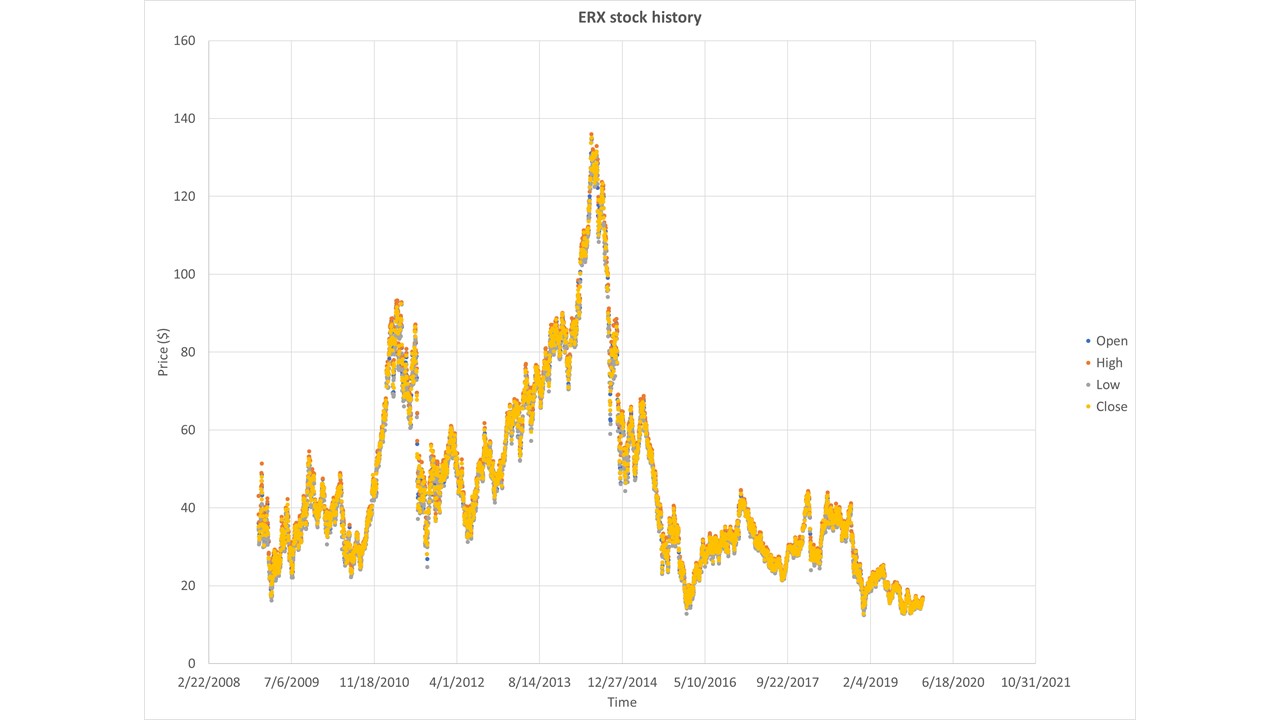
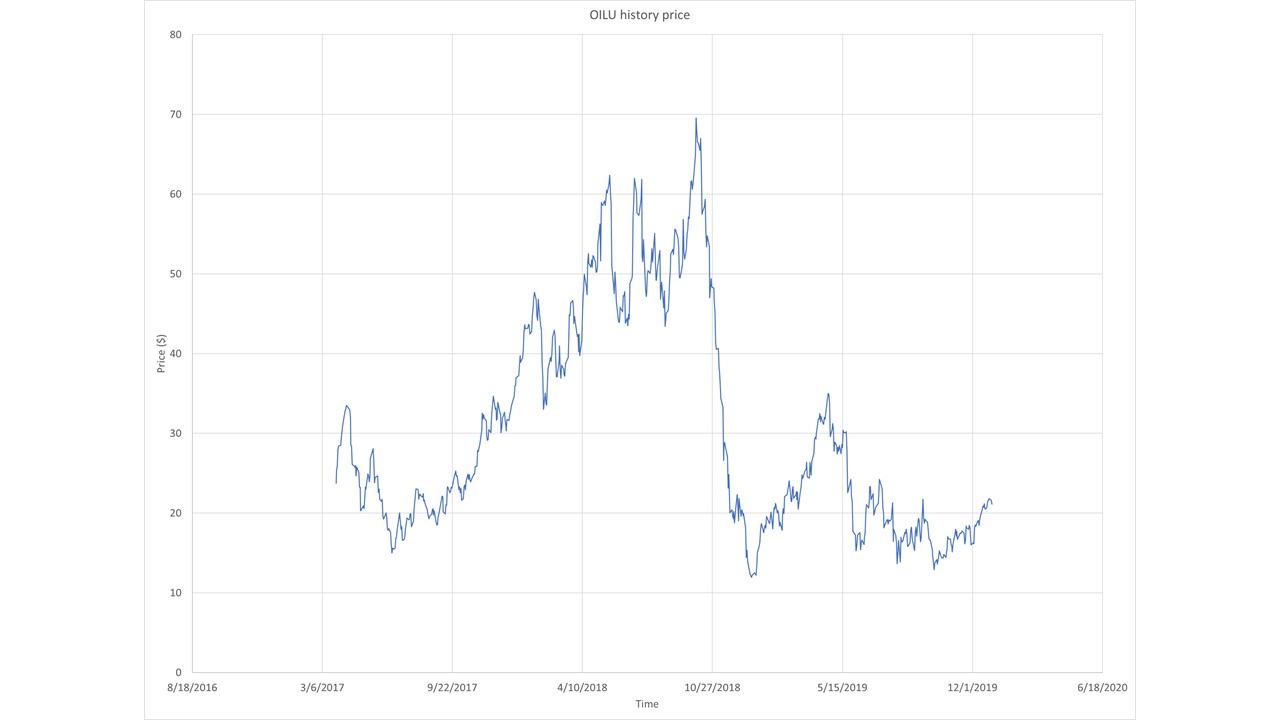
- 12/12/2019 – a great video on the oil situation looking out a year or two
presentation (Macro Voices Presentation)
interview content transcript
Gordon’s core point is that we are at a major inflection point between the shift from the “Age of Abundance” to a “Return to Scarcity” with important implications for a pricing regime change over the next six months.
This regime change will be caused by:
- From the demand perspective, a truce in the trade war or a cyclical economic upswing
- From the supply perspective, the end of non-OPEC production growth
Adding to the list of reasons to be bullish on Oil prices is the “unprecedented negative sentiment” that could make the transition from oil abundance to scarcity a “violent shift,” Gordon says.
| “Here we have a Macro overlay reason to be bullish plus an Oil Macro overlay plus the stocks at all-time lows. This is an amazing setup.” |
05/02/2008 – there are lots of speculation in oil price.
Rigging The Oil Market: ‘Perhaps 60% of Today’s Oil Price is Pure Speculation’
The price of crude oil today is not made according to any traditional relation of supply to demand. It’s controlled by an elaborate financial market system as well as by the four major Anglo-American oil companies. As much as 60% of today’s crude oil price is pure speculation driven by large trader banks and hedge funds. It has nothing to do with the convenient myths of Peak Oil. It has to do with control of oil and its price. How?



